Search suggestions
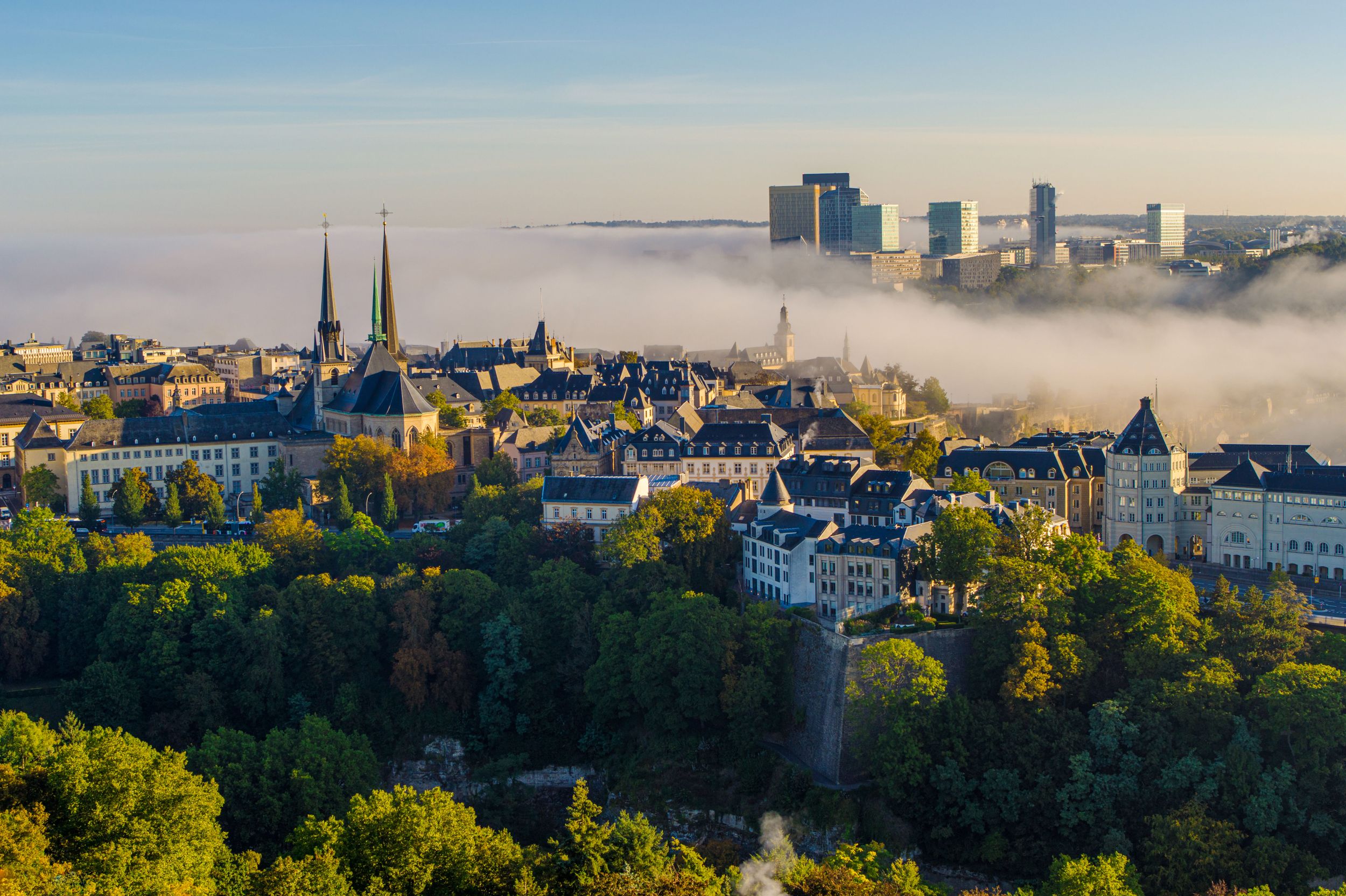

Luxembourg City, the capital
Luxembourg City is a European Capital teeming with tourist attractions. Built on the foundations of a formidable fortress, history and culture can be found at every turn in the city centre. From its UNESCO World Heritage Site Old Quarters to the Petrusse and Bock Casemates and National Museum, the must-see sights are all within walking distance.
And with cosy cafés, and dining and accommodation for all budgets, if you are visiting Europe, Luxembourg City is the perfect location for a city trip or weekend getaway.
Getting around within the country is easy thanks to free public transport. Meanwhile, travel to the capital city of the Grand Duchy of Luxembourg is possible by train from Belgium, France and Germany. The capital is also a 20-minute bus ride from Luxembourg Airport.
What are you waiting for? Visit Luxembourg City!
Luxembourg City Experiences
What strikes many visitors to Luxembourg City is the gorge splitting the centre in two. The deep valleys and high cliffs were the area's strength when "Lucilinburhuc" (small castle) was established here in 963. For almost a thousand years, the area housed a fortress that became so strong it was known as "Gibraltar of the North".
Luxembourg City has since forged a new visual identity out of the castle ruins. It built architectural gems such as "Adolphe Bridge", the town hall, "Place d'Armes", the Grand Ducal Palace, Notre-Dame cathedral, places for reflection like the "Gëlle Fra" (golden lady) and romantic riverside gardens in the Grund and city parks.
Today, the city continues to evolve architecturally making it a top tourism destination. In the Old City, you will see abbeys and other buildings that have been transformed into public cultural highlights, not forgetting modern districts like Kirchberg, where you will find the magnificent Modern Art museum Mudam and Philharmonie buildings. With an impressive array of annual events such as the Schueberfouer funfair, there is always something to see in Luxembourg City, no matter what time of year you visit.
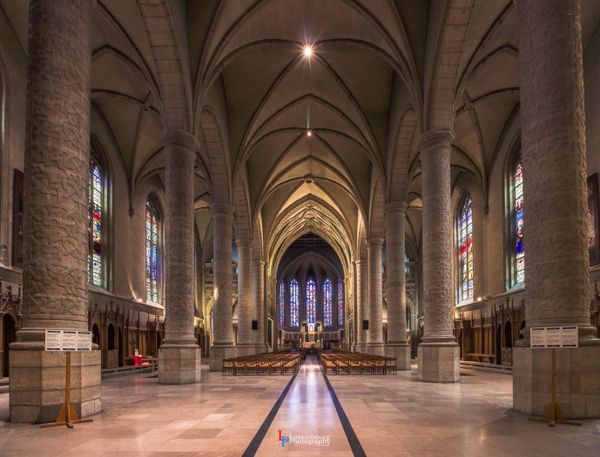
Cathedral Notre-Dame
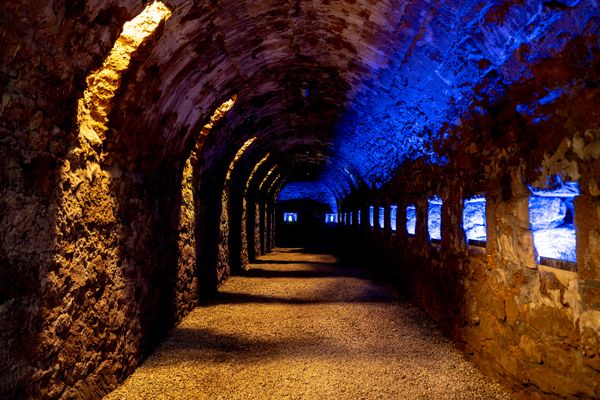
Petrusse Casemates
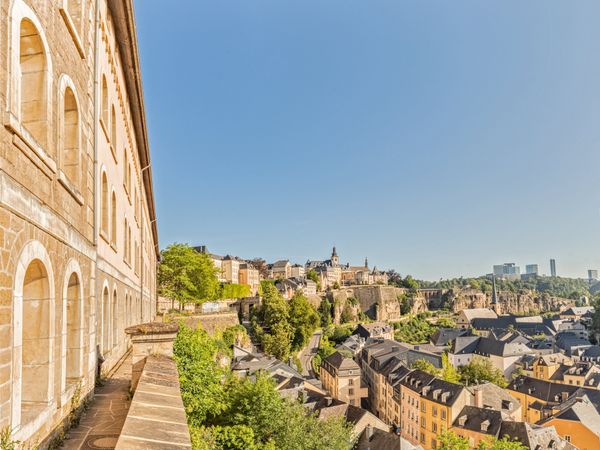
Chemin de la Corniche
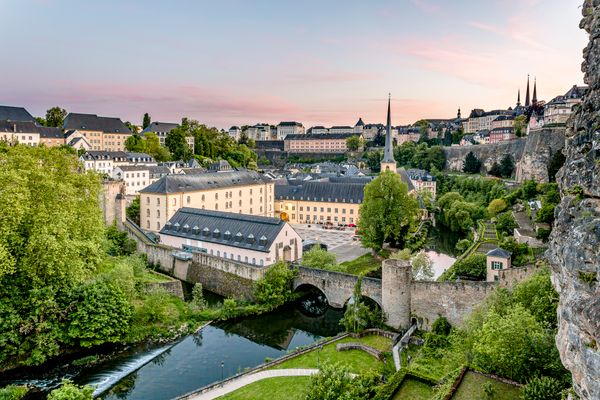
neimënster - cultural centre
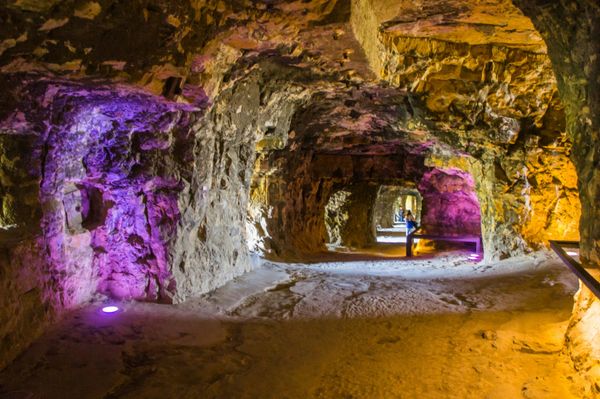
Bock Casemates
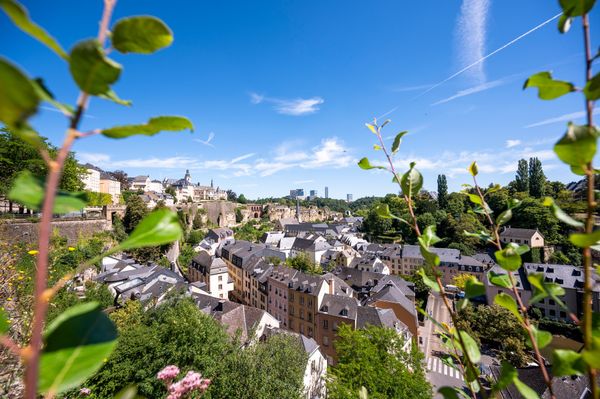
Wenzel circular walk
Read our travel stories.
Meet fascinating personalities, pick up insider tourist tips and generally get inspiration for your next trip in our travel stories. Travel underground with connoisseurs of the secret casemates, the centuries-old network of tunnels beneath the city, and hear about local legends like Melusina the mermaid. Cross the cobbled streets with a theatre director, explore a bustling village in the city in the“Fëschmaart” or fish market and ramble through the UNESCO World Heritage site with two architects.
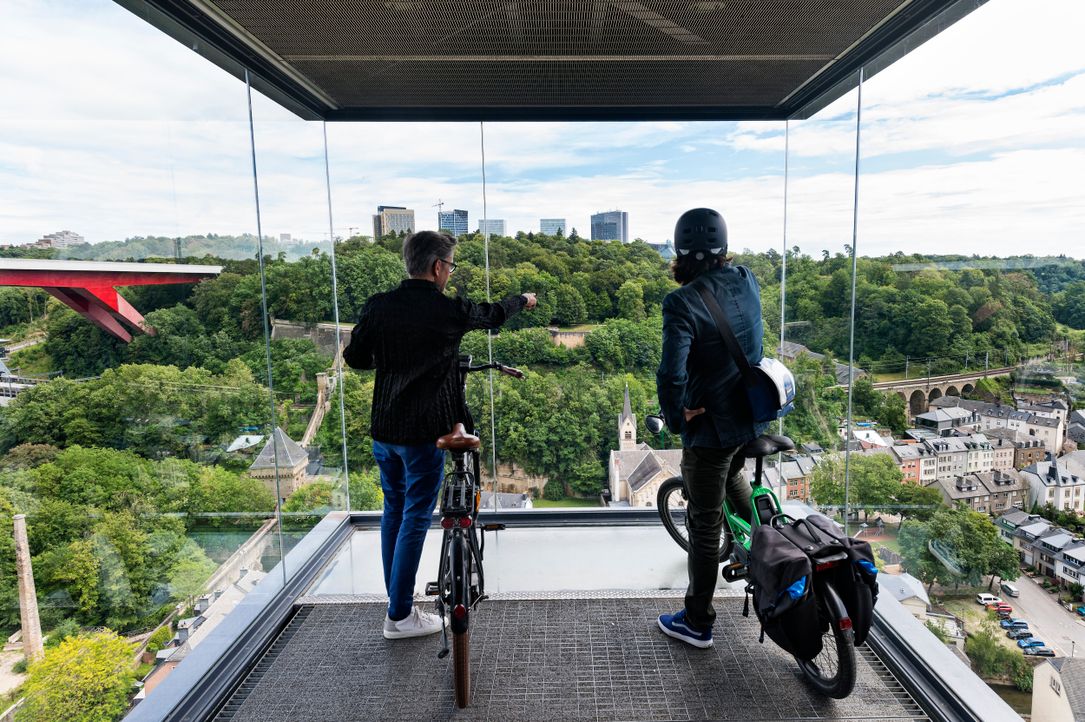
Hidden tunnels and talking stones
The casemates are a fascinating series of tunnels running for several kilometres beneath the old town district of Luxembourg City, even extending as far as the Kirchberg plateau.
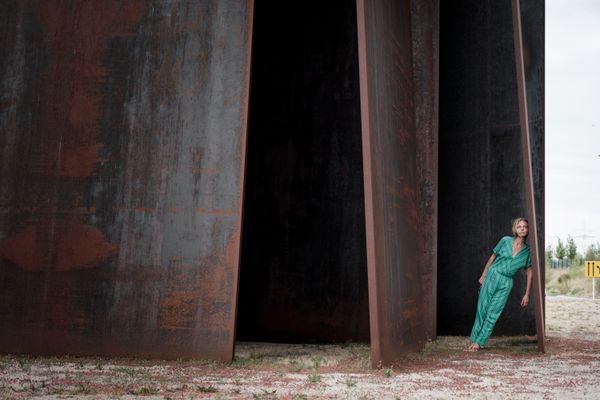
The city, her stage
For theatre director Anne Simon, all the world is a stage. Whether she is inside or outside, everyone is an actor and everyday objects become props.
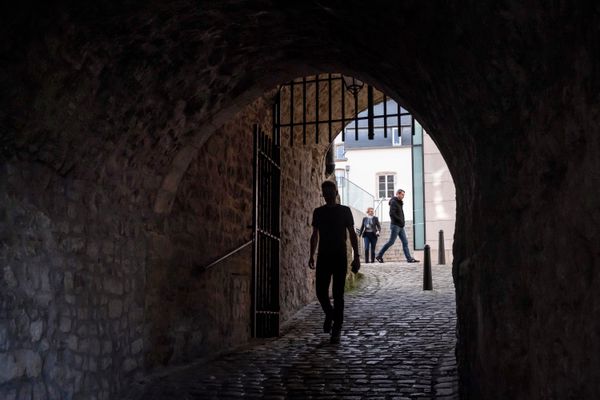
A bespoke neighbourhood
The Fëschmaart is a village in the city, shaped and brought to life by dedicated merchants and restaurateurs.
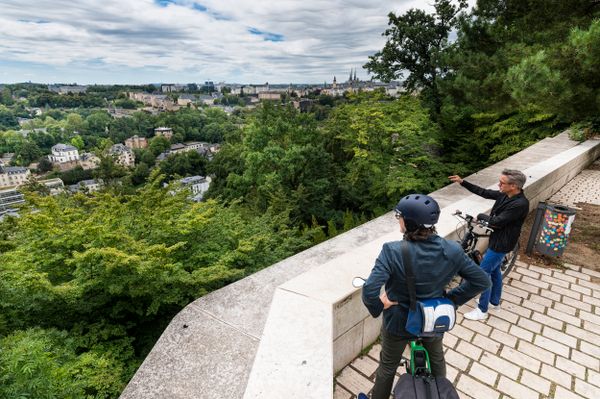
A city that connects
Luxembourg’s capital is as diverse as its residents, who hail from more than 100 nations.
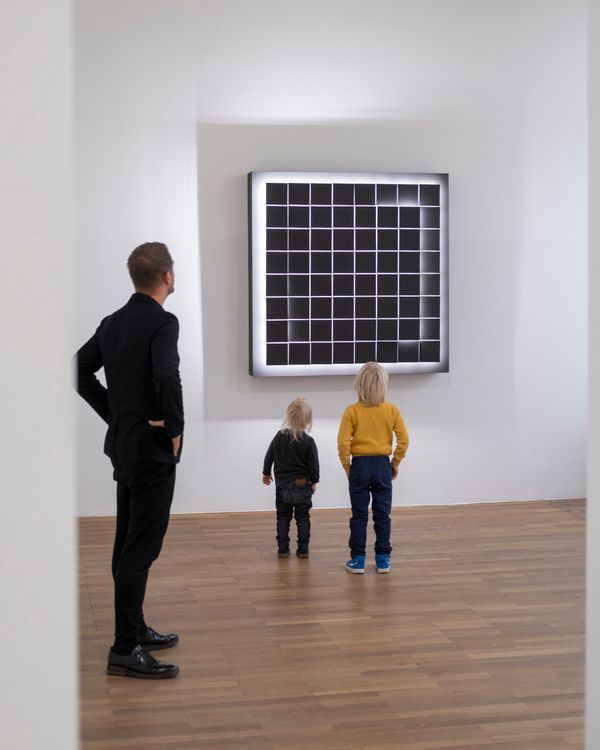
Art as a stroll
The compact capital truly makes museum visits a stroll. The so-called “MuseumSmile” is home to seven museums.
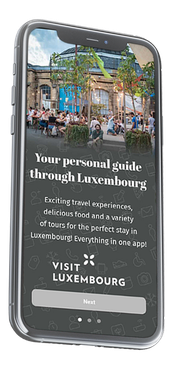
VisitLuxembourg App
- Your personal travel experience
- Free entry and discounts with the LuxembourgCard
- The best tips and tours

More things to do
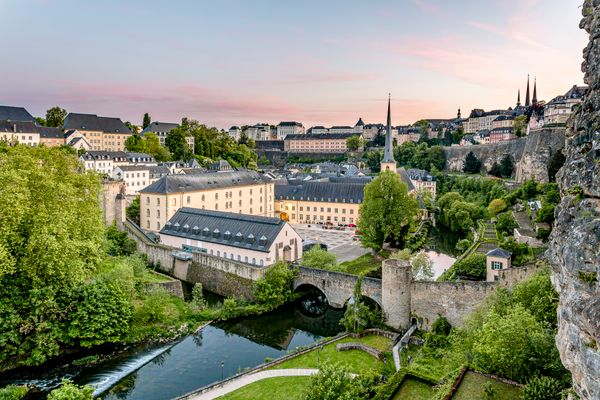
UNESCO World Heritage
Stroll through ancient city streets simmering with stories, a former mining region reclaimed by nature, spectacular sandstone landscapes and discover an iconic photo exhibition.
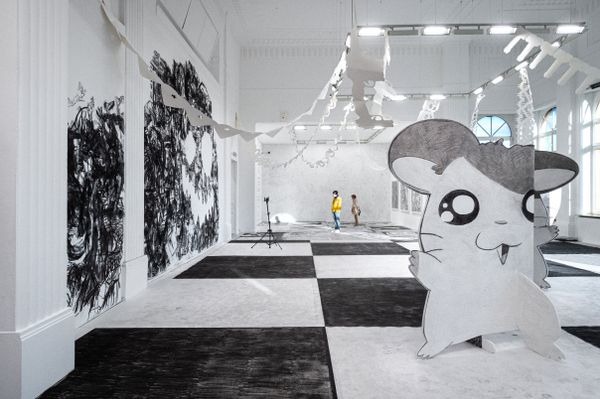
Art & Museums
Luxembourg has over 60 art and history museums, galleries and cultural heritage spaces. Wander around, choose what you fancy, and relax into the experience.
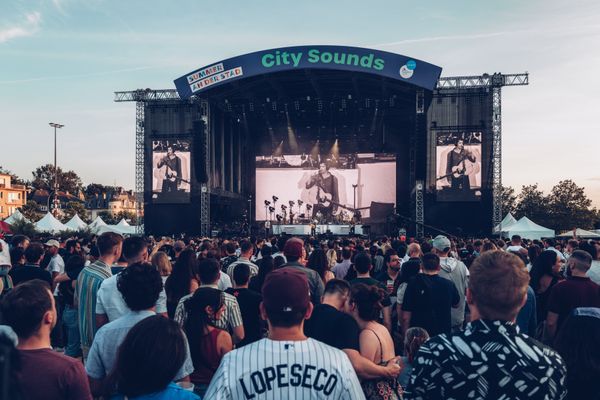
Festivals & Events
What attracts people to Luxembourg year after year? And what do the locals also look forward to? A whole range of events and festivals that are permanently marked on people’s calendars.
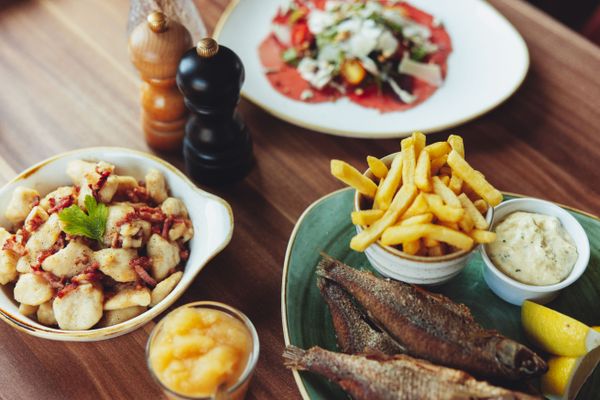
Food & Drink
Visit Luxembourg to discover food and drink made with high quality ingredients, flavours and regional knowhow.
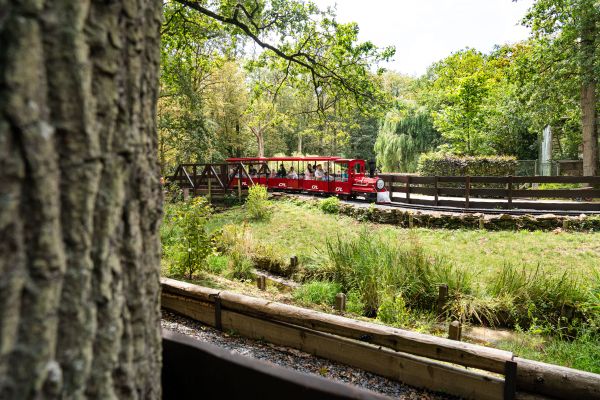
Activities with children
Luxembourg is full of activities for family fun whatever the weather.
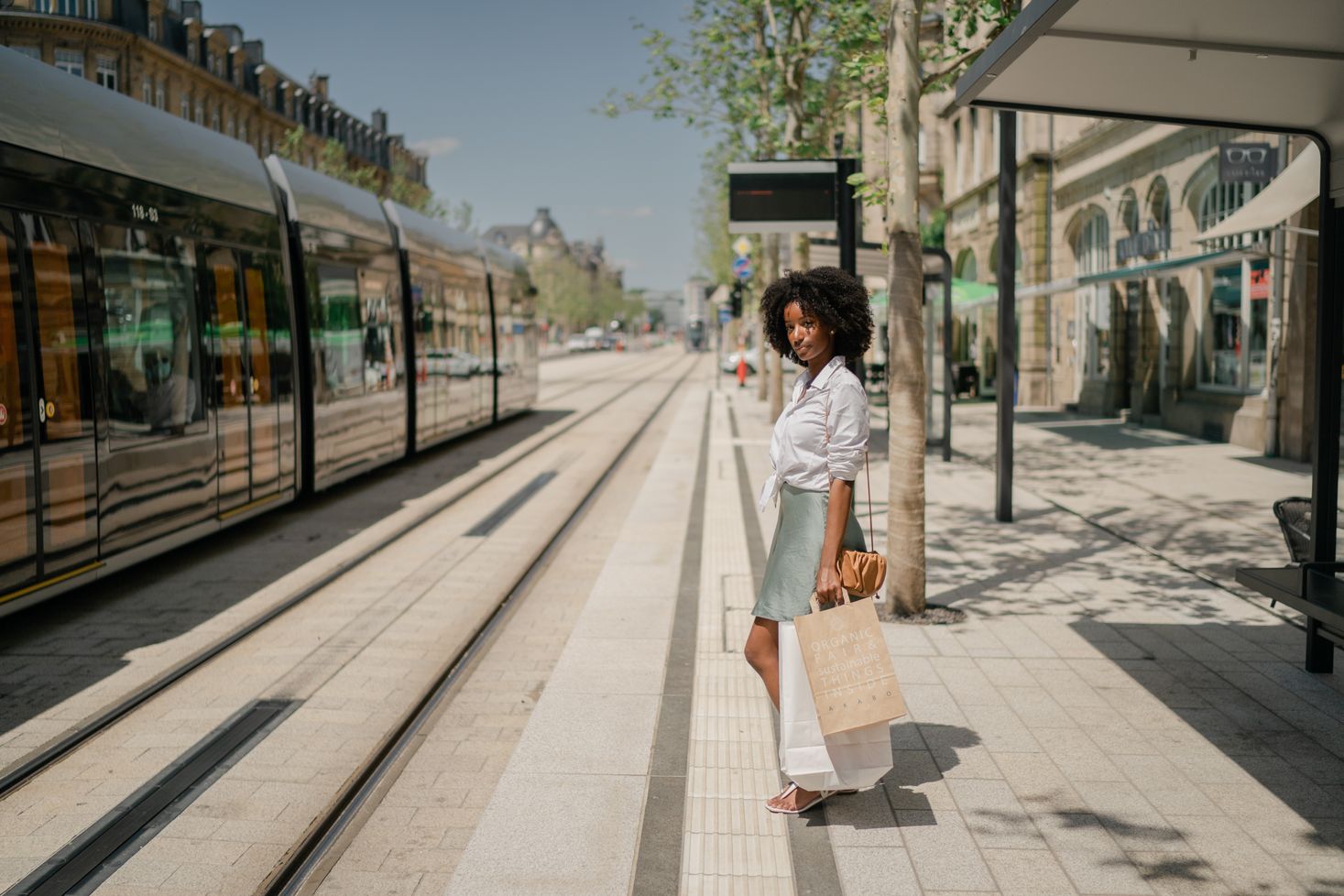
Planning your stay
City impressions #visitluxembourg, for more information, destinations.
Explore the capital city and regions
The capital city
The north of Luxembourg
Central/western region
Luxembourg's Little Switzerland
Luxembourg's wine region
Land of the red rocks

Votre panier contient 0 Article(s) ( €)
- Festival and traditions
- Artistic creation
- Monarchy and institutions
- International openness
- Territory and Climate
- Culinary delights
- Sustainable development
- Quality of life
- Settling in
- Health and social security
- Arts and culture
- Nature and discovery
- Employment in Luxembourg
- Studying in Luxembourg
- Competitiveness
- Key sectors
- Your business in Luxembourg

Last update 08.03.2024
- The Top 10 Things To...
The Top 20 Things to See and Do in Luxembourg City

For a small capital, Luxembourg City is crammed with exciting things to see and do. Here’s what you can’t miss when in this beautiful city.
Luxembourg City is a charming combination of ancient and modern, local and global, simplicity and luxury. With many companies choosing Luxembourg to host their offices, the capital offers a real multicultural perspective, complete with an intriguing blend of history, culture, art and natural landscapes. These are the best things to see and do to capture the city’s character.
1. Luxembourg Old Town
Historical Landmark

The Old Town of Luxembourg is an amazing place to wander around, with its narrow, winding alleyways and historic buildings. It’s also a great area to enjoy spectacular views of its stone bridges across the river and the former fortress of Luxembourg’s original city walls. The old town features on the Luxembourg city walking tour.
2. Casemates du Bock
Archaeological site

Casemates du Bock is a 17-kilometre-long (11-mile-long) tunnel, easily accessible beneath the former castle at Montée de Clausen. Initially carved out of the rock by the Spanish beginning in 1644, this underground tunnel acted as a shelter for more than 35,000 residents and thousands of soldiers during World War II. Comprising atmospheric passages, different levels and impressive rock stairways, the historic tunnel of Casemates is now a Unesco World Heritage site. The Bock Cliff features on the Luxembourg’s most Photogenic Spots with a Local tour.
3. Grand Ducal Palace

4. Lëtzebuerg City Museum

5. Château de Vianden

6. Notre-Dame Cathedral
Cathedral, Church

Built between 1613 and 1621 by the Jesuit religious order, Luxembourg’s Notre-Dame Cathedral is a must-see, with the most memorable part of this imposing building being the Baroque-inspired north gate. Inside, the cathedral is embellished with luxurious stained glass dating from the 19th and 20th centuries, modern sculptures and a tiny Madonna and Child statue above the altar. The graves of the royal family can be found in the crypt, safeguarded by two lions designed by Auguste Trémont.
7. Luxembourg Philharmonic Orchestra
Concert Hall

The concert hall of the Luxembourg Philharmonic Orchestra represents the multicultural character of the city; this outstanding piece of contemporary architecture hosts great conductors, soloists and orchestras from all over the world. The remarkable quality of its acoustics and close collaboration with significant musical personalities have made it one of the best concert halls in Europe.
8. Passerelle

This historic Passerelle (the Luxembourg Viaduct) offers visitors picturesque, panoramic views of Luxembourg City. Built between 1859 and 1861 by the Waring Brothers (a British company), the Passarelle connected the city centre with the new railway station. Also known as the Old Bridge, the Passerelle is well worth a visit when you’re in the city – even if just for the fantastic photo opportunities.
9. Abbey Museum
Monastery, Museum

10. Kirchberg

The Most Impressive Buildings in Luxembourg City
11. european court of justice.

The European Court of Justice is the highest court in the European Union and is located in the Kirchberg Plateau, just east of Luxembourg City . Originally constructed in 1973, the building has undergone a number of facelifts and additions. The architect of the fourth extension, Dominique Perrault , explained his thought process behind the use of such a striking gold colour on the twin towers: “I thought the sky over Luxembourg is often so sad that it would be nice, somehow, to catch the sun and bring it here”. Recommended by Lindsay Drake
12. Galeries Lafayette
One of Luxembourg’s most impressive buildings isn’t, like so many others, an official government building or financial headquarter, but an homage to the art of shopping: Foster + Partners’ Galeries Lafayette department store. Located in the centre of Luxembourg, at the end of Grand Rue and Rue Aldringen, it’s the first building in a major mixed-used development by the architects. The building is meant to be ‘timeless yet contemporary’, and its undulating glass facade is an attention-drawing addition to the city’s town centre. Luxembourg’s newest department store also features a sky garden, complete with rooftop restaurant and bar. Recommended by Lindsay Drake
13. Luxembourg City Hall

Luxembourg City Hall (Hôtel de Ville de Luxembourg) was built in the 1830s by French architect Justin Rémont and made using materials from a deconstructed 13th-century Franciscan monastery, which stood in its place centuries before. The City Hall, located on Place Guillaume II, now serves as the centre of local government and is used as the private office of the Mayor of Luxembourg City . Its Neoclassical style has aged well, and the elegant building is still a worthy symbol of political power in the Grand Duchy’s capital. Recommended by Lindsay Drake
14. Banque et Caisse d'Epargne de l’Etat

This beautiful building, designed by architect Jean-Pierre Koenig and constructed in 1913, serves as the headquarters of the Luxembourg Savings Bank BCEE (Spuerkeess). The original building was too small, so an annex was added, followed by a second mounting in 1933. This impressive structure is located on Place de Metz and overlooks the famous Adolphe Bridge. Though it was built in the 20th century, the Savings Bank was designed in the Neo-Renaissance style that evokes the Renaissance period . Recommended by Lindsay Drake
15. European Investment Bank

In 2002, the European Investment Bank held an anonymous international competition for architects and designers who pitched their ideas for the bank’s east building. The competition was won by German architect Christoph Ingenhoven, whose design encompassed EIB’s philosophy of transparency and environmental stewardship. It was the first building in continental Europe, and one of the first in the world, to be awarded the UK’s BREEAM Bespoke ‘high environmental quality’ certification with a ‘very good’ rating. Recommended by Lindsay Drake
16. Grand Duke Jean Museum of Modern Art

Located in the Kirchberg district, this impressive structure was erected in 2006 atop the ruins of an abandoned fortress and beside another. The museum, also known as MUDAM, was designed by Ieoh Ming Pei, the Chinese-American architect behind the glass pyramid at the Louvre. The building caused a great deal of controversy and strife within the Grand Duchy, due to its strikingly modern appearance. Although it is called a modern art museum, the budget did not allow for acquiring a modernist collection. Instead, MUDAM is home to contemporary art pieces by 100 artists, including Andy Warhol , Bruce Nauman and Julian Schnabel. Recommended by Lindsay Drake
The Best Historic Monuments to See in Luxembourg City
17. the monument of remembrance.

18. Equestrian Statue of William II
19. goethe memorial.

20. Lambert Redoubt
Since you are here, we would like to share our vision for the future of travel - and the direction culture trip is moving in..
Culture Trip launched in 2011 with a simple yet passionate mission: to inspire people to go beyond their boundaries and experience what makes a place, its people and its culture special and meaningful — and this is still in our DNA today. We are proud that, for more than a decade, millions like you have trusted our award-winning recommendations by people who deeply understand what makes certain places and communities so special.
Increasingly we believe the world needs more meaningful, real-life connections between curious travellers keen to explore the world in a more responsible way. That is why we have intensively curated a collection of premium small-group trips as an invitation to meet and connect with new, like-minded people for once-in-a-lifetime experiences in three categories: Culture Trips, Rail Trips and Private Trips. Our Trips are suitable for both solo travelers, couples and friends who want to explore the world together.
Culture Trips are deeply immersive 5 to 16 days itineraries, that combine authentic local experiences, exciting activities and 4-5* accommodation to look forward to at the end of each day. Our Rail Trips are our most planet-friendly itineraries that invite you to take the scenic route, relax whilst getting under the skin of a destination. Our Private Trips are fully tailored itineraries, curated by our Travel Experts specifically for you, your friends or your family.
We know that many of you worry about the environmental impact of travel and are looking for ways of expanding horizons in ways that do minimal harm - and may even bring benefits. We are committed to go as far as possible in curating our trips with care for the planet. That is why all of our trips are flightless in destination, fully carbon offset - and we have ambitious plans to be net zero in the very near future.

Restaurants
The 10 best restaurants in ville haute, luxembourg city.

The Best Artisanal Shops in Luxembourg City: An Expert’s Guide

The Best Vegan and Vegetarian Restaurants in Luxembourg City

Places to Stay
The best hotels in luxembourg city.

Food & Drink
The best brunch spots in luxembourg city.

Health & Wellness
The best yoga studios in luxembourg.

Guides & Tips
How to make the most of luxembourg if you only have one day.

Architecture

A Traveller's Guide to Luxembourg

Bars & Cafes
The best bars in luxembourg city.

Explore the Most Interesting Neighbourhoods in Luxembourg City

Find Luxembourg's Best Coffee With Culture Trip's Expert's Guide
Culture trip spring sale, save up to $1,100 on our unique small-group trips limited spots..

- Post ID: 482784
- Sponsored? No
- View Payload
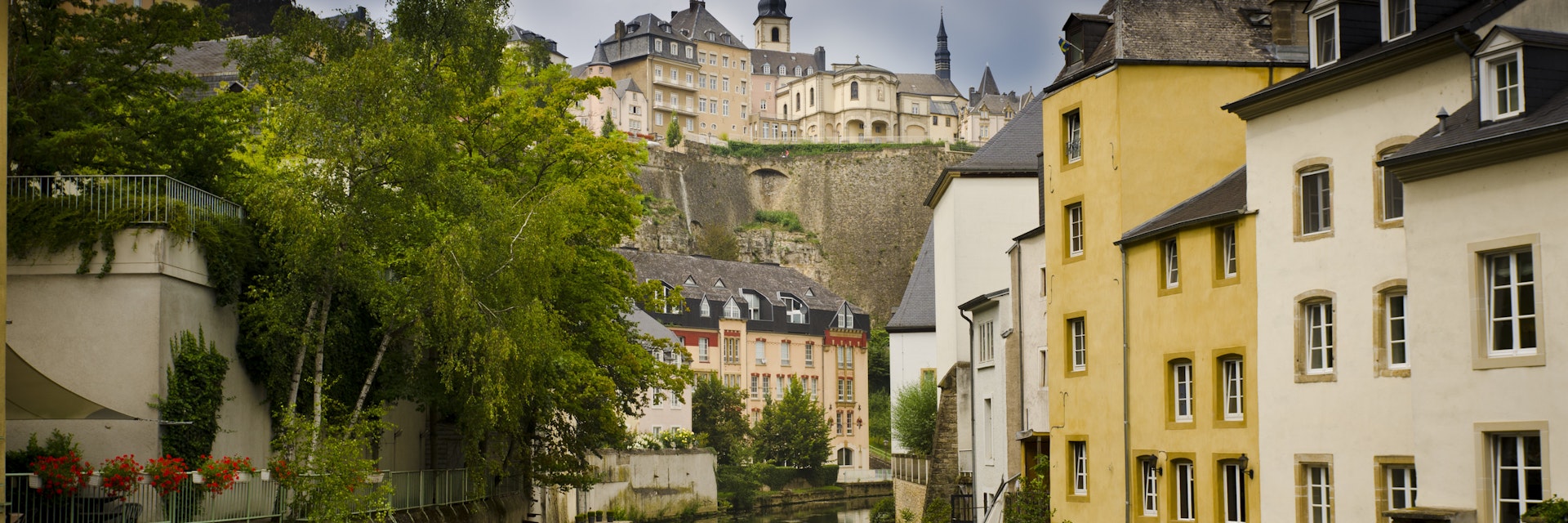
Alexander JE Bradley
Luxembourg City
Majestically set across the deep gorges of the Alzette and Pétrusse rivers, Luxembourg City is one of Europe's most scenic capitals. Its Unesco-listed Old Town is a warren of tunnels, nooks and crannies sheltering some outstanding museums, as well as lively drinking and dining scenes. The city is famed for its financial and EU centres, making weekends an ideal time to visit, as hotel prices drop dramatically.
Attractions
Must-see attractions.
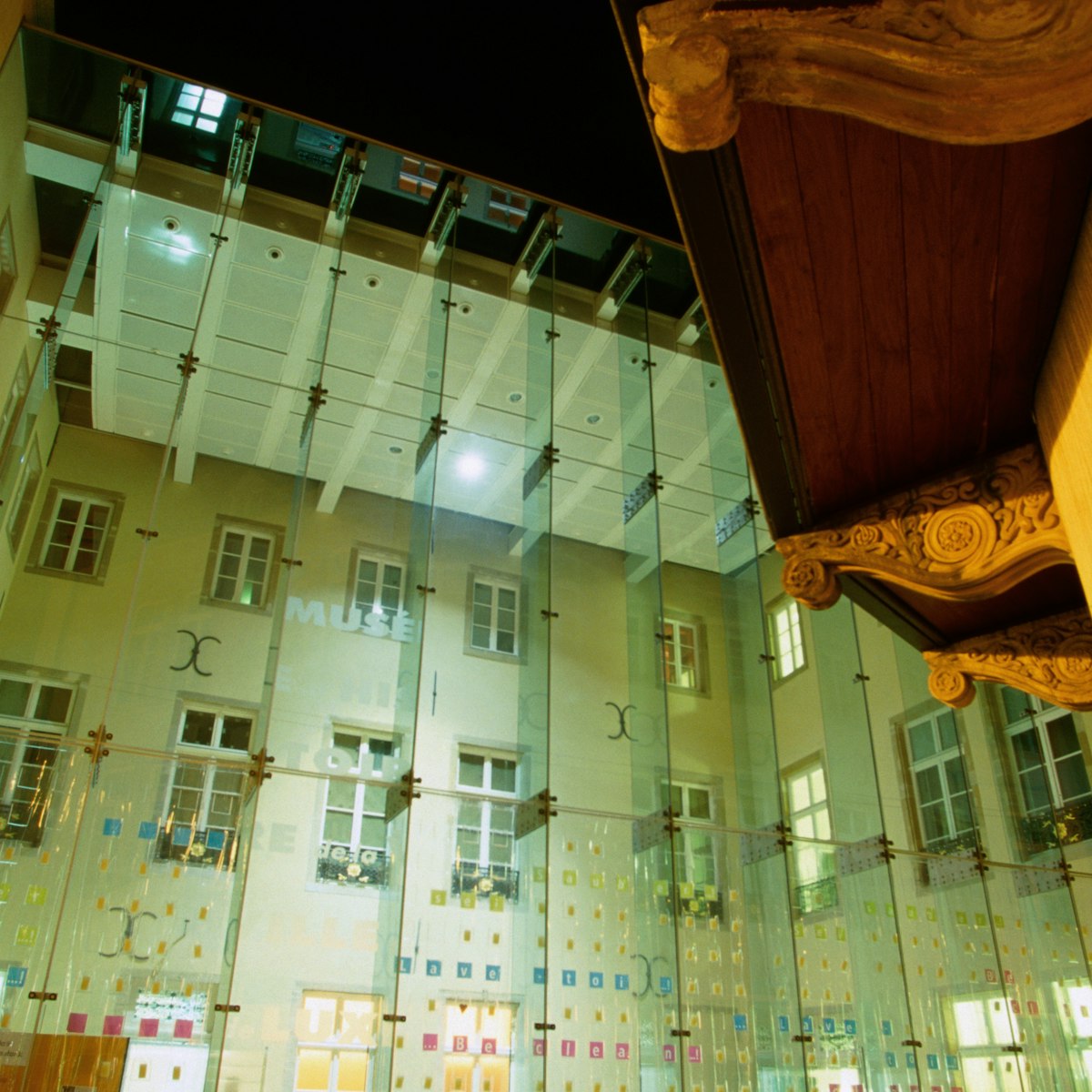
Musée d'Histoire de la Ville de Luxembourg
Hidden within a series of 17th- to 19th-century houses, including a former ‘holiday home’ of the Bishop of Orval, the city's history museum is engrossing…
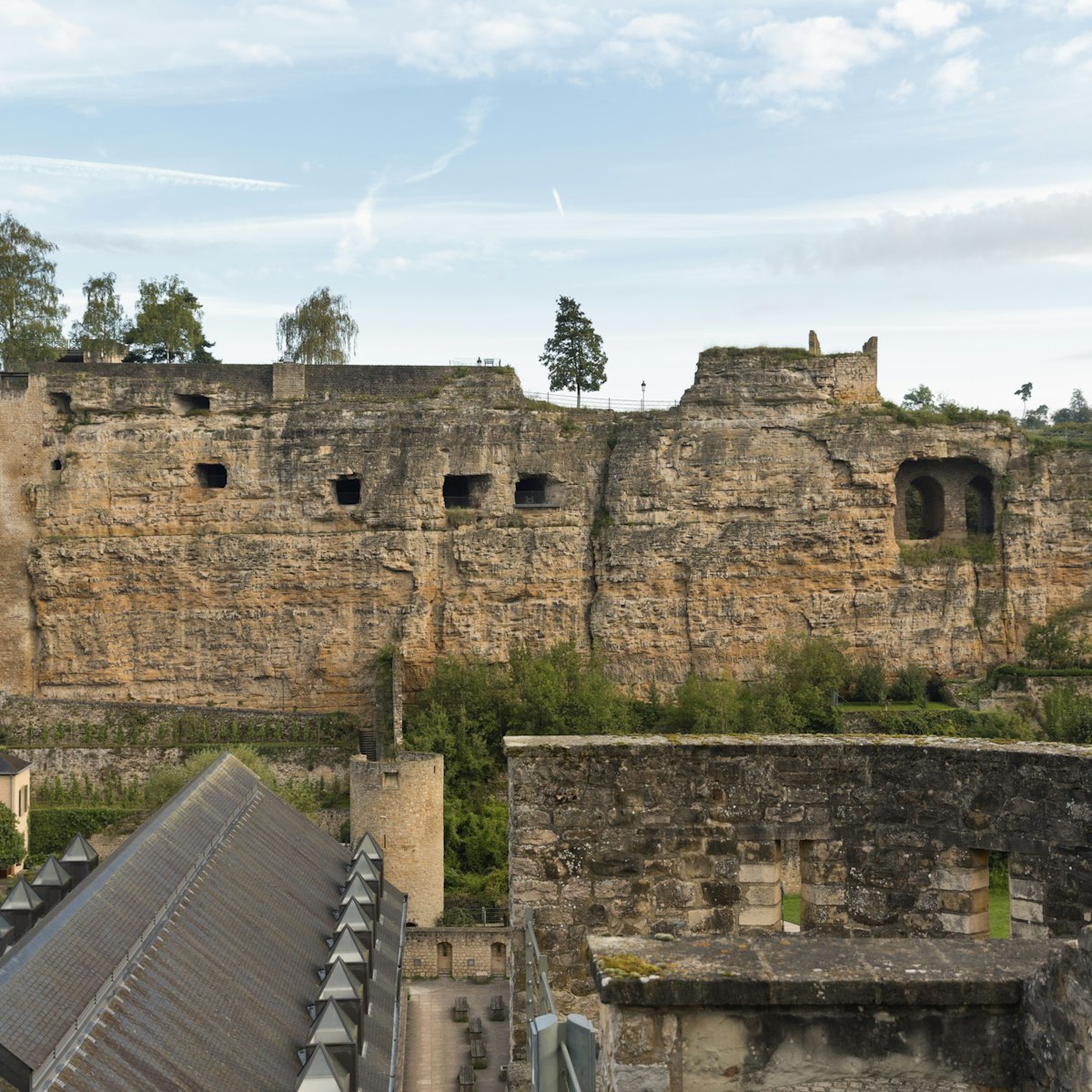
Bock Casemates
Beneath the Montée de Clausen, the clifftop site of Count Sigefroi’s once-mighty fort, the Bock Casemates are an atmospheric honeycomb of rock galleries…
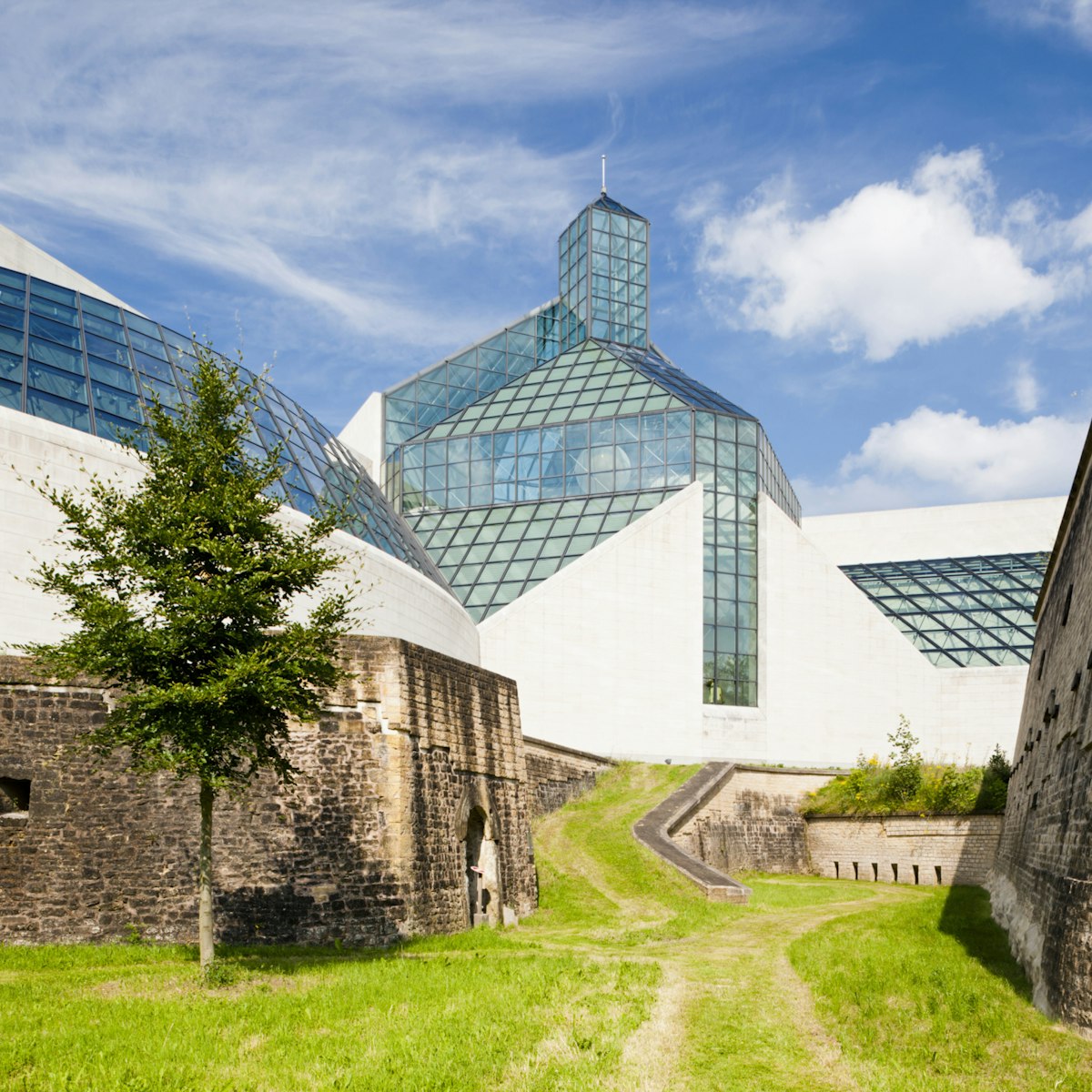
Groundbreaking exhibitions of modern, installation and experiential art take place in this airy architectural icon designed by Pritzker-winning architect…
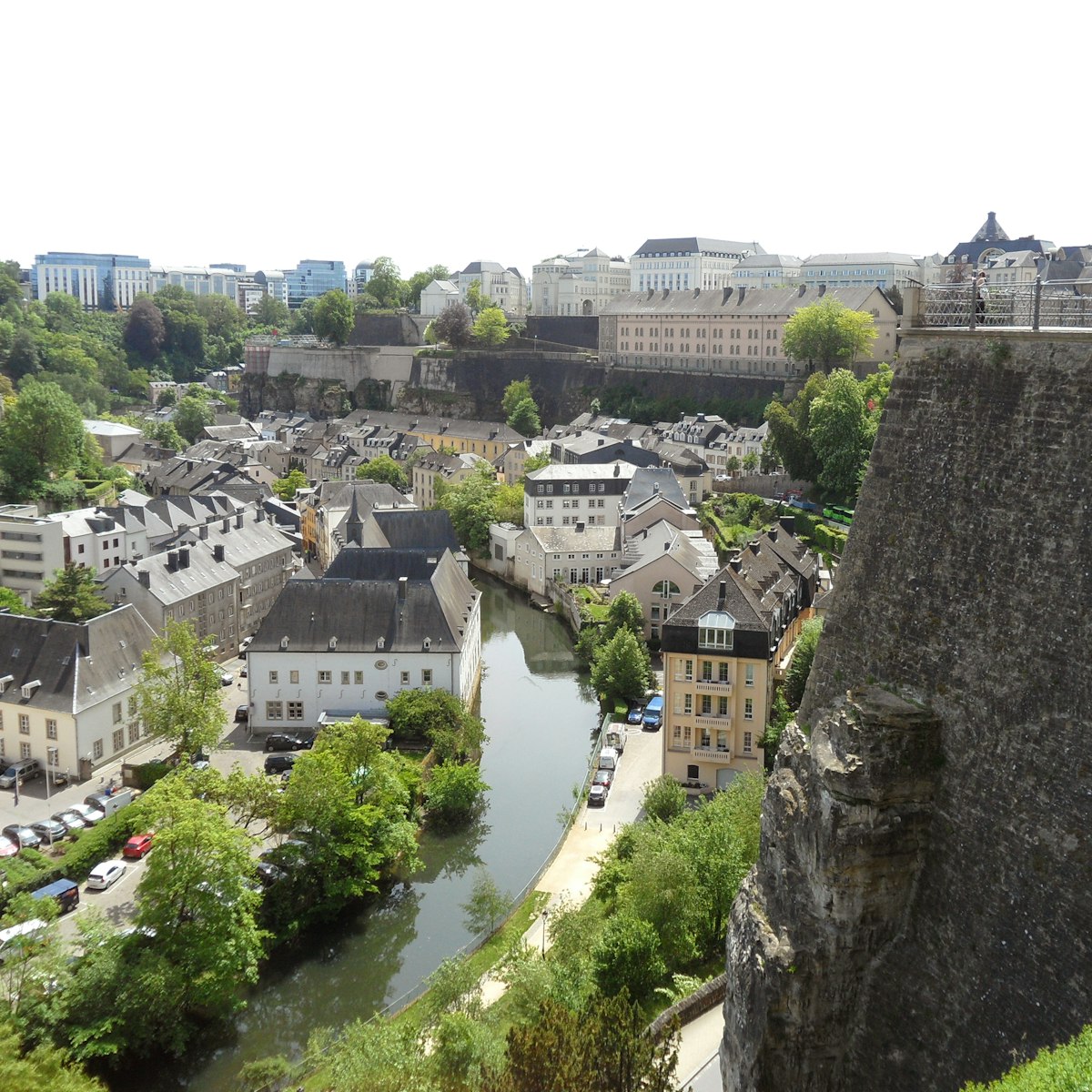
Chemin de la Corniche
Hailed as 'Europe's most beautiful balcony', this pedestrian promenade winds along the course of the 17th-century city ramparts with views across the…
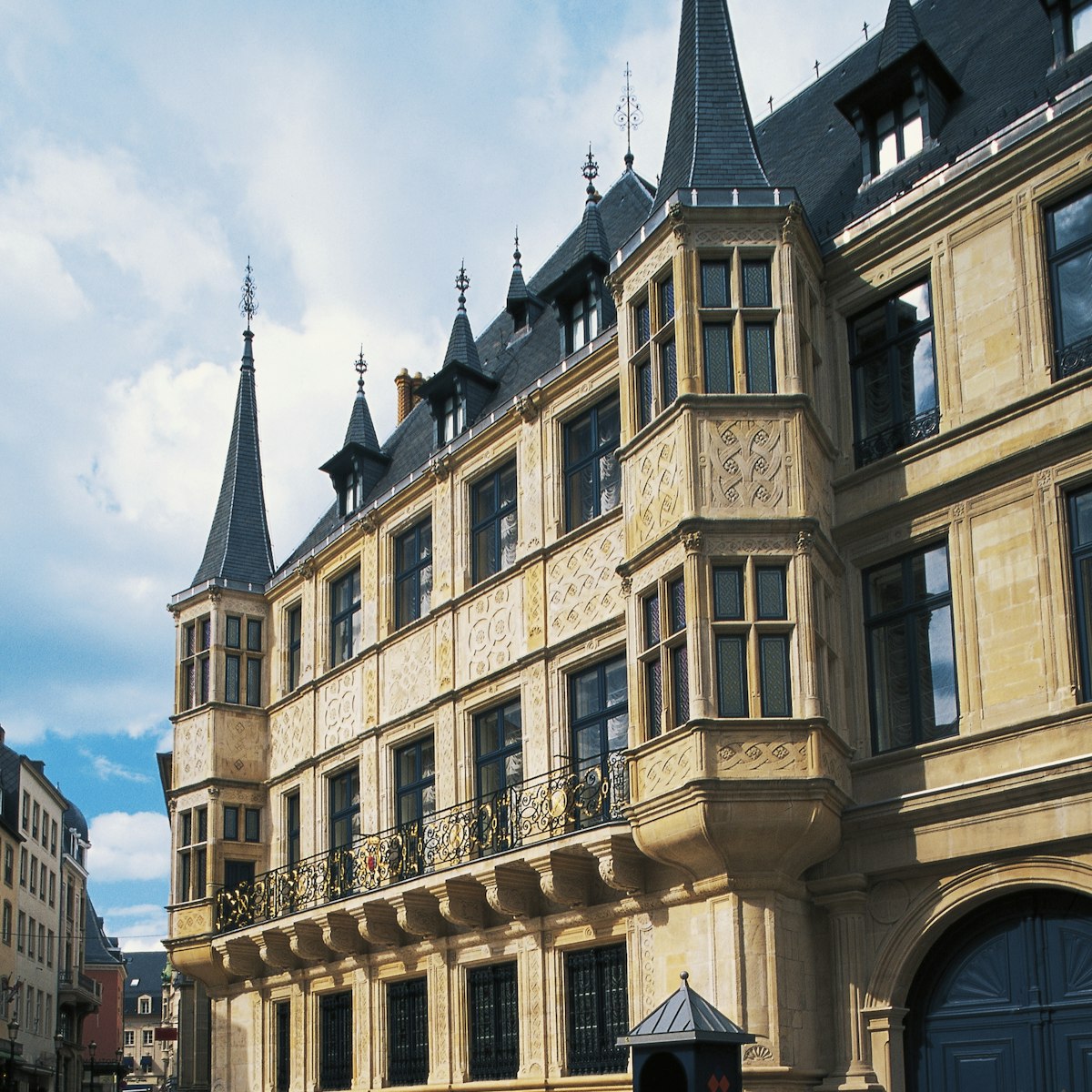
Palais Grand-Ducal
Luxembourg's turreted palace was built in 1572 and has been greatly extended over the years. It now houses the Grand Duke’s office, with parliament using…
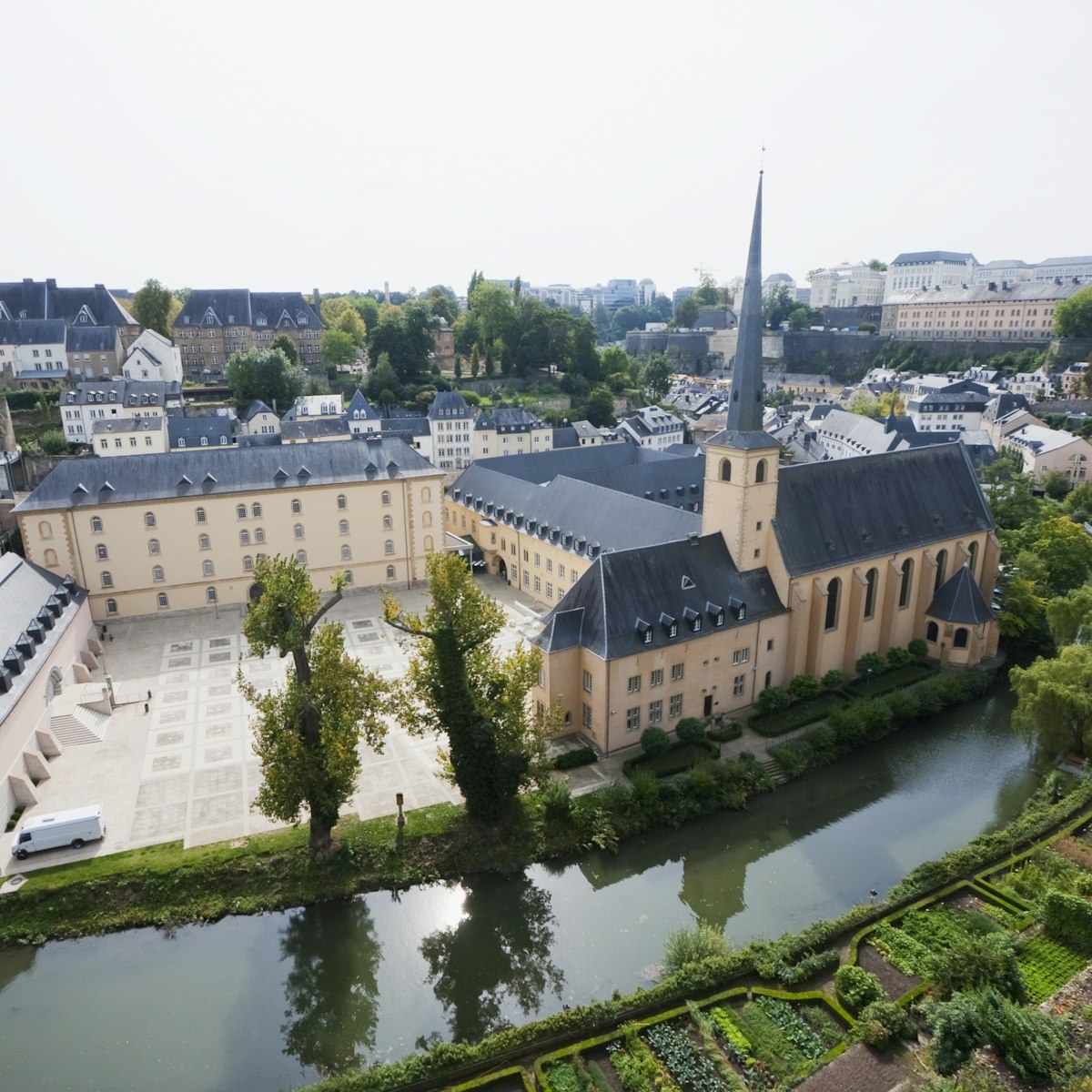
Abbaye de Neumünster
Dominating the Grund riverbank, this 17th-century Benedictine abbey has been transformed into a cultural centre. Around the cloister are bronze sculptures…
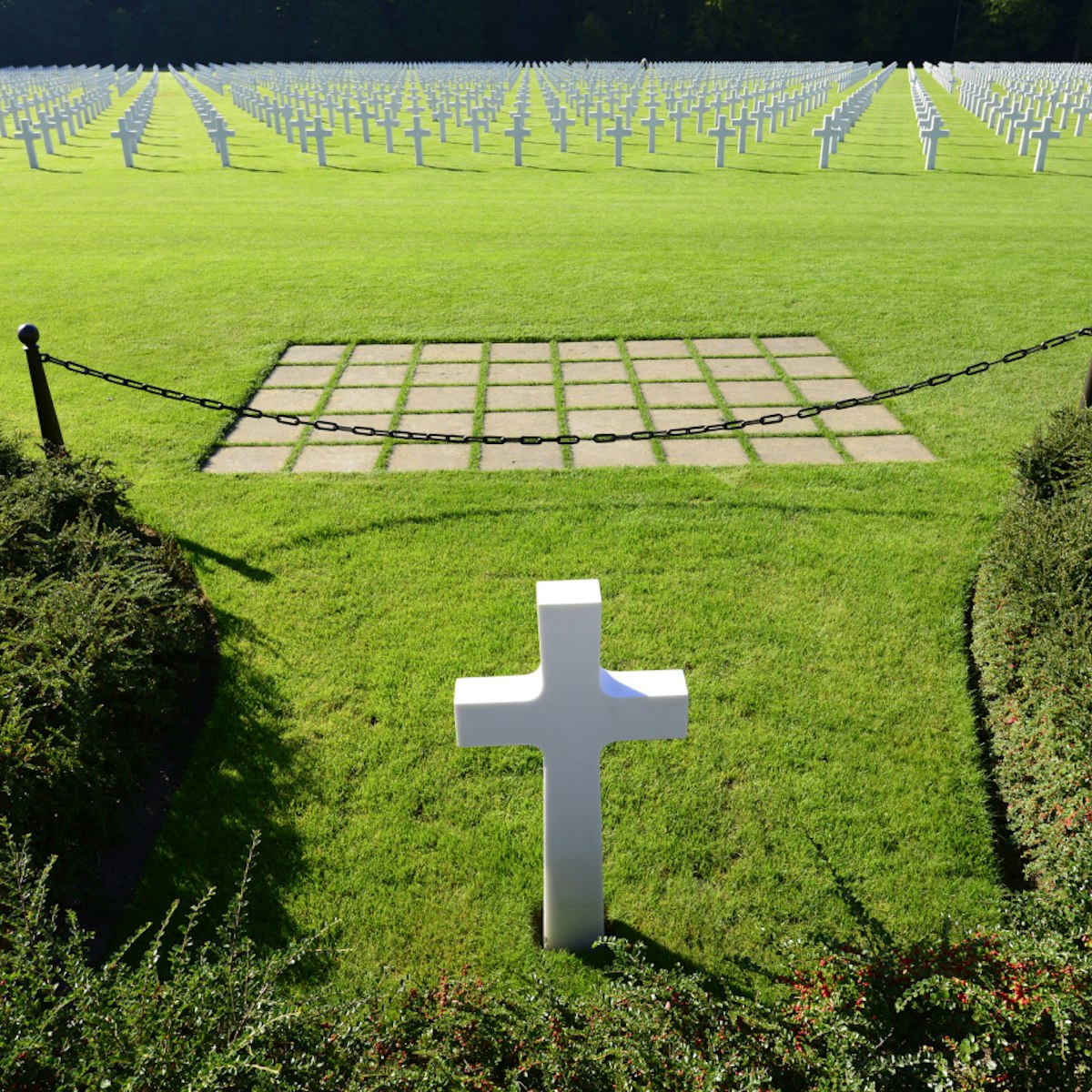
US Military Cemetery
In a beautifully maintained graveyard 6km east of the city near the airport, lie 5075 US WWII war dead, including the general of the US Third Army George…

Startlingly modern for its Old Town setting, the national art and history museum starts deep in an excavated rocky basement with exhibits of Neolithic…
Purchase our award-winning guidebooks
Get to the heart of Luxembourg City with one of our in-depth, award-winning guidebooks, covering maps, itineraries, and expert guidance.
How to Spend One Day in Luxembourg City
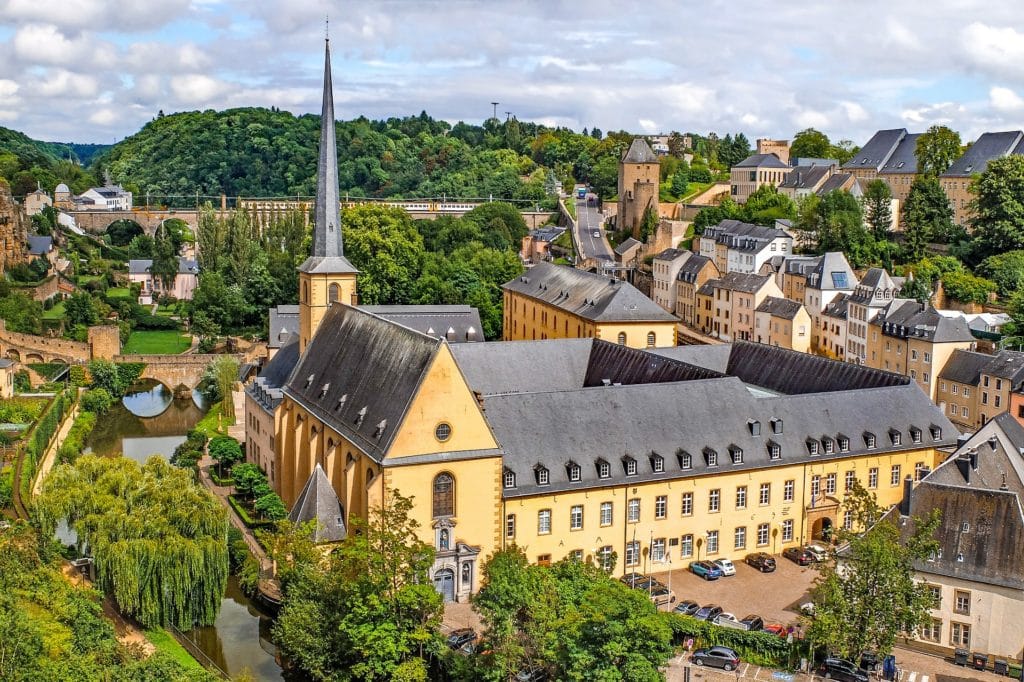
Those looking to spend one day in Luxembourg will likely find themselves in the lively capital of Luxembourg City, also known as the Grand Duchy of Luxembourg.
The city is compact and walkable which makes it a perfect day trip destination from neighboring cities and countries. During my visit, I was on a day trip from nearby Brussels and spend over 12 hours exploring this on foot.
So if you’re wondering what to do in Luxembourg City, I’ve got you covered. To help you see as much as possible, I put together this quick Luxembourg itinerary to help you maximize your time while seeing as much as possible.
This itinerary will get you to all the most popular spots, including recommendations for restaurants and hotels. I also include recommended spots for cocktails at the end of the day. Or at the beginning of the day, who am I to judge?
Let’s get to it.
Table of Contents
One Day in Luxembourg Itinerary
As stated above, I personally completed this One Day in Luxembourg itinerary by walking to each destination from city’s central train station. I’m not gonna lie, this was a lot of walking.
If you prefer a little less exercise, consider taking a taxi from the train station to your first destination. This will save you a ton of time and taxis will already be watiing outside the station.
Where is Luxembourg City?
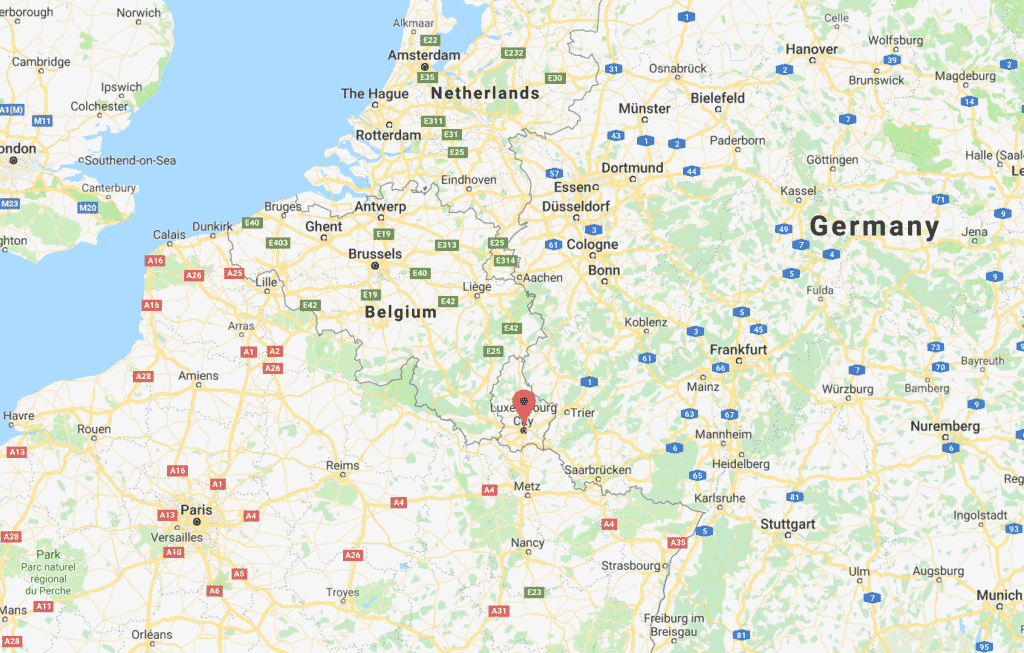
Luxembourg City is located on the southern end of the country of Luxembourg. You can find Luxembourg nestled in between Belgium, Germany, and France in western Europe.
Luxembourg City is easily reached by train, bus, or car from nearby major European cities in just a few hours. It makes an especially convenient day trip from Brussels, Paris, or Frankfurt or even a great stop on a European road trip.
Most visitors to Luxembourg City will arrive at the Gare de Luxembourg train station. You’ll find the train station is about a 5-minute cab ride or 20-minute walk to the old town area of Luxembourg City.
Travel tip: Be sure to pick up the Luxembourg Card before you arrive. It gets you into many of the country’s museums and main attractions for free, including a few on this list.
You can purchase the Luxembourg Card online and use a virtual Luxembourg Card on their app from your phone. The Luxembourg Card will cost 13 Euros for one person if using for just one day. Discounts are available if purchasing for more days and more people.
If you’d like to see a Luxembourg City map, you can find one here . Now let’s get on with that perfect Luxembourg itinerary.
1. Explore the Old Quarters and Fortifications
One of the most popular things to do with 1 day in Luxembourg City is to explore the Old Quarters and Fortifications. Between the 16th and 18th centuries, Luxembourg was one of the most fortified territories in Europe.
To this day, many of the fortresses remain largely intact despite their partial demolition following the Treaty of London. Some that were destroyed have been fully restored and even include museums that tell their history.
These fortifications are spread out across the city and open to visitors during the day to explore. The old quarters and fortifications of Luxembourg City were designated an UNESCO World Heritage site in 1994.
Exploring Luxembourg City on foot and stumbling across the city’s many fortresses is quite the experience. This is especially fun if you didn’t read up about the city ahead of time (I totally forgot). Finding a random fortress anywhere is pretty cool, but several of them is just awesome.
2. Passarelle Bridge
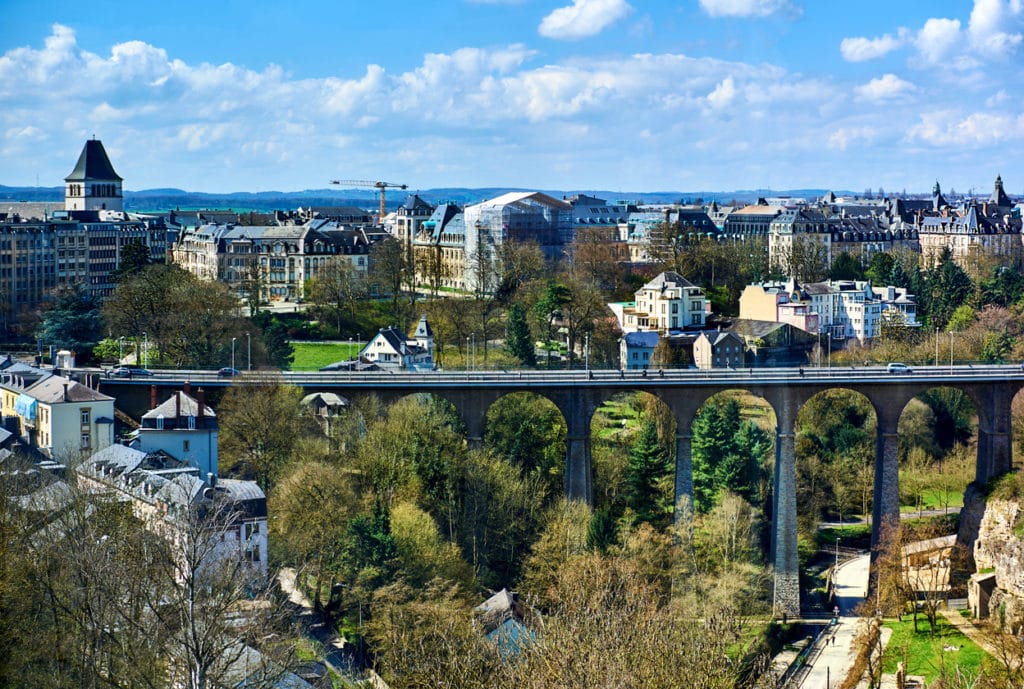
The Passarelle Bridge, also known as the Luxembourg Viaduct, was built between 1859 and 1861. The bridge carries traffic across the Petrusse Valley connecting Avenue de la Gare to Boulevard Franklin Delano Roosevelt.
This iconic bridge was originally built to connect the city’s new railway station to the city centre. Today, the bridge is admired for its design and is frequently photographed by tourists and visitors.
If you’re lucky enough to be visiting Luxembourg when there’s blue skies, you’ll have the perfect day to get beautiful pictures of the bridge. Take advantage, those blue skies can be hard to come by in Luxembourg.
3. Fort Thungen
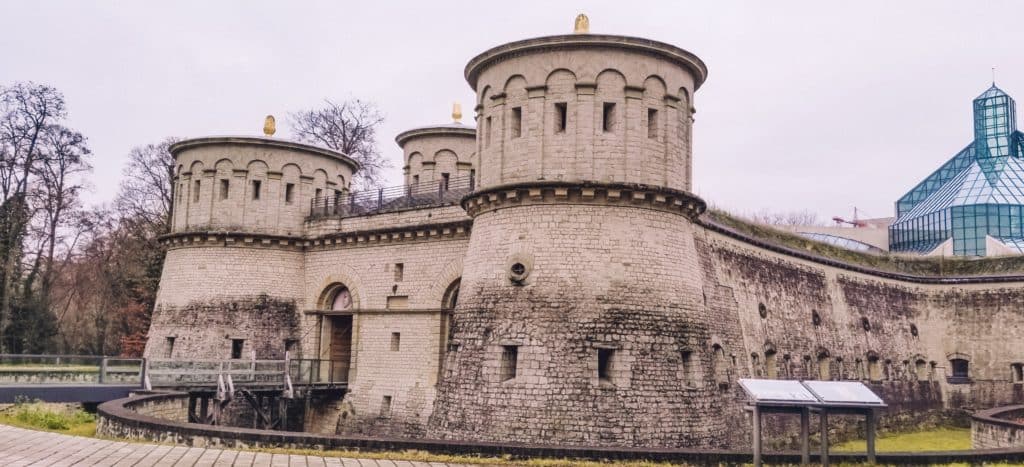
One of my favorite stops on this Luxembourg one day itinerary is Fort Thungen and the surrounding grounds. I actually stumbled upon this place by accident during my visit. I just love it when I accidently fine a castle, don’t you?
Fort Thungen is a historic fortification sitting at the top of one of the many hills in Luxembourg City.
The fortress was built by the Austrians in 1732 as an additional defensive structure to protect the city. The majority of Fort Thungen was destroyed in 1870 and 1874 as part of the Treaty of London, which required the destruction of the city’s many fortifications.
Following this destruction, the three towers and the foundation were all that remained. During the 1990s, the fortress was fully restored and a museum, the Musee Drai Eechelen , was opened inside in 2012. The museum’s permanent exhibit tells the history of Luxembourg from 1443 to 1903.
Fort Thungen can be found in Drai Eechelen Park in the northeast section of the city near the city’s modern art museum and philharmonic.
The museum is open every day from 10:00 a.m. to 6:00 p.m. except Mondays. On Wednesdays, the museum is open from 10:00 a.m. to 8:00 p.m. Admission is 5 Euros.
4. Grand Duke Jean Museum of Modern Art
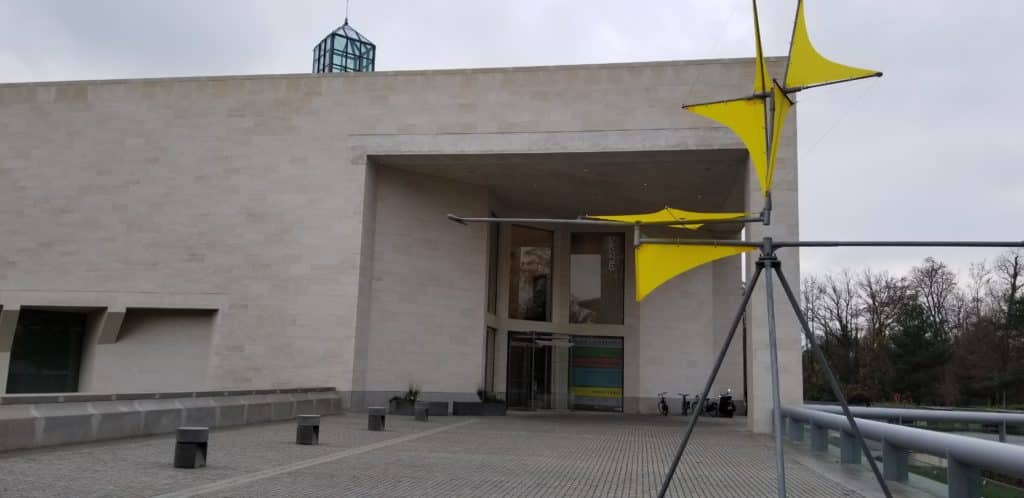
The Grand Duke Jean Museum of Modern Art is a fairly new addition to the city, having opened its doors in 2006. The museum itself is located on the grounds of Fort Thungen.
It was designed by renowned Chinese American architect Leoh Ming Pei, who also designed the John F. Kennedy Library and the National Gallery of Art, among many other notable buildings. That being said, the museum structure itself is worth your time to see.
In addition to the beautiful architecture, the museum’s collection includes pieces on display from Andy Warhol, Cindy Sherman, Steve McQueen, and many more. There is also a cafe and gift shop on site.
The museum is open Thursday through Monday from 10:00 a.m. to 6:00 p.m. and Wednesday from 10:00 a.m. to 11:00 p.m. The museum is closed on Tuesdays.

5. Casemates du Bock
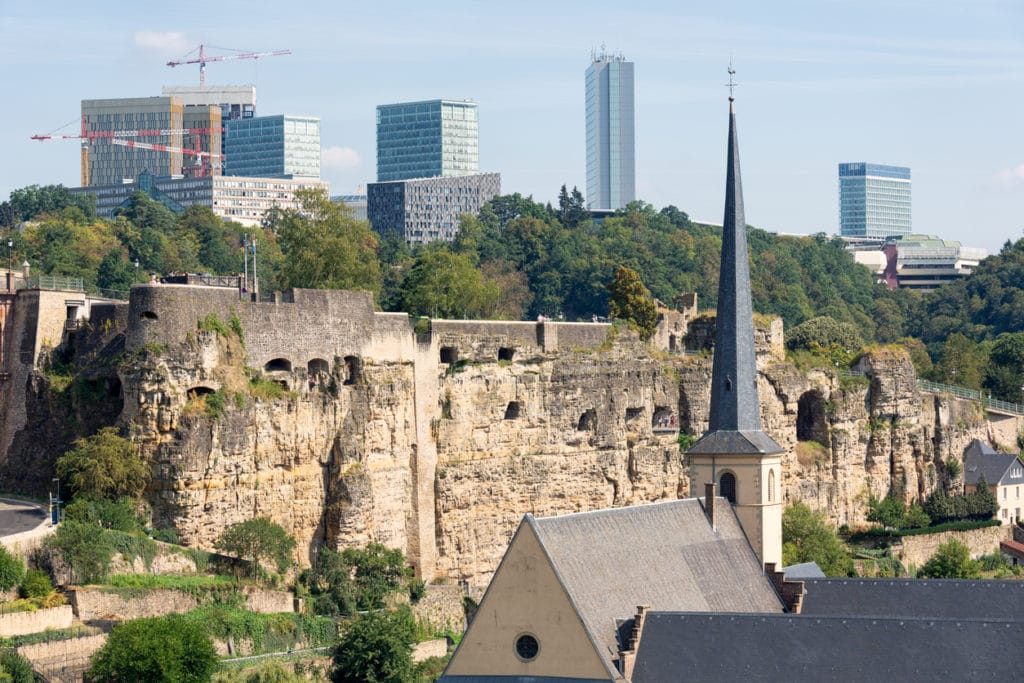
One of the most popular things to do in Luxembourg in one day is to visit the Casemates du Bock.
Casemates du Bock, or Bock Casemates, is a large area of underground tunnels and galleries built into the hillside of Luxembourg City. The fortress and tunnels were built in 1644 to protect the territory from invasions.
Beginning in 1933 the tunnels were opened up to the public. However, they were used again as a bomb shelter for about 35,000 people during WWII.
Visitors may wander through the tunnels of Casemates du Bock daily from 10:00 a.m. to 5:30 p.m. Hours do vary depending on the time of year. Casemates du Bock is really cool to see in person, so don’t skip this one.
Admission is 7 Euro for adults. Guided tours are also available. You can find more information on visiting Casemates du Bock by visiting their website here .
6. Visit Gelle Fra
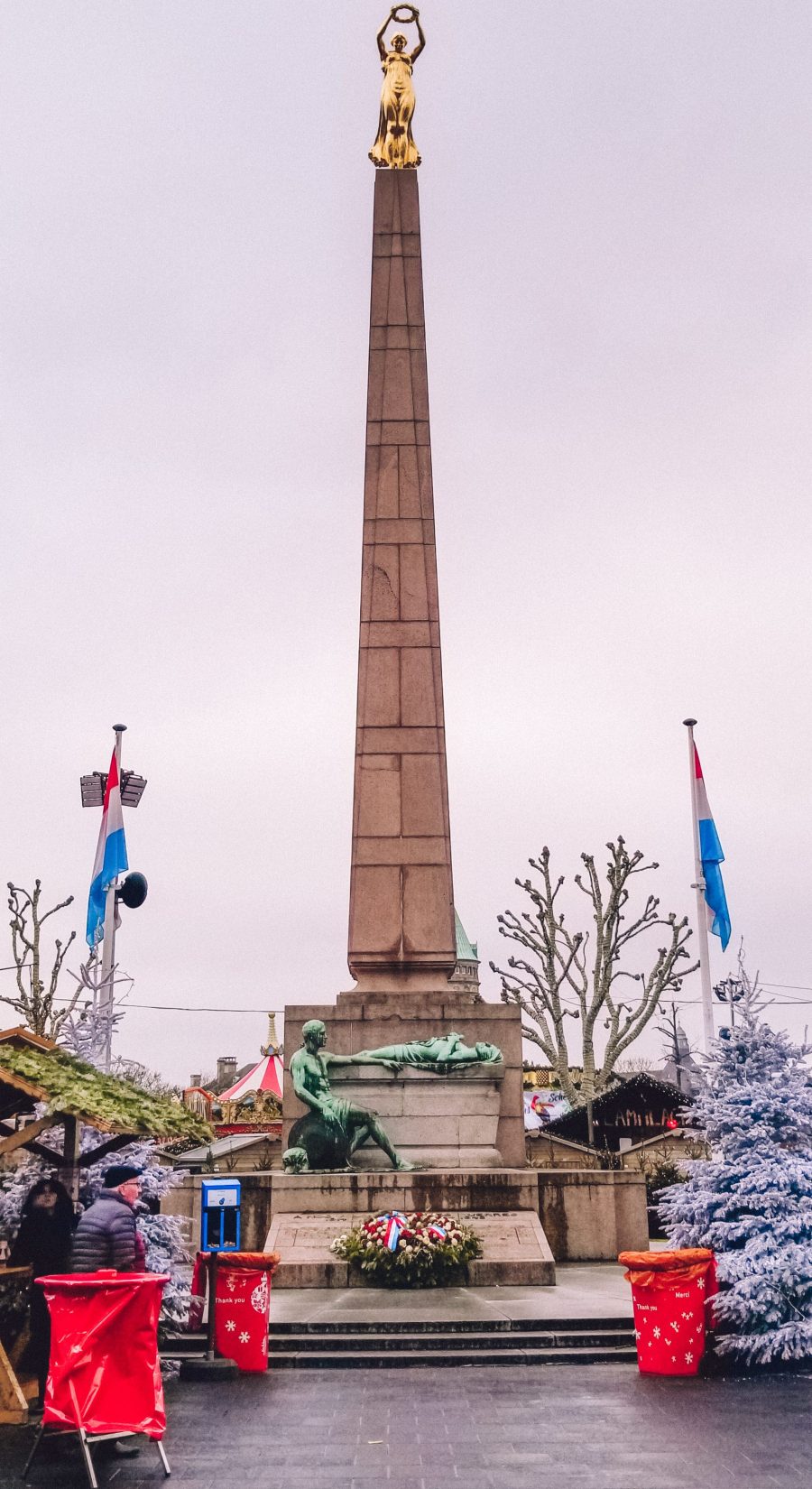
The Gelle Fra is a Monument of Remembrance and war memorial with quite an interesting history.
The memorial is dedicated to the thousands of volunteers who served in the armed forces of the Allied Powers during both World Wars and the Korean War. You can find Gelle Fra in Constitution Square in the center of Luxembourg City.
The monument is 21 meters tall with a granite base and a bronze statue at the top. The statue depicts NIke, the Goddess of Victory.
In 1940 the Germans dismantled the memorial when Nazi troops occupied the city during WWII. Following the occupation, several pieces of the memorial were rescued, though the bronze statue of Nike could not be located.
Surprisingly, in January 1980, the statue was found beneath the stands of the National Football Stadium. In 1984, the monument was fully reconstructed to its original design.
7. Grand Ducal Palace
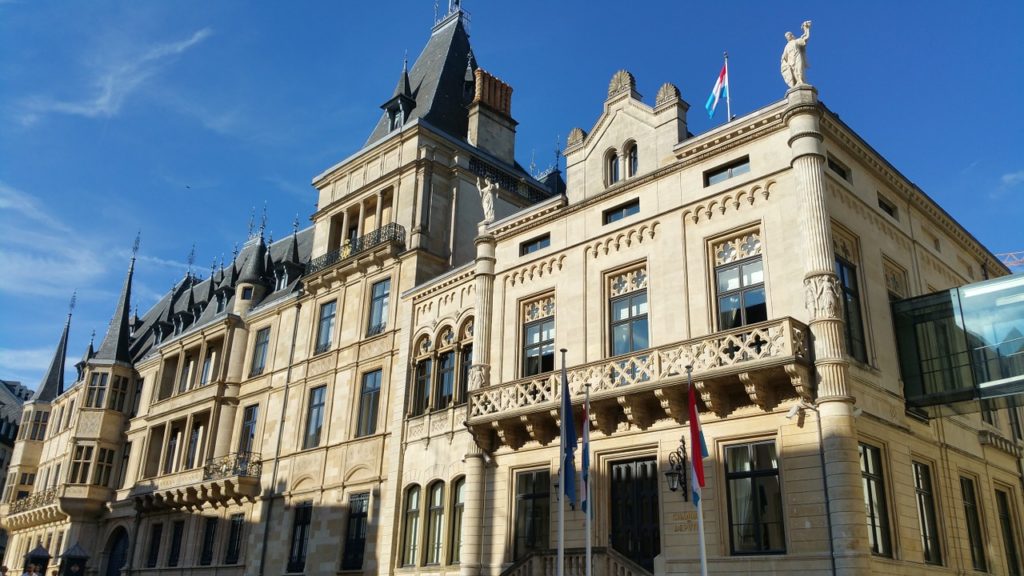
The Grand Ducal Palace is the official residence of the Duke of Luxembourg. The palace is where he works and performs the majority of his duties as the head of state of the Grand Duchy.
From 1572 to 1795 the building served as the Luxembourg city hall until it then became head of the Luxembourg government in 1817. Beginning in 1890 the palace was reserved exclusively for the Grand Duke and his family.
During WWII when the German’s occupied the nation, the palace was used by the Nazi’s as a tavern and concert hall.
During their occupation, they hung large swastika flags in the building and destroyed the majority of the furniture, artworks, and jewels.
After the war, the palace was again reserved for the Grand Duke and his family. Beginning in 1966, soldiers from the Luxembourg military perform guard duties.
Visitors may always view the exterior of the Grand Ducal Palace. However, access to the interior of the palace is only granted to visitors on guided tours in July and August. You can find information on guided tours here .
8. Notre Dame Cathedral – Luxembourg City
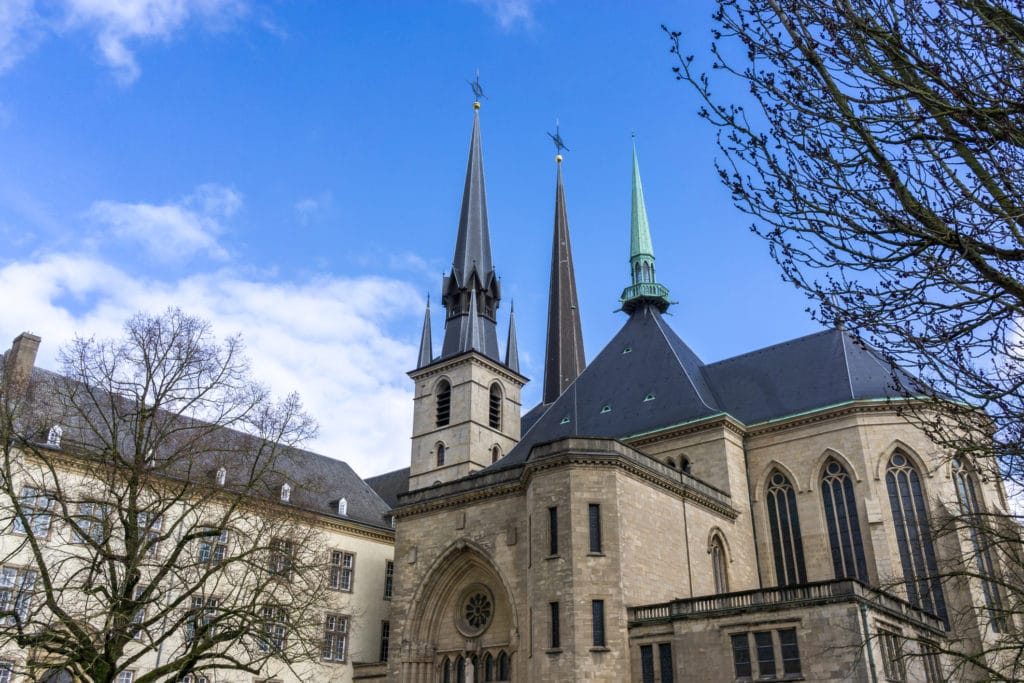
The Notre Dame cathedral is located near the city’s historic center. The cathedral is an example of Gothic architecture with Renaissance elements. Originally a Jesuit church, the cathedral was built between 1613 and 1621.
Additional construction of various sections of the cathedral were completed much later, some sections as recently as 1938. The cathedral has three main towers, the west tower is the original containing the bells.
The central tower and west tower were added when the church was expanded between 1935 and 1938. There is also a crypt in the cathedral holding the remains of several members of the Grand-Ducal family.
Visitors are welcome to enter and view the inside of the Notre Dame cathedral. Doors are open daily from 10:00 a.m. to noon and 2:00 p.m. to 5:30 p.m. In my opinion, this is also one of the best free things to do in Luxembourg.
9. Place Guillaume II
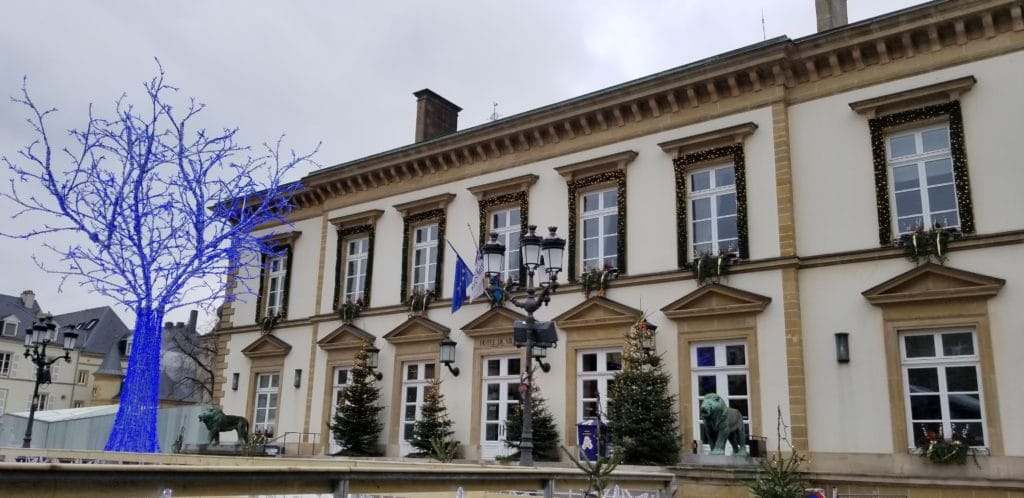
You’ll find Place Guillaume II just a short walk from the Notre Dame cathedral in the Ville Haute quarter.
Place Guillaume II is a large outdoor space where you’ll find the City Hall and a large statue of Grand Duke William II riding a horse. The large outdoor space is primarily used for concerts.
10. Explore the Grund Neighborhood
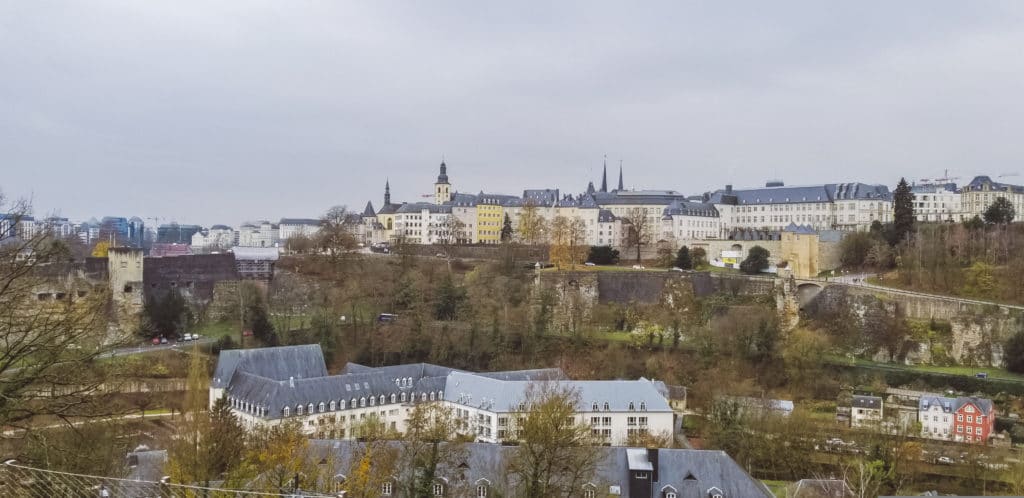
The Grund is an affluent neighborhood located along the Alzette river below the city center.
The neighborhood is best known for its restaurants, bars, and pubs, making it a busy nightlife spot. This is a beautiful area of the city to explore both day and night.
You can access the Grund neighborhood on foot or by taking a lift built into the hillside.
Popular destinations in Grund include Mosconi, a one-star Michelin restaurant specializing in pasta, or the Japanese restaurant Kamakura.
Both are fantastic options and a great way to start your evening before heading out for drinks.
Bonus stop: Luxembourg City Christmas Market
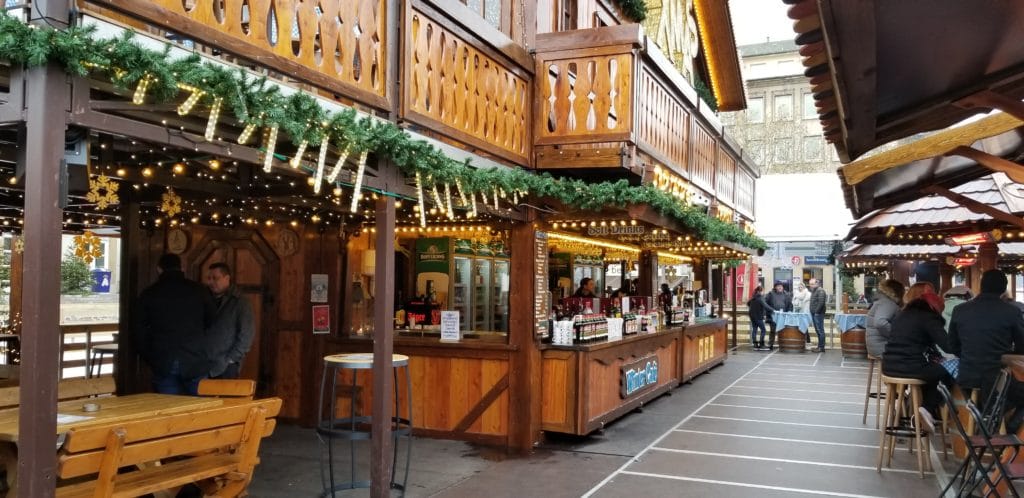
If you’re spending Winter in Luxembourg, make sure you take a walk through the city’s Christmas market.
You can find plenty of unique gifts or souvenirs to purchase from one of the many vendors. There is also a food and drinks section where you can purchase local snacks, craft beer and mulled wine.
If the Christmas market is open, this is a great place to stop for an affordable lunch or snack. You will also find an ice skating rink and some carnival rides for the kids.
Is Luxembourg worth visiting?
Absolutely. Luxembourg is cool.
It’s a tiny little country but it’s got lots of character. I encourage you to spend 1 or 2 days in Luxembourg City, but then move on to explore Luxembourg’s beautiful countryside and many castles.
There are tons of fun day trips from Luxembourg City that will help you get to know Luxembourg a little better.
Where to eat in Luxembourg City

As you’re making your way through this Luxembourg City in one day itinerary, you will likely get hungry along the way.
Luxembourg City is home to an extensive list of top-rated restaurants serving cuisine from all over the world. Take advantage of your time in Luxembourg and visit one of the city’s many incredible restaurants.
Here is a shortlist of some of my suggestions:
- Mosconi : If you’re a big fan of Italian cuisine like I am, give Mosconi a try for some of the best pasta in the city.
- Restaurant Clairefontaine : A popular upscale restaurant serving French and European cuisine. They will happily accommodate vegetarian, vegan, and gluten-free requests.
- A la Soupe: A very popular and affordable restaurant serving a large selection of soups and sandwiches. They are also very accommodating for vegans and vegetarians as they have plenty of suitable options in both categories, all of which are delicious.
- Ramen : If you’re looking for a great spot to grab some noodles, check out Ramen. You will get a delicious and affordable meal. Plus, their portions are massive.
- Pizzeria Bella Napoli : If you’re looking for the best pizza in Luxembourg City, look no further. Pizzeria Bella Napoli serves affordable Naples style pizza and pasta.
If you’re undecided about what to eat, take a walk around the city’s historic center. You’ll find plenty of restaurants there, both affordable and upscale.
Luxembourg City Nightlife
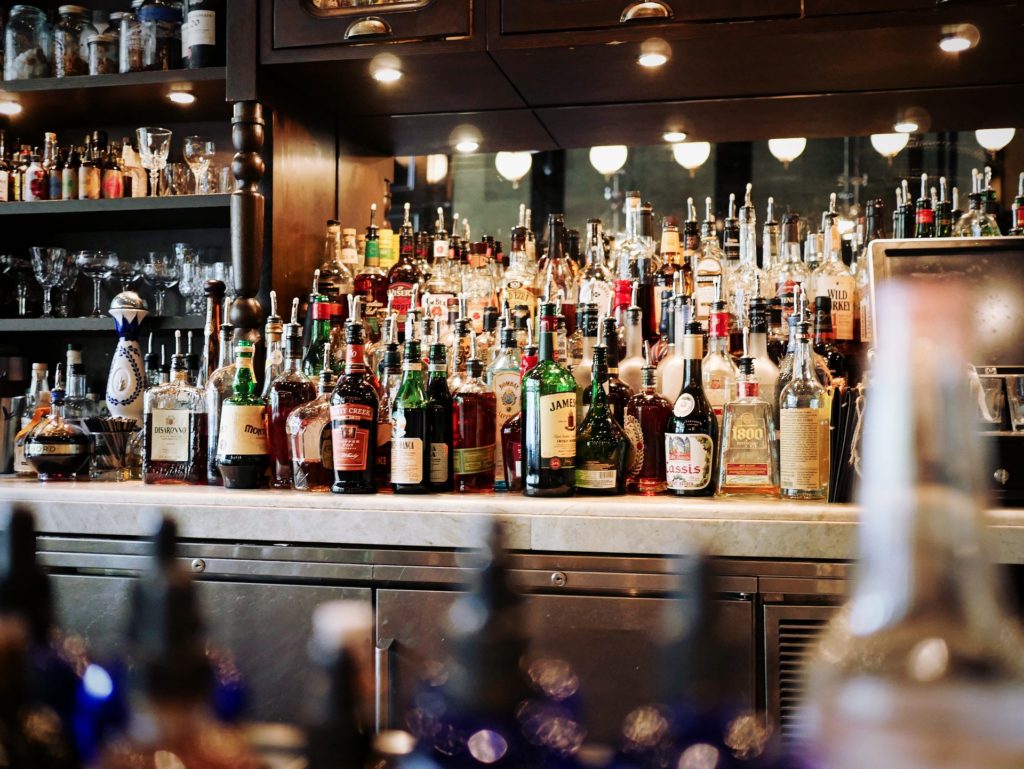
Even if you have just one day in Luxembourg City, try to make time to grab a beer or cocktail at one of the city’s many bars or pubs.
Luxembourg City has a fun nightlife scene and wide variety of bars and lounges to check out. Here are some of the places I recommend:
- Max + Moritz : Lively bar and restaurant serving upscale international cuisine and craft cocktails.
- Liquid Cafe: A fun bar with an extensive beer selection. Live music featuring jazz and blues is played on Tuesdays and Thursdays.
- Coco Mango: For fantastic views of the city, check out Coco Mango on the top floor of the Sofitel Hotel. This is a trendy bar with an extensive drink menu. Get here in time for sunset for the best views of the city. Then ask for the check and head out on the town.
- Scott’s Pub: Popular spot for locals and tourists alike. Scott’s Pub is also a favorite for ex-pats. They have a large beer selection and outside terrace overlooking the river.
Where to Stay in Luxembourg City
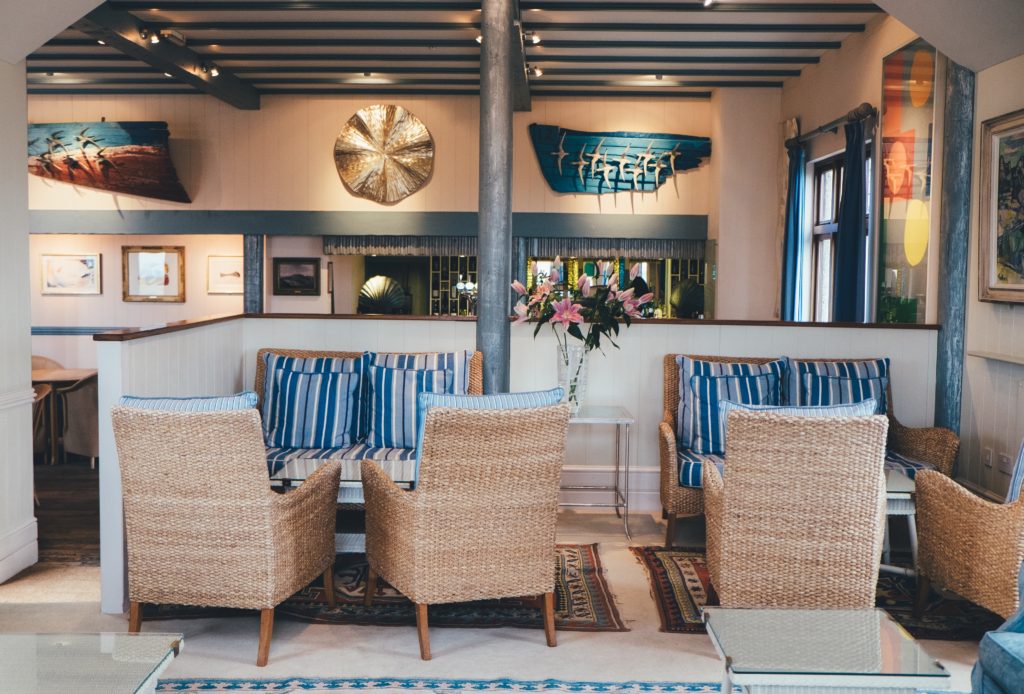
There are plenty of hotel choices in Luxembourg City to suit any budget if you decide to spend multiple days exploring the city. Here are my recommended Luxembourg City hotels:
- Luxembourg City Hostel : Affordable hostel located just a few minutes from the Luxembourg City historic center.
- Best Western Plus Grand Hotel : This mid-range hotel features clean and modern rooms located about one mile from Luxembourg City center.
- Grand Hotel Cravat : A moderately priced hotel located in the Luxembourg City center. This hotel is in an excellent location and features comfortable and spacious rooms.
- Hotel Le Place d’Armes : Luxurious hotel located right in the Luxembourg City center. The rooms are well-appointed, spacious and modern decorated in an Art Nouveau meets Contemporary design style.
- Sofitel Luxembourg Le Grand Ducal Hotel : Luxury hotel with incredible views of the surrounding valleys and historic city center. This hotel is also pet-friendly if you’re traveling with any four-legged family members.
Travel Tips for Luxembourg City
Here are a few tips for making the most out of your one day in Luxembourg travel itinerary:
- Plan out your day beforehand so you know which order you will be visiting the places on this list. Don’t forget to also plan for when you’ll have lunch and where you want to eat. This will alleviate time wasted trying to figure these things out during your visit.
- Wear comfortable shoes. You’ll be doing a lot of walking during your visit, so you might as well be as comfortable as possible.
- Double-check museum hours if you’ll be visiting on a Saturday, Sunday, or Monday. Many museums are closed on Monday and may have modified hours during the weekend.
- Take advantage of cabs, Ubers, or public transportation when appropriate. You don’t want to lose too much time going from place to place if you’ve only got one day in Luxembourg City.
- Try and start your day as early as possible so you have plenty of time to see everything you want to see.
- Take note of the last train departure back to your home destination. You don’t want to get stuck in Luxembourg City because you missed your train. Though that may not be a bad thing.
- Plan to arrive at the train station at least 20 minutes before its departure so you have time to find your train.
- Bring a reusable water bottle with you that you can fill up along the way.
I hope my guide on what to do in Luxembourg City in One Day was helpful in planning your visit. If you’re looking to plan another quick day trip in Europe, consider spending 12 Hours in Paris .
Want to save it? Pin it.
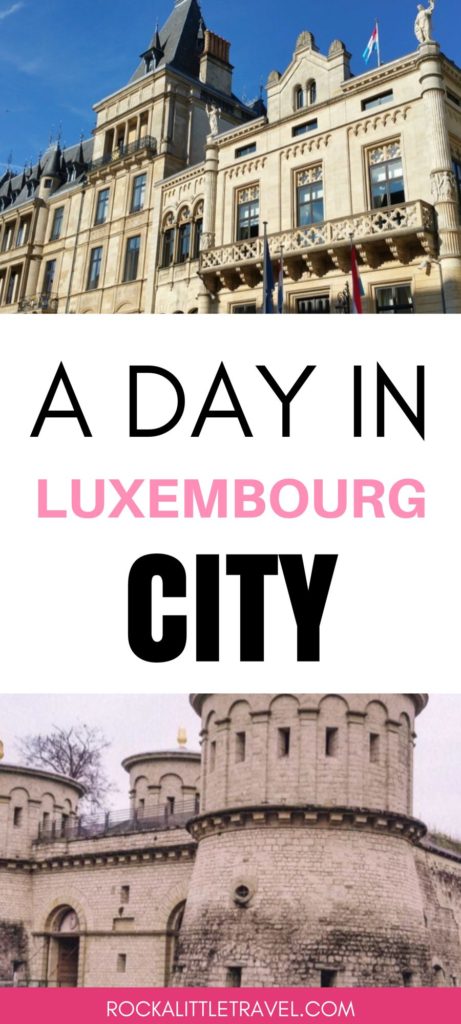
Related Posts
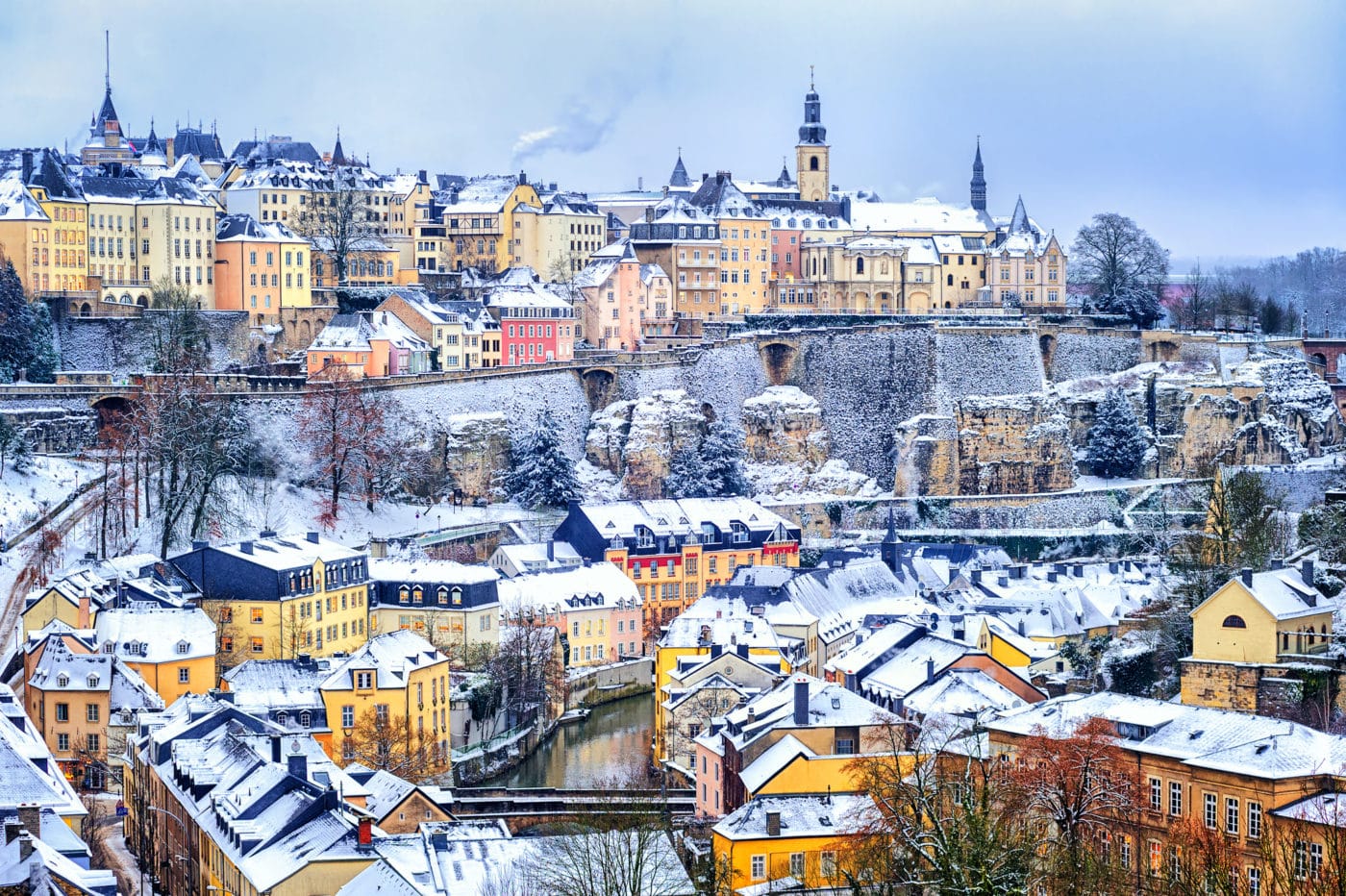
7 Reasons to Enjoy Winter in Luxembourg
Photo by Xantana Winter in Luxembourg makes the perfect time to visit this tiny yet…
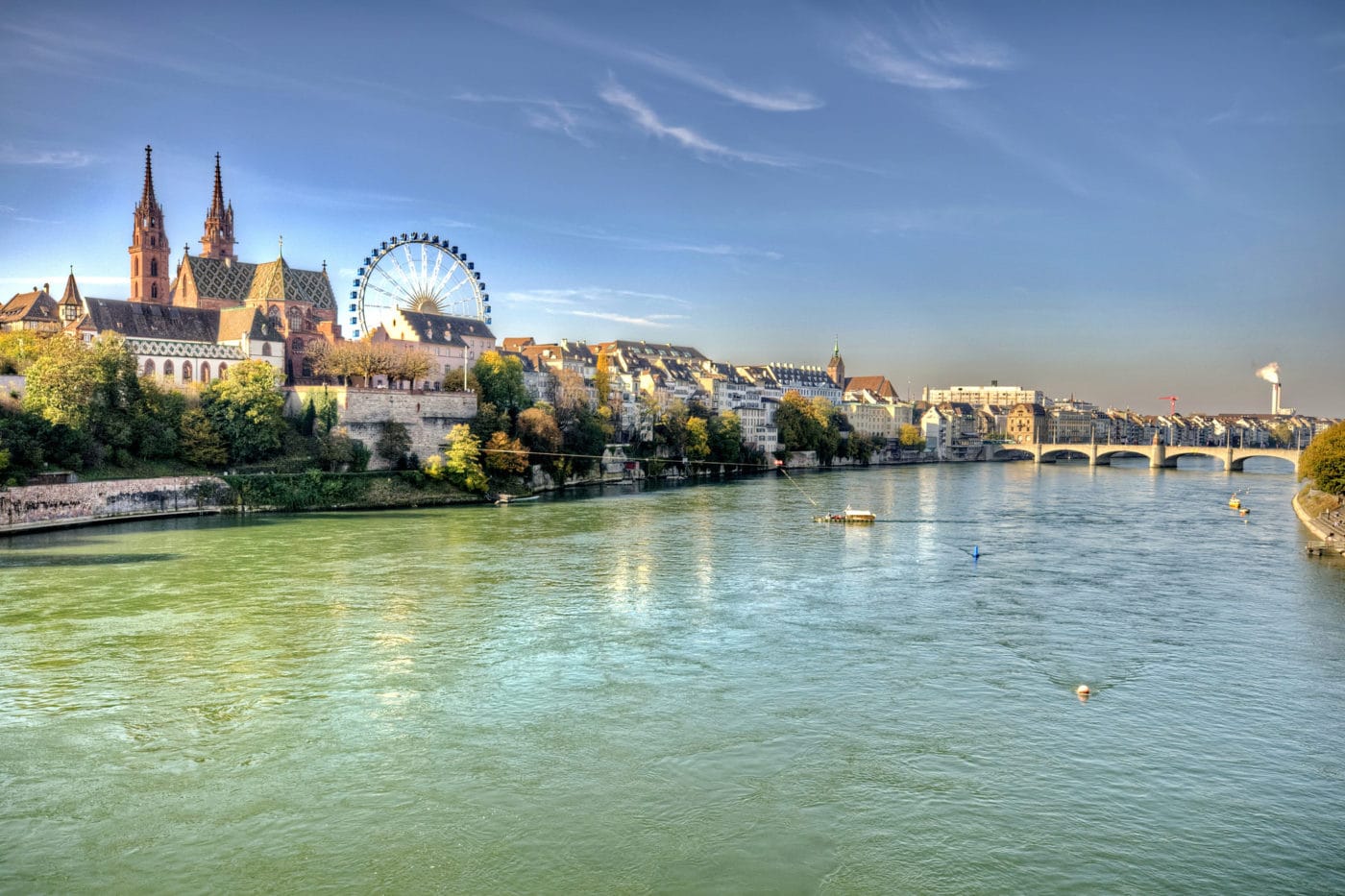
10 Beautiful Day Trips from Luxembourg
Photo by Anderm These day trips from Luxembourg provide the perfect opportunity to explore outside…
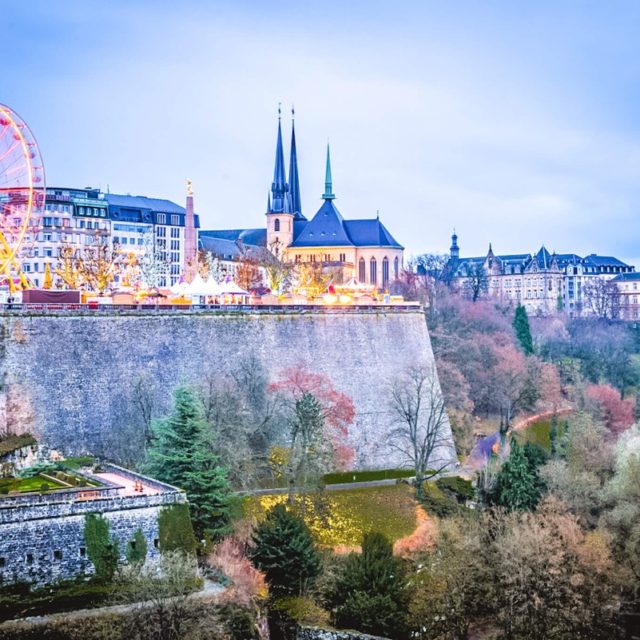
Your Ultimate Guide to the Luxembourg Christmas Market 2022
Photo by Sabino Parente The Luxembourg Christmas Market and Winter Lights festival is back again…

I help busy people find creative ways to travel more.
This site uses Akismet to reduce spam. Learn how your comment data is processed .

Home » Europe » Luxembourg » 17 Fun Things to Do in Luxembourg City
17 Fun Things to Do in Luxembourg City
By Author Laura Longwell
Posted on Last updated: November 29, 2023
Luxembourg is one of Europe’s smallest countries. Despite its prime location between Belgium, Germany, and France, it sometimes gets overlooked in favor of its bigger neighbors. But people who make that mistake—ourselves included—miss out on the beauty, culture, and fun things to do in Luxembourg City and beyond.
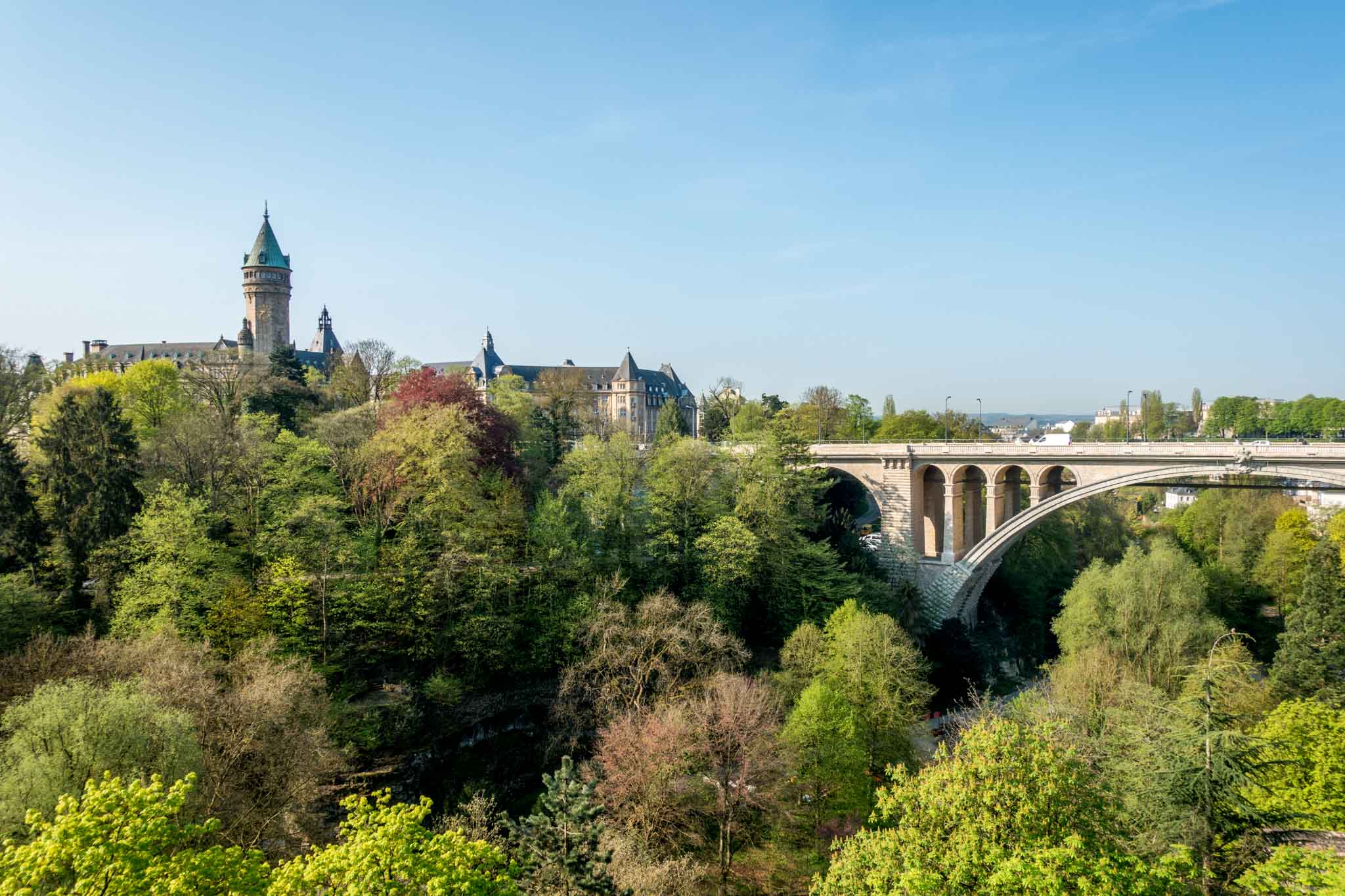
Luxembourg City is a fascinating city of contrasts. It is ancient and contemporary, local and global. The physical city even exists on two different levels—the upper part of the city on the ancient Bock rocky promontory and the lower part in the Alzette River gorge. Its layout gives it perhaps the most dramatic landscape of any European capital.
In addition to its lush surroundings, the city offers unique history and culture influenced by its neighboring countries and their citizens who still flood in for work every weekday, doubling its population.
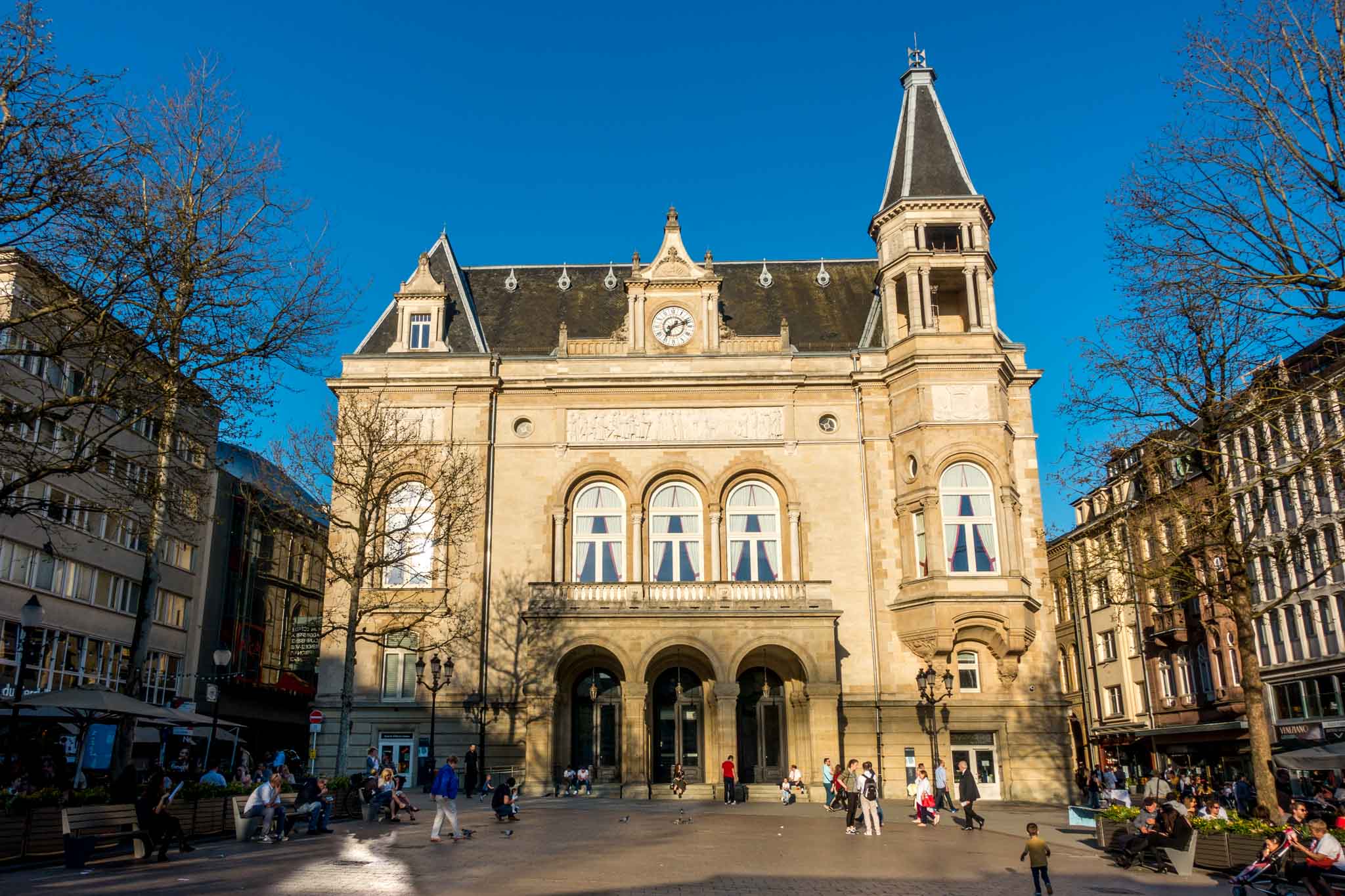
Luxembourg City is compact and highly walkable, making it easy to cover a lot of area quickly. It’s the perfect destination for a weekend trip from almost anywhere in Europe. Here’s a look at some of the fun things to do in Luxembourg City that we’ve enjoyed during several visits.
Visit the Grund
See casemates du bock, visit the national museum of archaeology, history and art, go wine tasting along the moselle river, take a walking tour of old town, have a taste of france at ladurée, visit the golden lady, attend a festival or outdoor event, tour the grand duchal palace, take a break at a cafe, visit notre-dame cathedral, see the view from chemin de la corniche, relax in place guillaume ii, visit museum dräi eechelen, try luxembourgish food, explore by bike, visit the christmas markets.
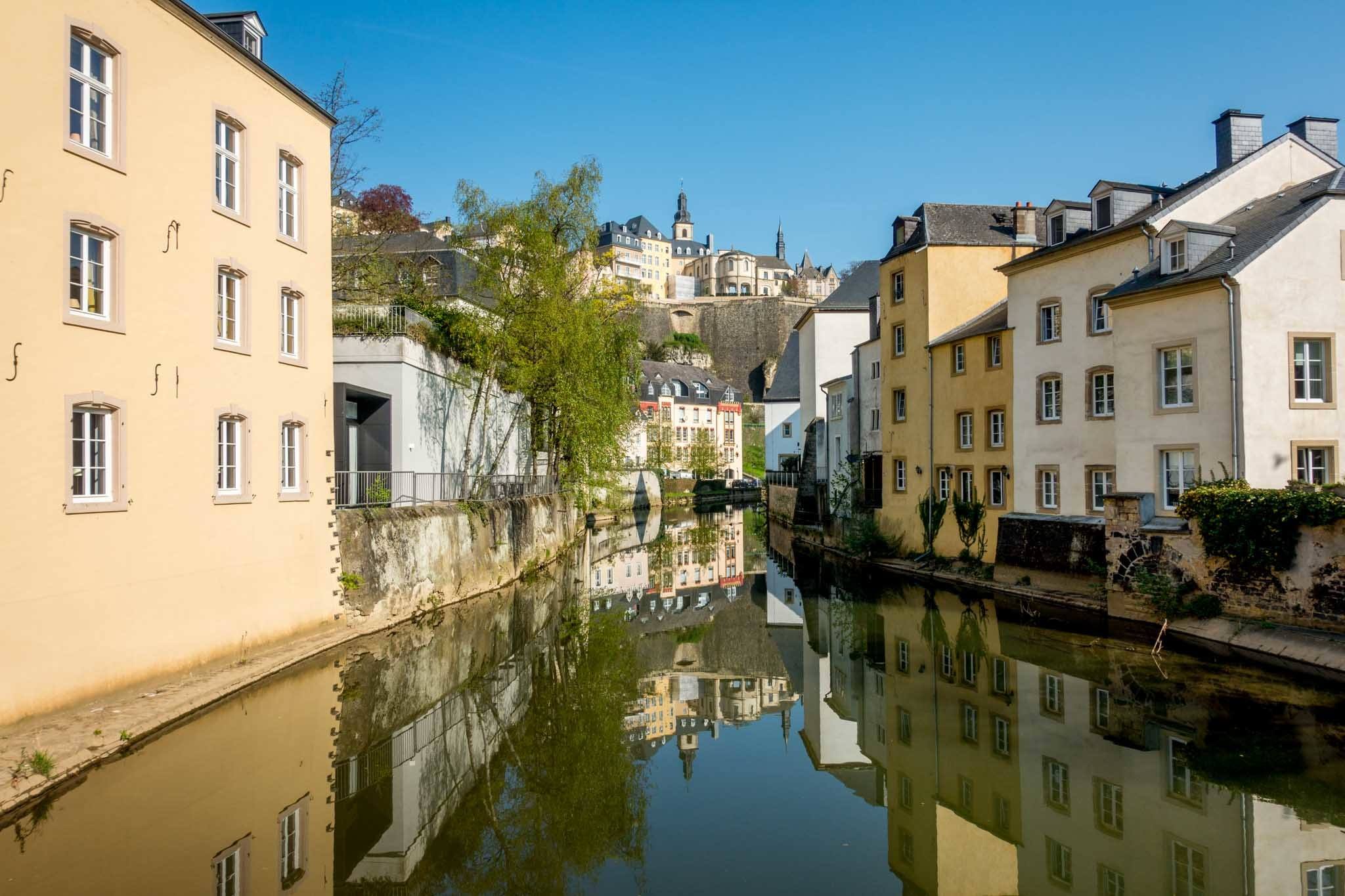
The lower part of the city—the Grund—has a distinctly different atmosphere from the modern city above. Along the banks of the Alzette River, the Grund is at the base of the former fortress surrounding the city. This charming area feels more like a quiet European village than part of the busy capital.
The relaxed pace of the Grund doesn’t mean there’s nothing to do there. On the contrary—it’s one of the main areas for nightlife in the city. You can café hop, shop, or check out some of the finest restaurants. Neumunster Abbey , one of the oldest buildings in the Grund, also hosts many concerts, exhibits, lectures, and other cultural events throughout the year.
The Grund is easy to reach by walking downhill from the city center or you can take the elevator.
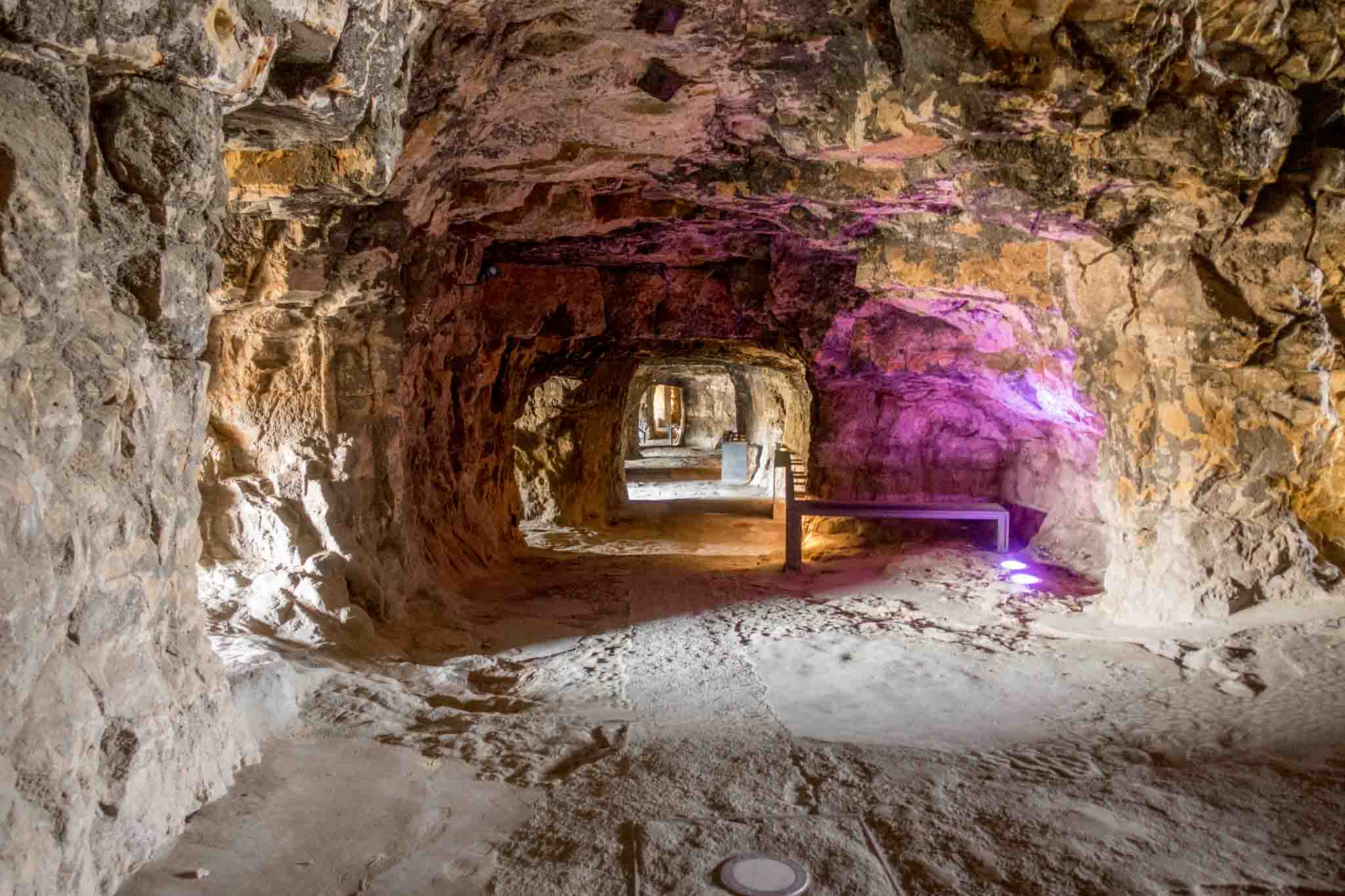
Casemates du Bock is one of the most historical Luxembourg City attractions and an important part of its designation as a UNESCO World Heritage Site .
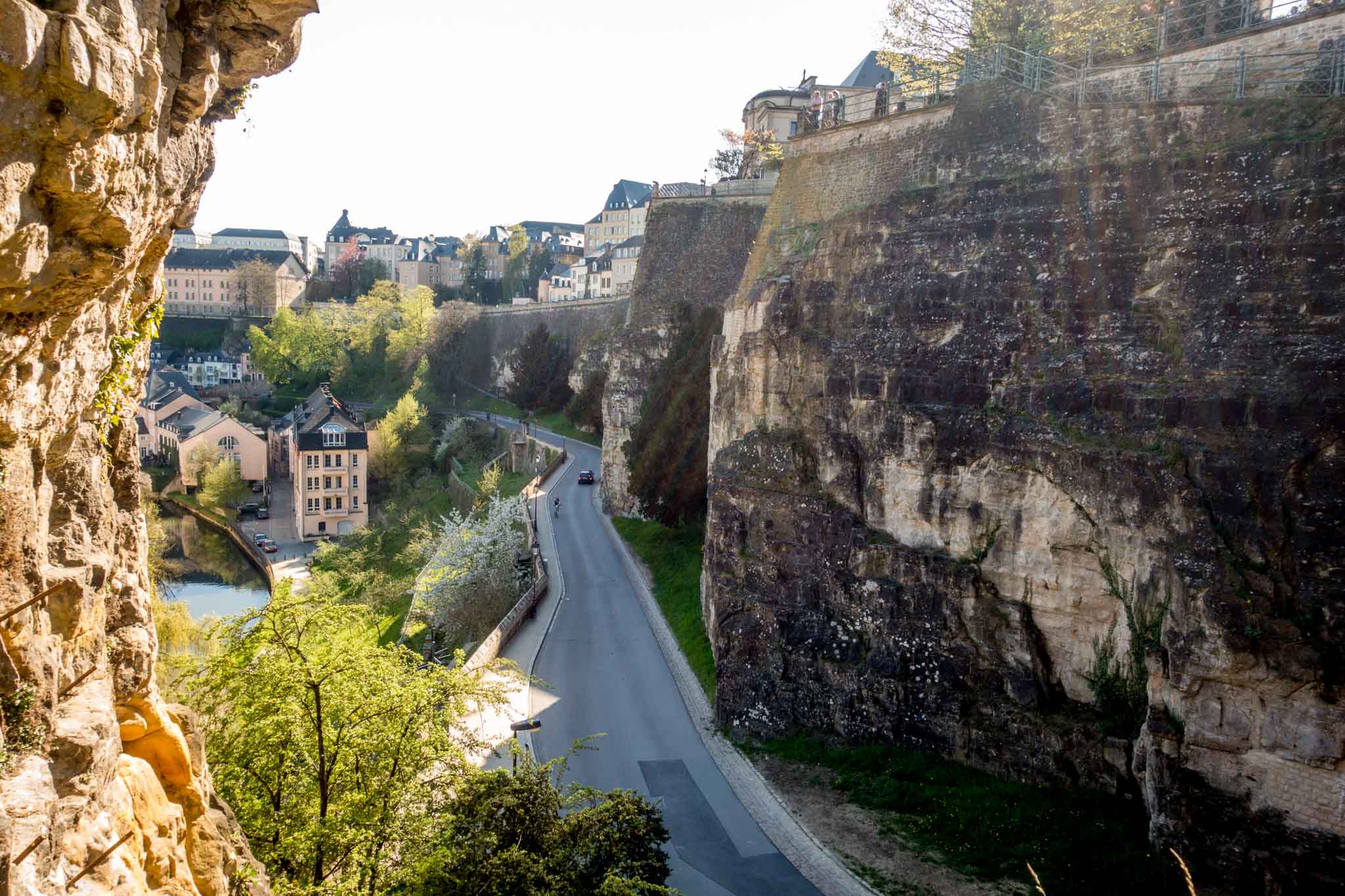
Built into the rock beneath the city’s ancient castle, this series of passages and fortifications contributed to Luxembourg’s defense over centuries of invasions. They included not only artillery slots and soldiers’ barracks but also served as workshops, bakeries, and even a bomb shelter during World War II.
Although the castle is now in ruins, visitors can tour a section of the cool 10-mile-long honeycomb of tunnels. The views from the Casemates over the valley are also pretty spectacular.
Interested in seeing the country? Check out more places to visit in Luxembourg .
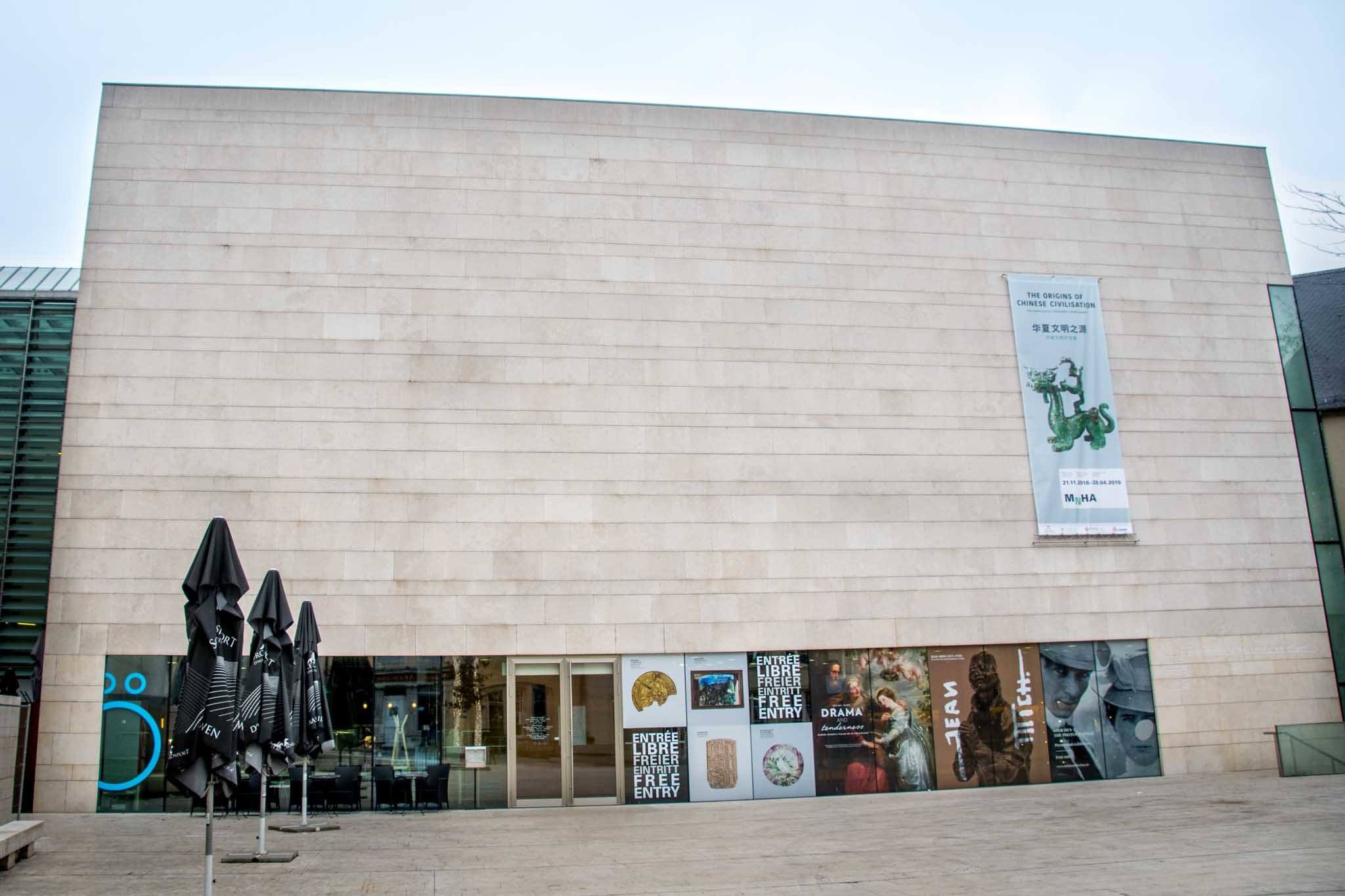
The National Museum of Archaeology, History and Art (NMAHA) combines aspects of history and art from Neolithic to modern times, covering every era of Luxembourg’s past in its massive collection. Its underground galleries house archaeological artifacts in rooms that are (fittingly) carved out of rock.
Elsewhere in the museum, you’ll find medieval objects, fine art, and an extensive collection of coins and currency from ancient times through the Euro. We particularly love the Roman mosaic from Vichten showing the Nine Muses that dates from 240 AD.
The museum’s permanent collection is free to visit, but there is a minimal cost for temporary exhibits.
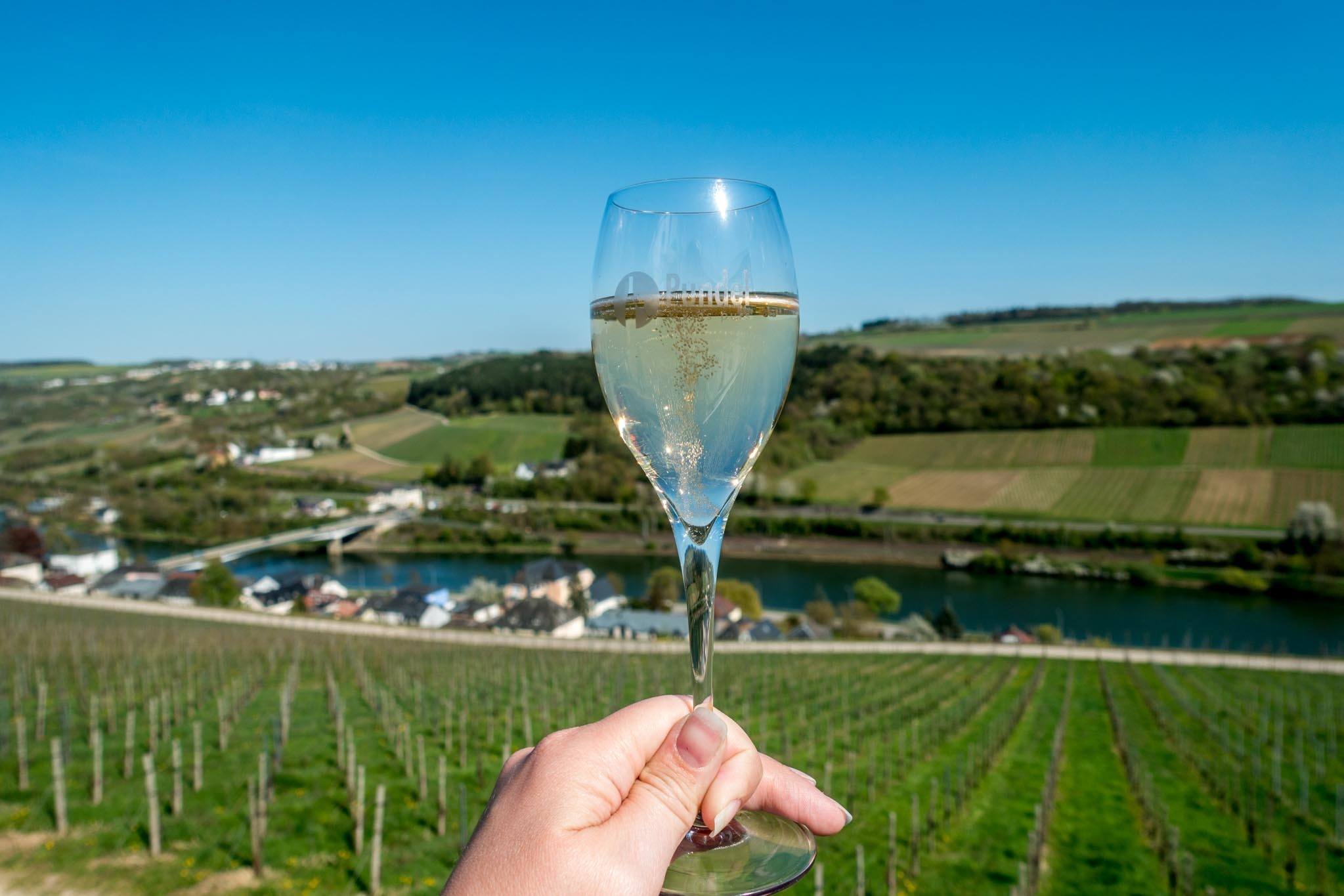
Luxembourg is bordered by France and Germany, two of the best wine-producing countries in the world . But did you know Luxembourg has vineyards, too?
Just over a half-hour by car or bus from downtown is the Moselle River valley where 16 million bottles of wine are produced every year. There’s lots of sparkling wine and other familiar varietals like Riesling and Chardonnay.
Many of the wineries in the Moselle River valley welcome visitors and offer tastings and tours where you can learn about the wine industry and its history in Luxembourg and try some varietals you may not have had before. Two of my favorite experiences were visiting the 100-year-old caves where the wine is aged at Caves St Martin and enjoying a glass on the terrace overlooking the river at Bernard Massard .
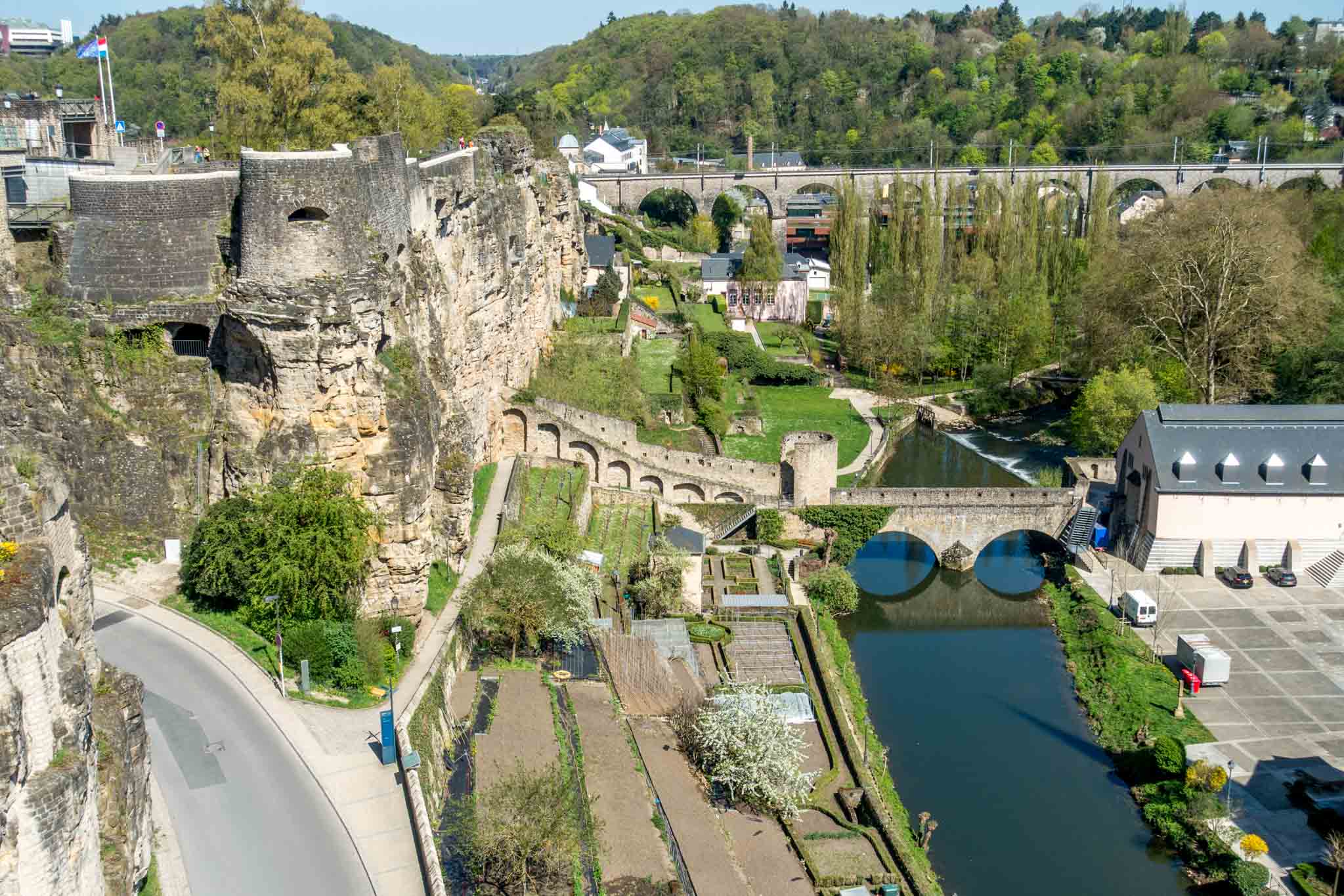
This is a small country with a complex history and unique culture. Who better to explain it than a local? Stop by the tourism office to join one of the dozens of Luxembourg sightseeing tours offered.
Whether you want to know about the UNESCO sites, a specialized architecture tour, or even a look at the city by Segway, there are lots of options. We chose a tour of the Old Town with a great overview of the history and the major sites and learned plenty of interesting things we wouldn’t have discovered on our own.
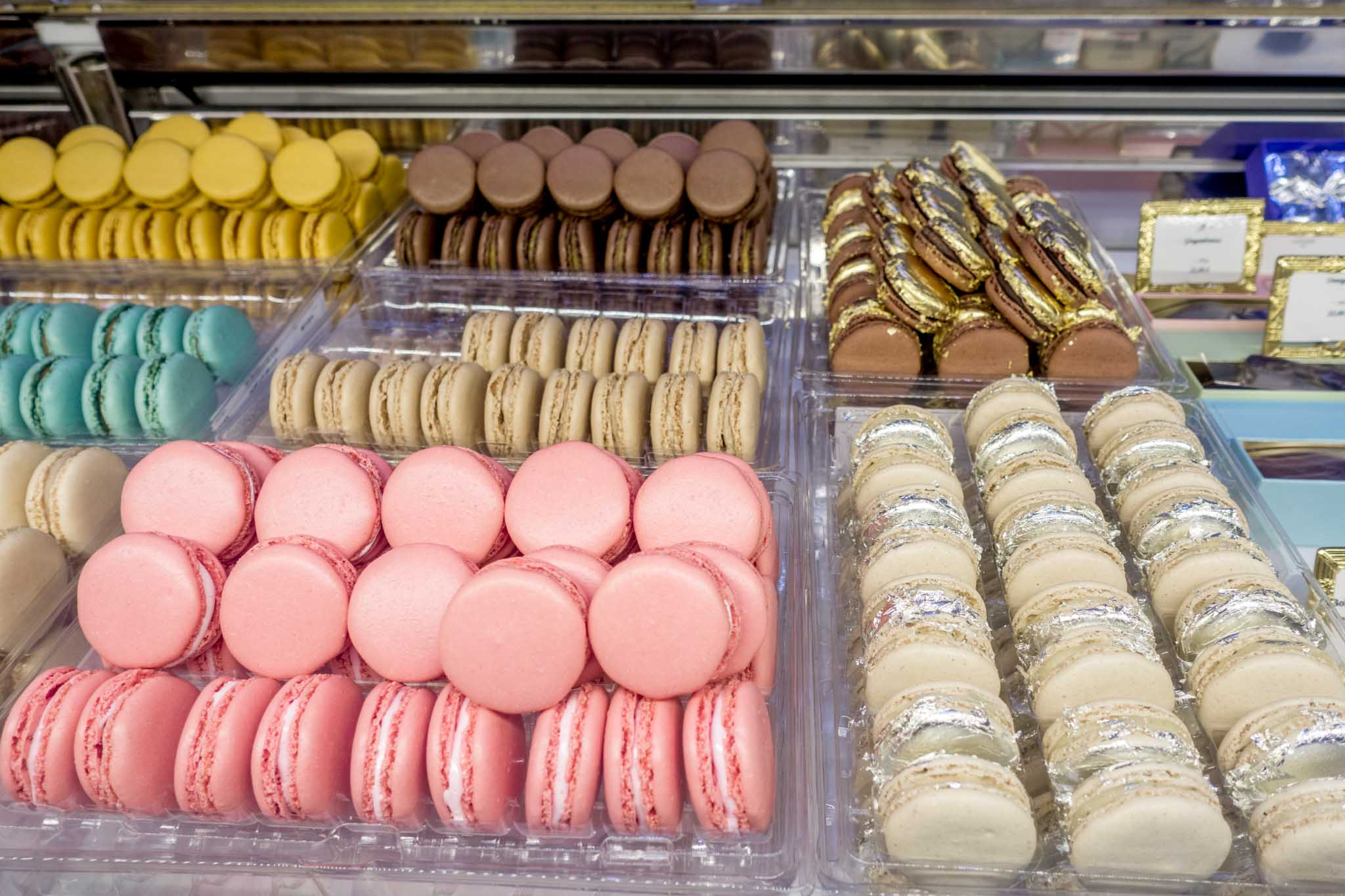
There is lots of international influence in Luxembourg, which takes many different forms. One of the tastiest is the renowned French bakery Ladurée , which has a location in the city center .
Famous for its macarons, Ladurée also has a wide variety of pastries plus coffee, hot chocolate, and more. It’s a lovely place to stop for an afternoon nibble, or you can take away some of their treats.
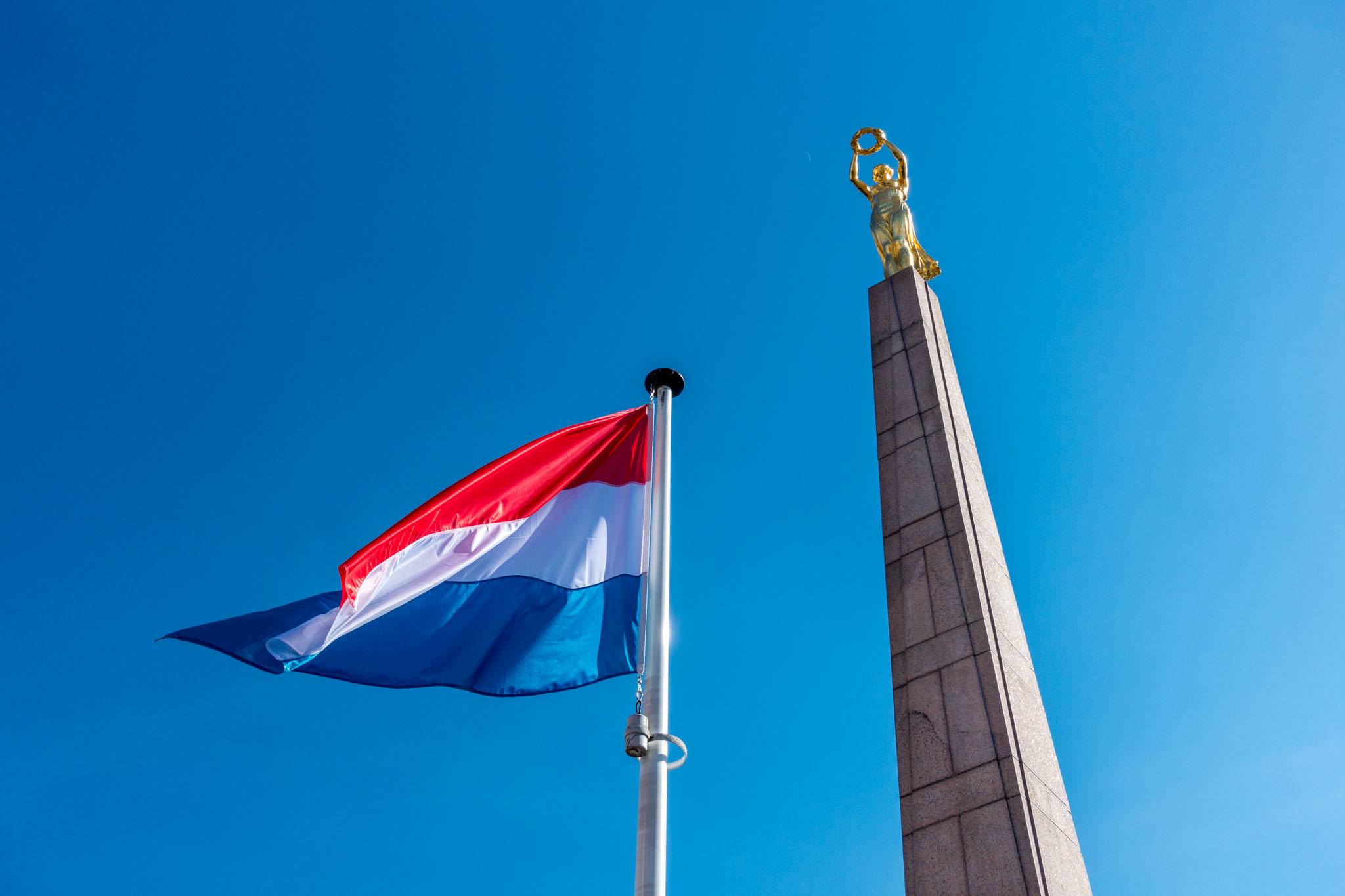
Soaring above Constitution Square, the Golden Lady (also known as Gëlle Fra or the Monument of Remembrance) is a symbol of the freedom and resistance of the Luxembourgish people and one of the country’s most famous landmarks.
She was initially erected in 1923 in honor of those who fought in World War I, but after being dismantled by the Nazis and later restored, her purpose was broadened. She is now a moving memorial to Luxembourgers who fought in both World Wars and Korea. Just behind her, don’t miss the sweeping views of the valley and Pont Adolphe.
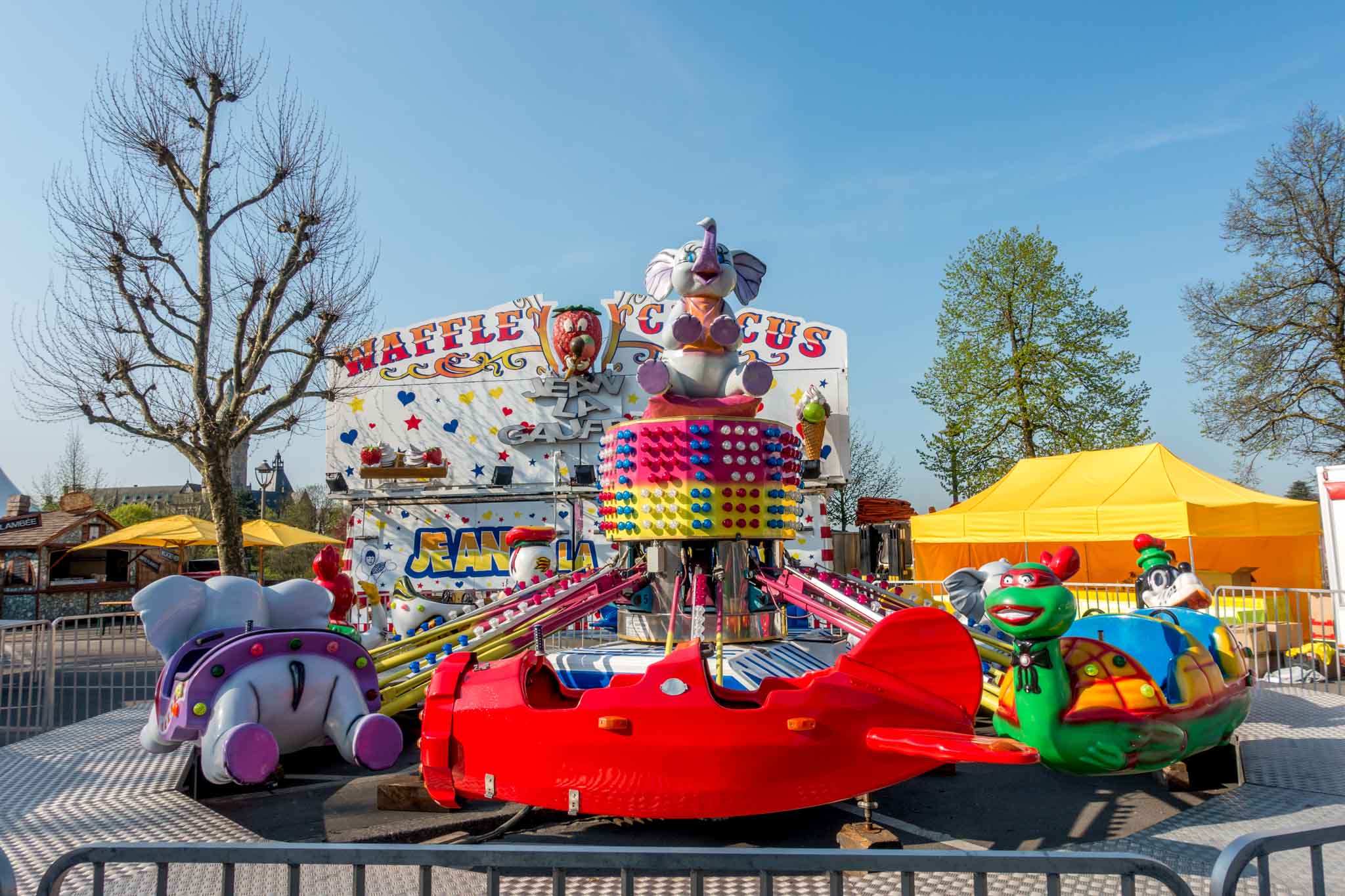
The city is a great place for festivals and outdoor events. Throughout the year, you can find fun things going on nearly every weekend covering a variety of interests.
In the spring, there are fairs and festivals related to Easter and other religious holidays. The summer brings free concerts, street art festivals, outdoor movies, and wine events. Winter has light festivals, car shows, and more. No matter when you visit Luxembourg City, there are plenty of special things to see and do.
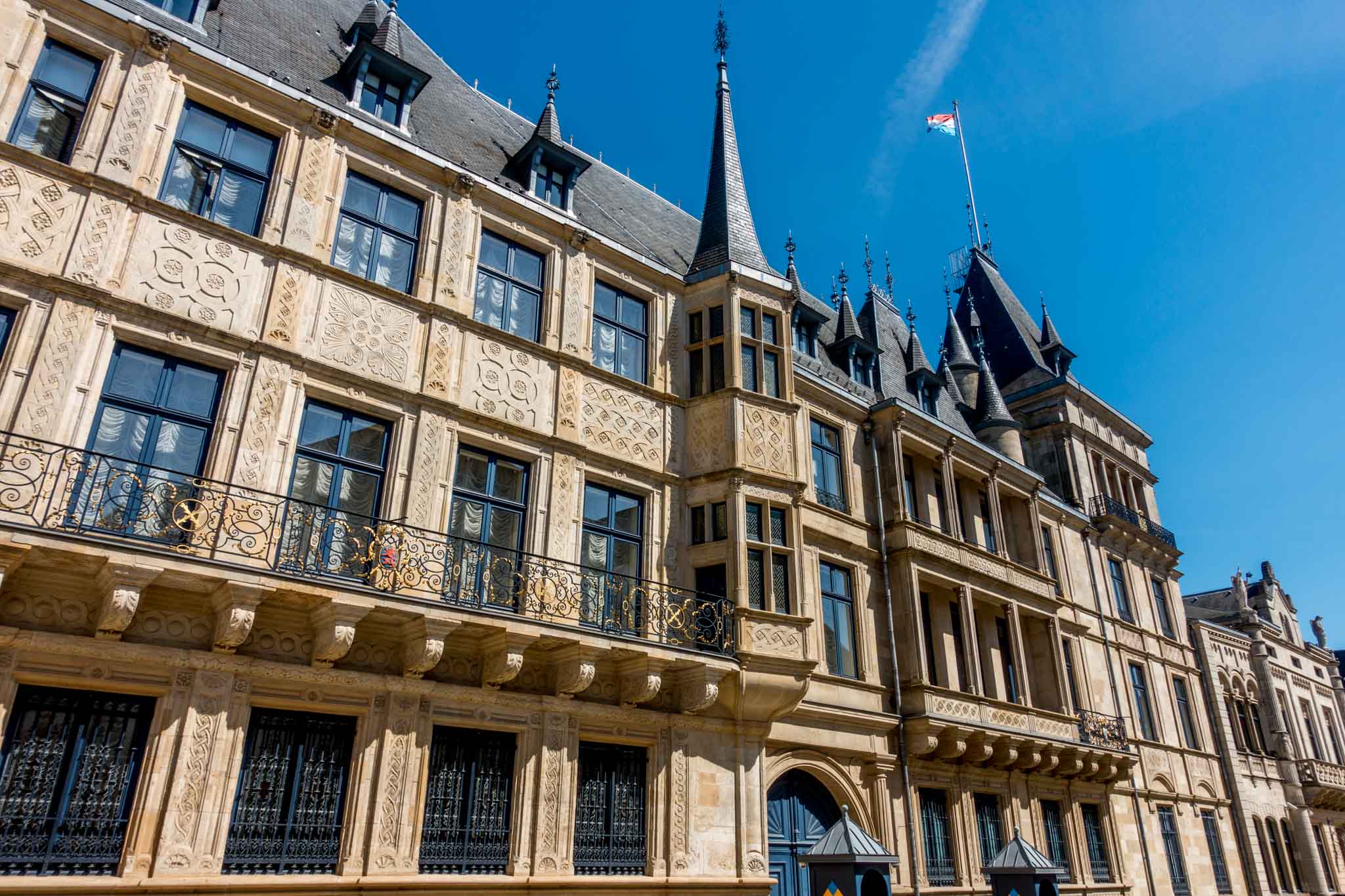
The Grand Duchal Palace, which dates back to 1573, has a prominent place in the middle of the city. The magnificent palace with its balconies and small turrets is still used today as the city residence of the royal family and the Grand Duke.
From mid-July through early September, the palace is open for guided tours . If you need a break after your visit, pop into the Chocolate House right next door for some of the best hot chocolate in the city.
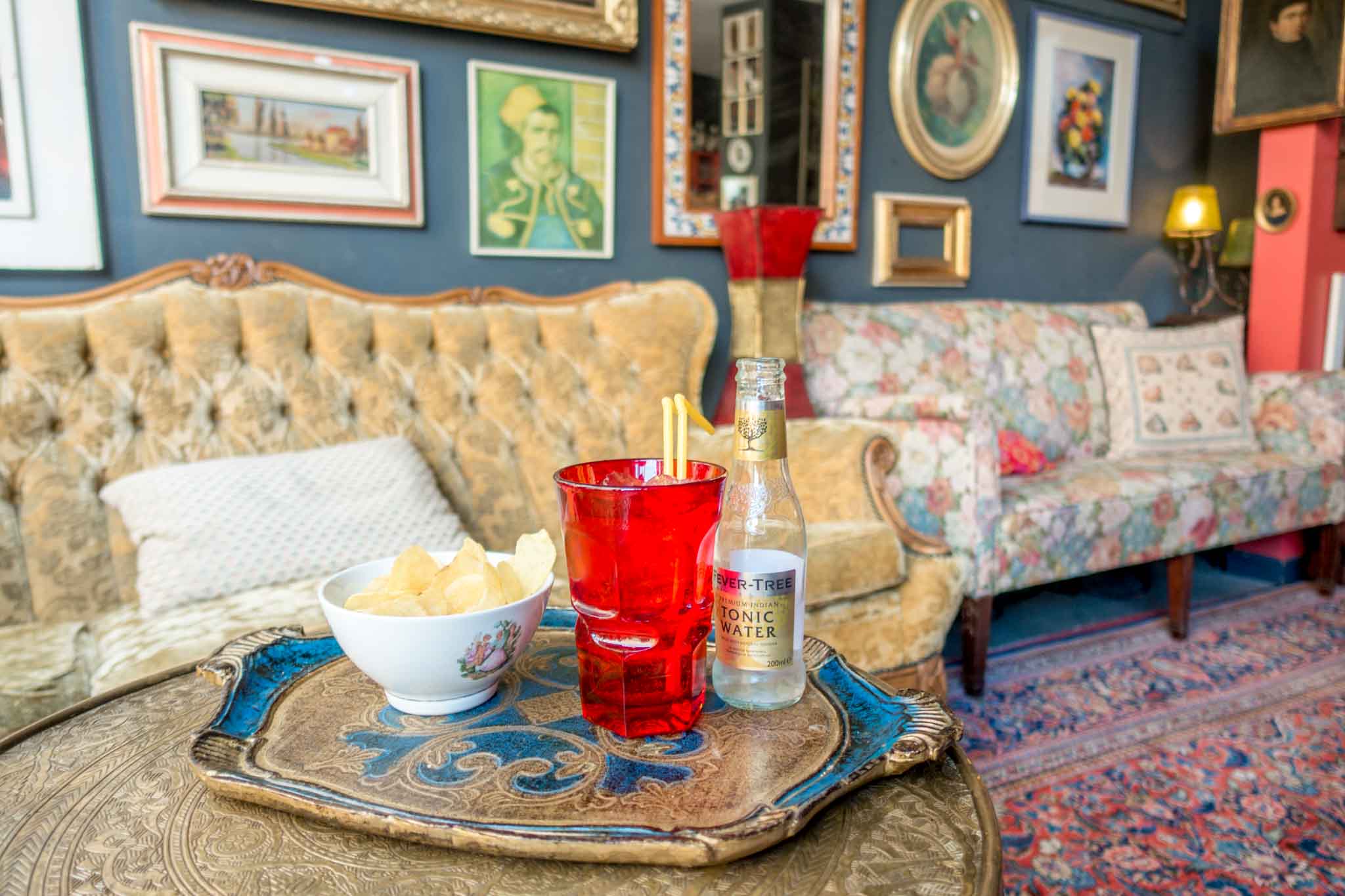
Luxembourg City has a thriving cafe culture and happy hour atmosphere. During the day (and often well into the evening), you can enjoy coffee, snacks, and hanging out or working remotely at many cafes throughout the city.
Around 5:00pm, the environment changes when professionals fill the lively sidewalk cafes for drink specials and evening events like trivia and live music. Some enjoyable spots, like my favorite Kaale Kaffi , combine coffee and cocktails with a fun atmosphere filled with art and vintage furniture.
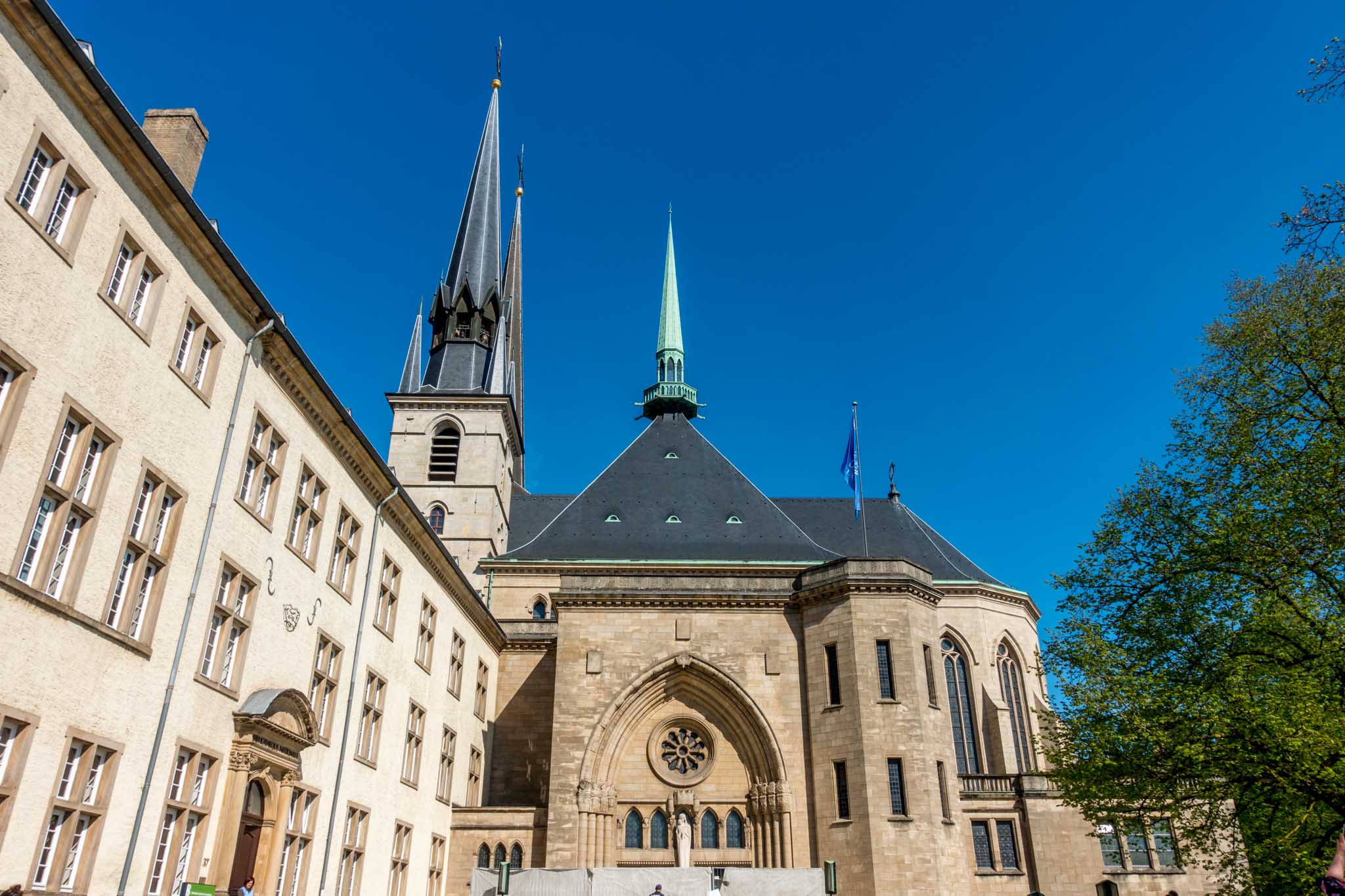
Notre-Dame Cathedral is the country’s only cathedral. A mixture of Late Gothic and Renaissance architecture, the cathedral is renowned for its stained glass and sculpted alabaster choir.
At over 400 years old, Notre-Dame Cathedral is one of the most historic places to see in Luxembourg City and its crypt is the resting place of some members of the royal family, with remains going as far back as the 1300s.
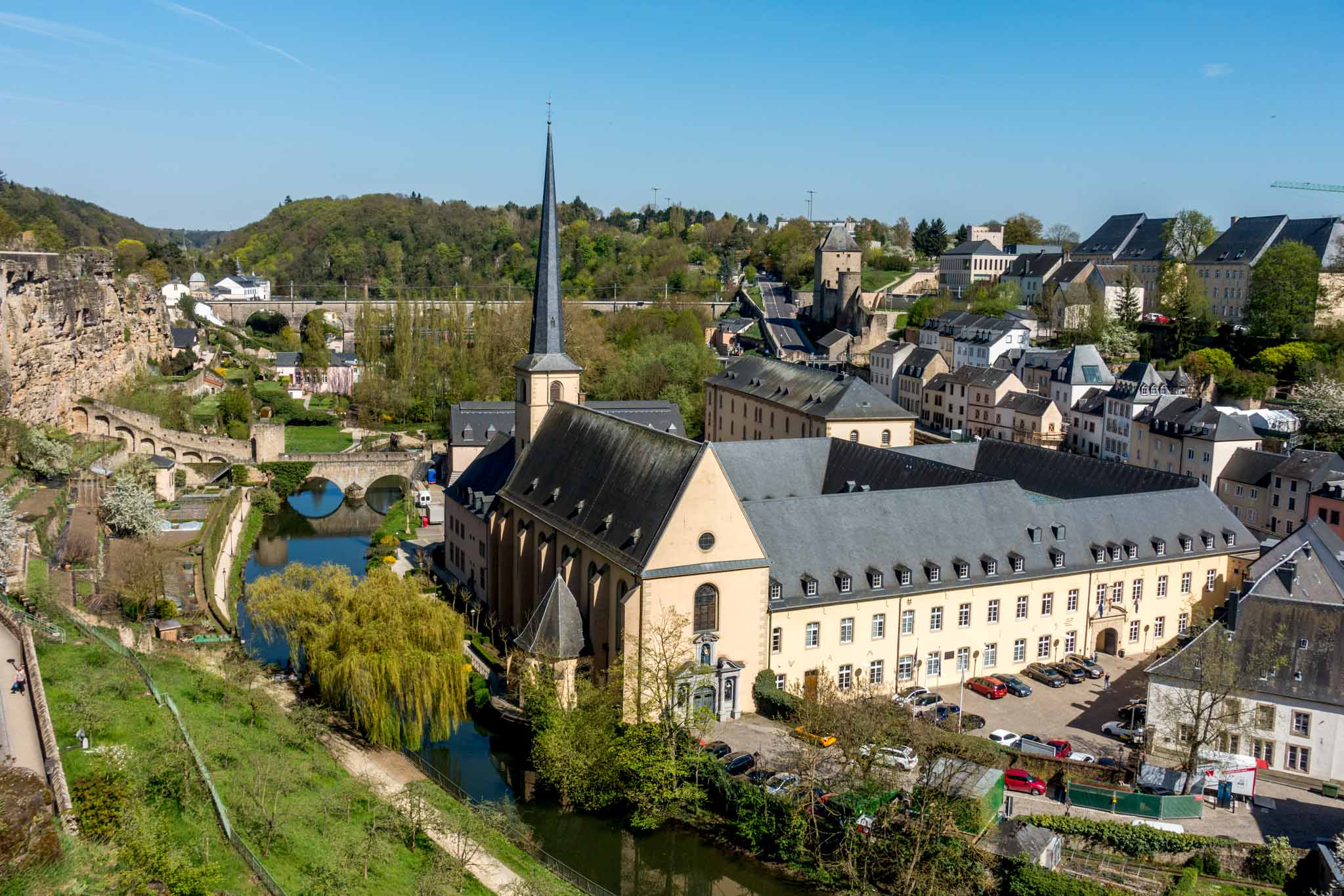
Thanks to its layout above and below the rocky outcropping of the Bock, the city has some amazing views. If you like photography or just looking out over pretty scenery, the Chemin de la Corniche is a must visit. From what’s been called the most beautiful balcony in Europe, you get a great view of the Grund from above as well as ancient city fortifications and bridges.
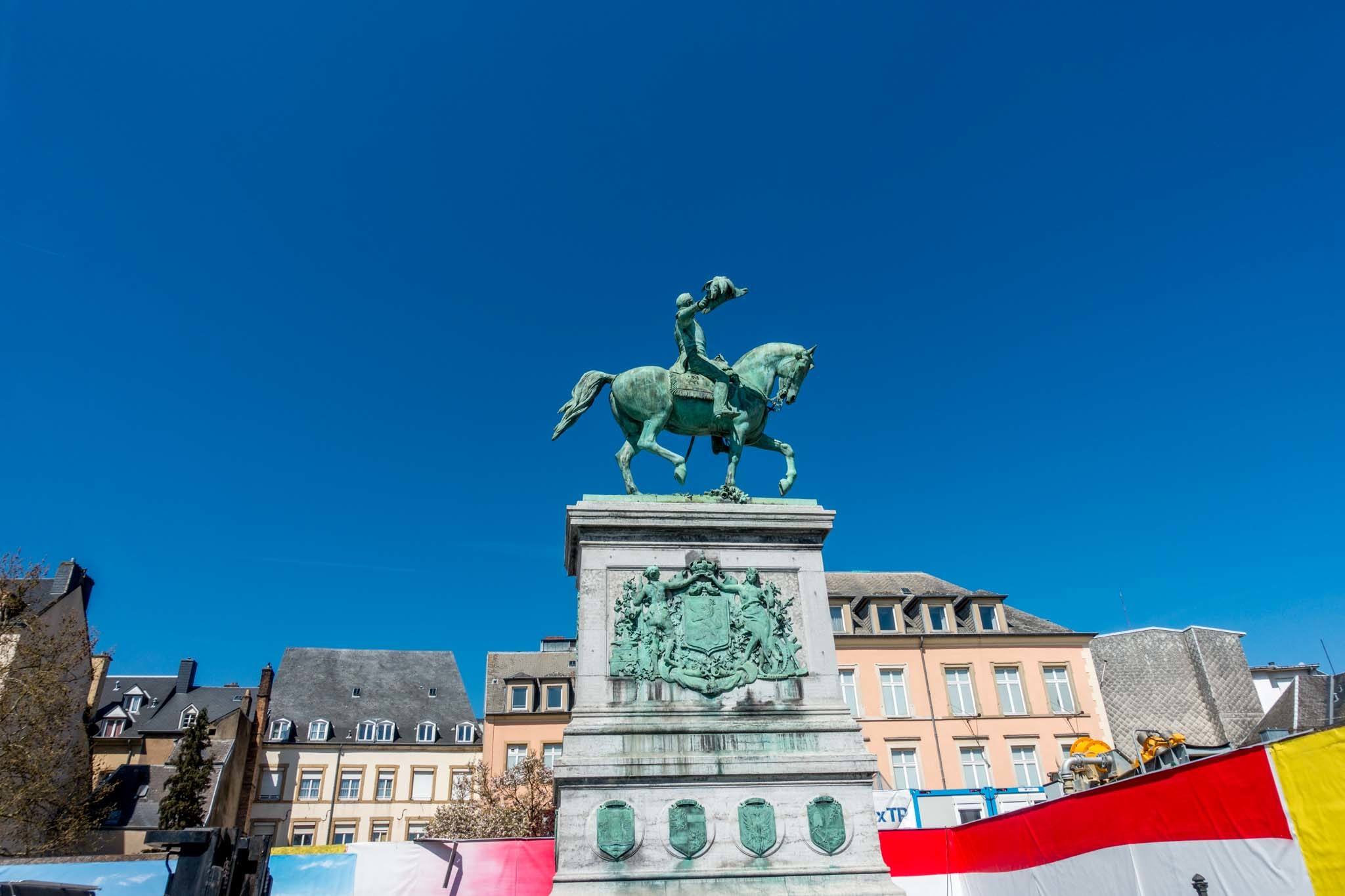
Place Guillaume II is a social center in the city. This lovely square named for Grand Duke William II (the French version of his name) features a statue of the Duke himself on horseback at the center. It’s ringed by restaurants with sidewalk cafes and hosts a twice-weekly market with flowers and fresh produce. In the summer, there are concerts, and it often hosts fairs and other special events. It’s a great place to spend some time people watching in the center of town.
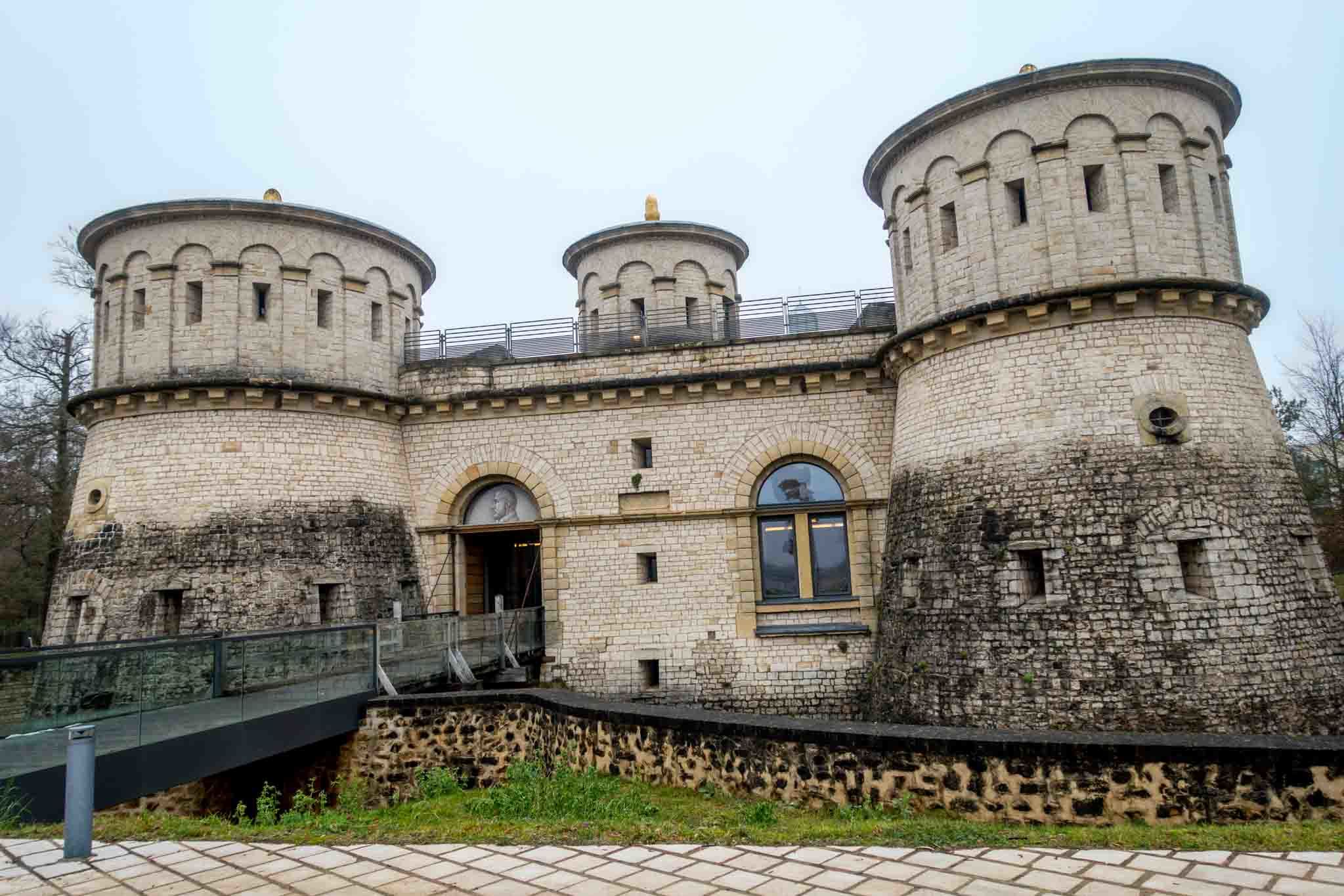
Outside of Old Town in the Kirchberg District, the Museum Dräi Eechelen is housed inside the renovated Fort Thüngen that dates from the 1730s. The museum’s permanent exhibition features more than 600 objects and documents within the old fort’s tunnels. They tell the story of the fortress of Luxembourg (the former fortifications of the city) from 1443 to 1903, offering an interesting look at this city on a rock. The first floor features rotating contemporary exhibits.
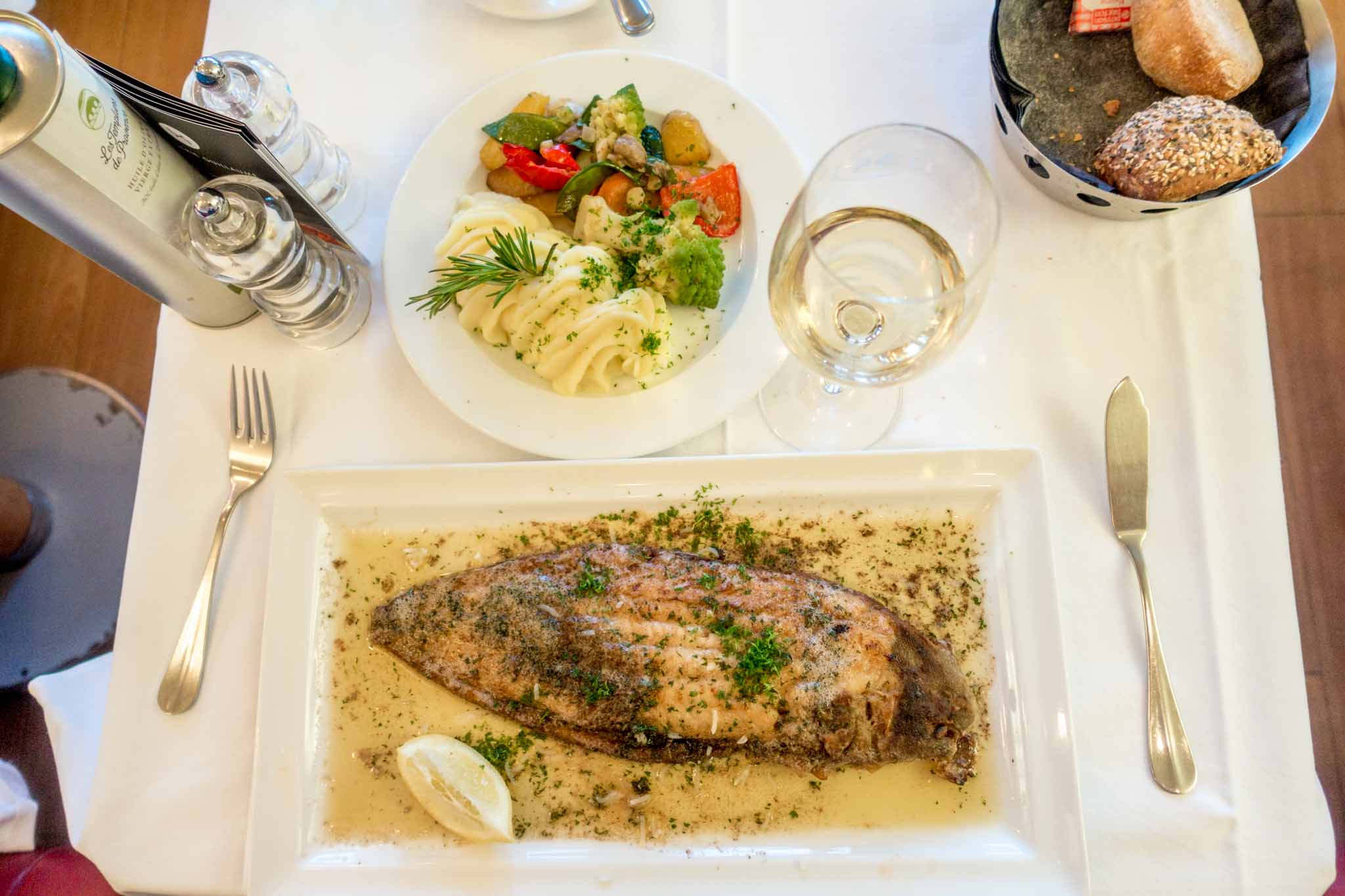
Perhaps the most unique thing about Luxembourg is just how international it is. There are many places (countries like Albania and Ecuador come to mind) where finding something other than traditional cuisine takes some work. But that’s not the case here.
Of course, you should try Luxembourg food because you’re in Luxembourg, after all. The cuisine has experienced a renaissance, so there are many places to indulge in excellent local dishes such as Friture de la Moselle (small fried fish from the Moselle River), Judd mat Gaardebounen (smoked pork neck with broad beans), or many other options. But if you’re looking to mix it up, a quick walk will take you to Nepalese cafes, Mexican restaurants, French patisseries, and more.
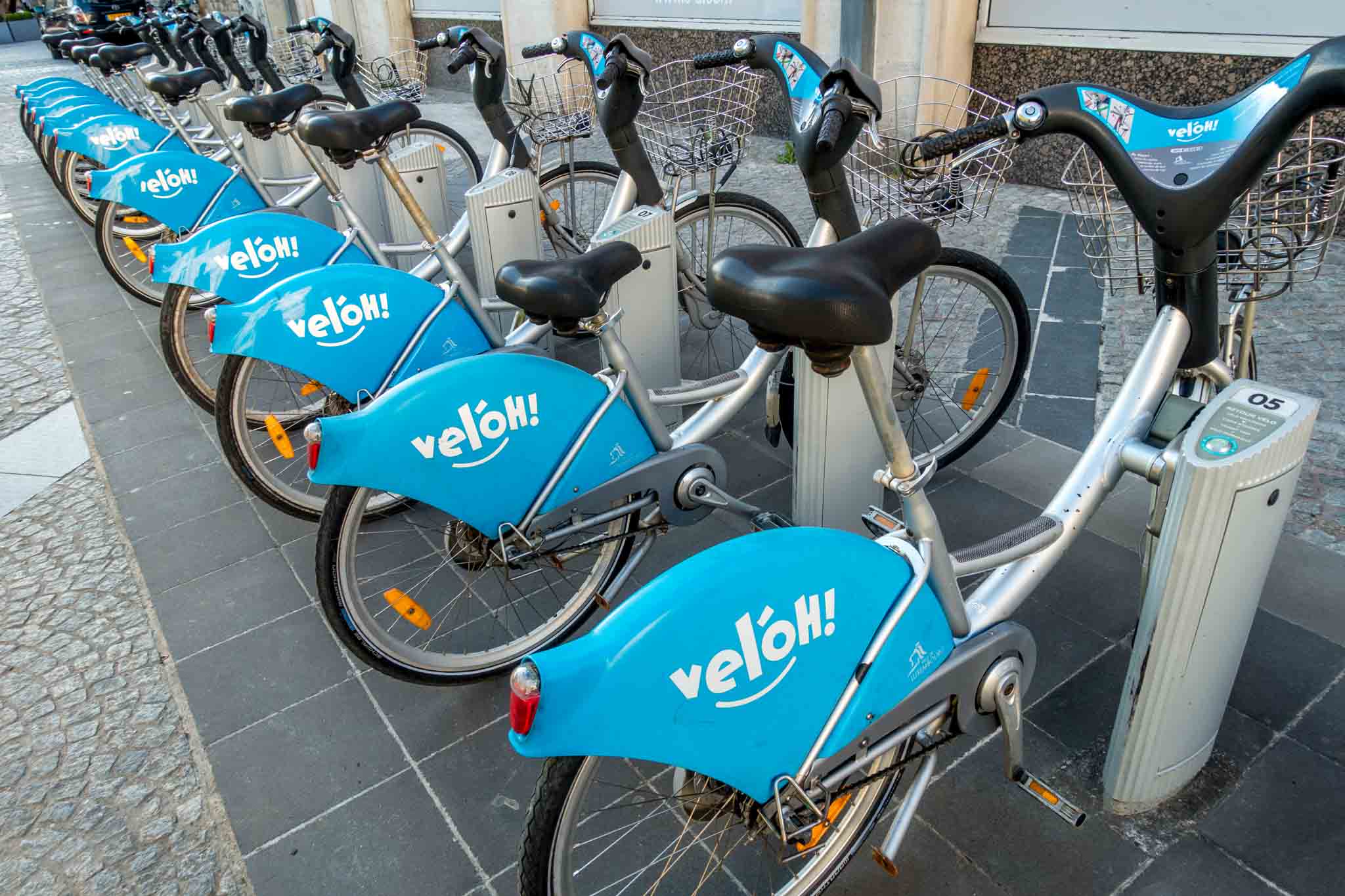
Luxembourg City—and, indeed, the whole country—is an ideal place for exploring by bicycle. The Grand Duchy has a network of over 370 miles of cycle paths. In the City, there are over 100 vel’oh kiosks where you can rent a bike to explore as long as you want. It’s an ideal way to see the sites and get some exercise at the same time.
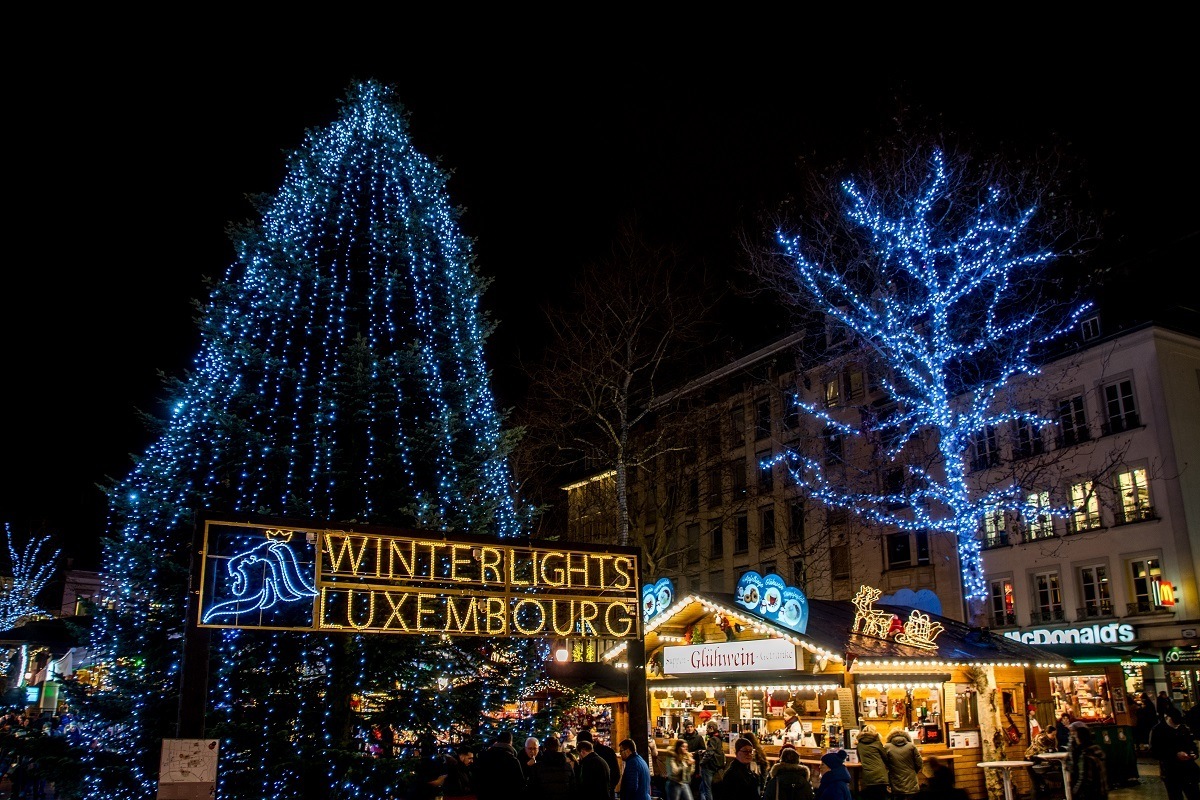
In December, the center of Luxembourg City feels like one giant Christmas market . In just five minutes from Place de la Constitution to Place d’Armes, you can visit three different festive areas.
The Christmas markets are a fun place to hang out. There are lots of things to eat like flammkuchen, tartiflette, sausages, and more, and plenty of drinks to help keep you warm. There’s also lots of shopping, rides, and great people watching. If you get really cold, you can park yourself right in front of the open fires.
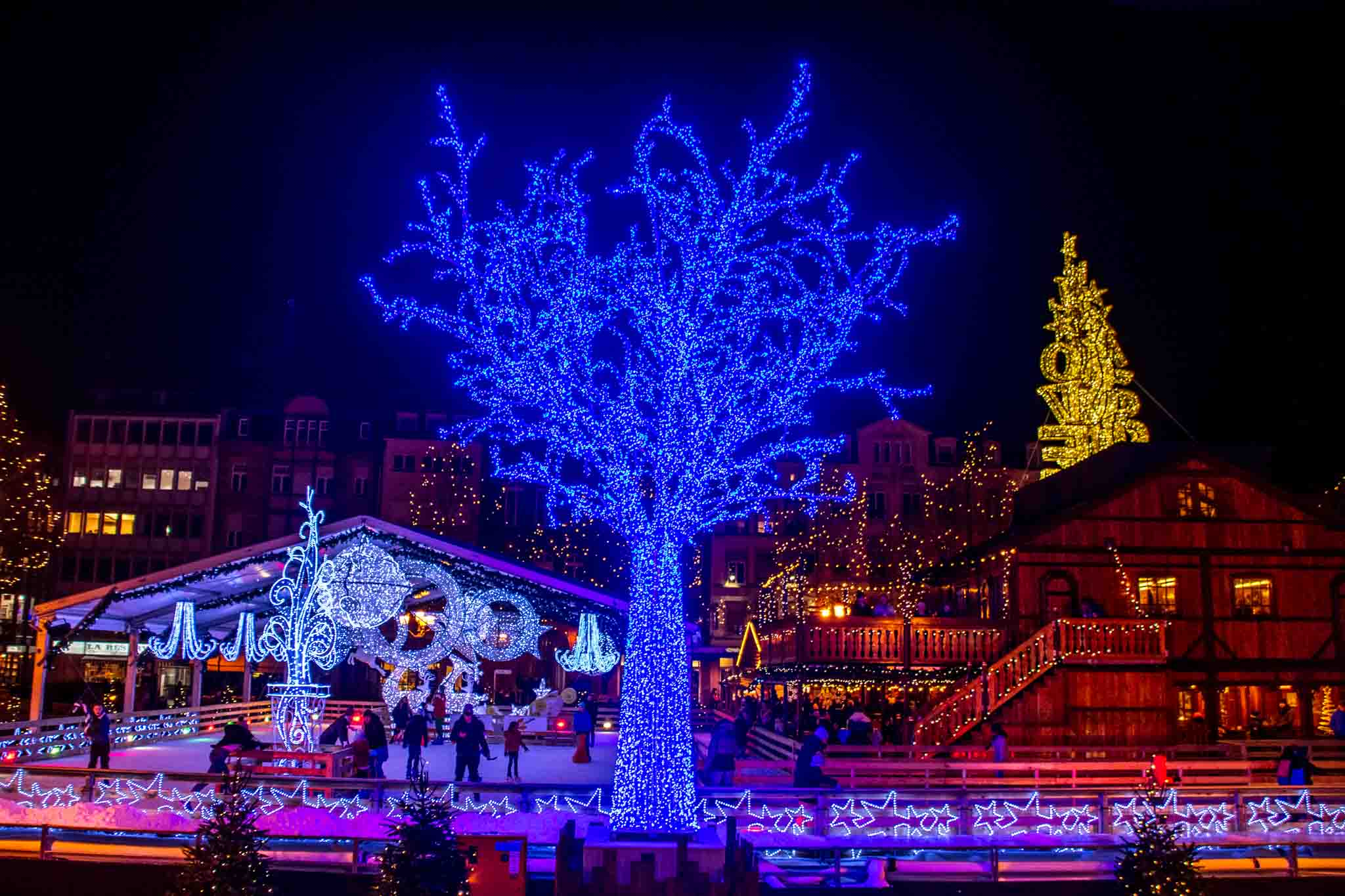
The Luxembourg Christmas markets are some of our favorites we’ve visited in our travels across Europe. Because of Luxembourg’s location, the markets have French and Belgian influence, and they reminded us a lot of markets we’ve visited in Germany . Don’t miss them.
Where to Stay Hotel Simoncini : In the heart of Luxembourg City, Hotel Simoncini is the perfect home base for exploring the old town. It is comfortable, has a great breakfast, and is steps from the main attractions. Park Inn : Steps from the central train station, the Park Inn by Radisson offers modern accommodations at a budget-friendly price. Visitors appreciate the comfortable beds and friendly service. Hotel Le Royal : The 5-star Hotel Le Royal is one of the top hotels. With multiple restaurants, a spa, and a salon, this is the place if you’re looking for convenience and luxury.
Laura Longwell is an award-winning travel blogger and photographer. Since founding Travel Addicts in 2008, she has written hundreds of articles that help over 3 million people a year get the most out of their travel. In that time, she has visited nearly 60 countries on 5 continents, often returning to favorite destinations over and over again. She has a deep love of history, uncovering unexpected attractions, and trying all the good food a place has to offer.
In addition to Travel Addicts, Laura runs a site about her hometown of Philadelphia—Guide to Philly—which chronicles unique things to do and places to see around southeastern Pennsylvania. Her travel tips and advice appear across the web.
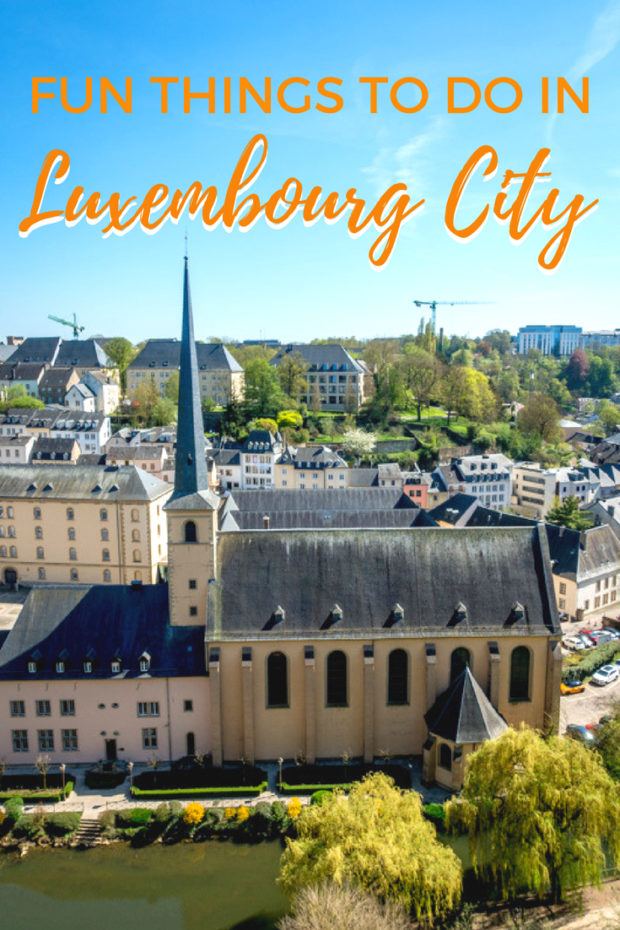
Share this post:
This site uses Akismet to reduce spam. Learn how your comment data is processed .
Jamie Pietropaolo
Friday 21st of October 2022
What a lovely article! This makes me want to visit as soon as possible, the little country I heard about from a college friend who is from Luxembourg (hi, Michel!) and that I, very likely, otherwise would have overlooked.
Thursday 14th of October 2021
Please I wish to go there for studies ( masters program). Is there employment opportunities for external student in the country ?
Laura Longwell
Sorry, I'm not familiar with work requirements.
John Russel
Tuesday 13th of August 2019
Just came back from a trip to Luxembourg, your recommendations were great! Thank you :)
Thursday 9th of August 2018
Nice introduction to Luxembourg for someone who plans to visit this wonderful place

20 Top-Rated Tourist Attractions in Luxembourg
Written by Bryan Dearsley Updated May 26, 2022
Although a small country of just 600,000 people that only covers around 1,650 square kilometers, the Grand Duchy of Luxembourg delivers a considerable diversity of attractions and fun things to do.
While many of the country's top sightseeing opportunities and points of interest lie in vibrant Luxembourg City (Stad Lëtzebuerg in Luxembourgish), the old quarter of which has been designated a UNESCO World Heritage Site , Luxembourg's many small towns are equally lovely and are well worth exploring.
It's also an extremely easy country to travel around. Whether you're exploring on foot in the capital city, are planning on taking a driving tour through the picturesque countryside, or are doing some town-hopping by train, you'll never have to travel too far before finding something worth seeing.
Old fortresses and castles complement the country's beautiful scenery, making it a popular tourist destination that is frequently visited in combination with surrounding countries such as Belgium and the Netherlands.
You'll find the best places to visit in this charming West European country with our list of the top attractions in Luxembourg.
1. The Old Quarter of Luxembourg City
2. national museum of history and art, luxembourg city, 3. the bock casements, luxembourg city, 4. grand ducal palace, luxembourg city, 5. the walls of the corniche, luxembourg city, 6. william square (place guillaume ii), luxembourg city, 7. grand duke jean museum of modern art (mudam), luxembourg city, 8. echternach and its benedictine abbey, 9. the luxembourg ardennes, 10. luxembourg city history museum, 11. bourscheid castle, 12. mondorf-les-bains and the moselle, 13. upper sûre natural park and esch-sur-sûre, 14. walferdange and its castle, 15. notre-dame cathedral, luxembourg city, 16. larochette, 17. berdorf, 18. beaufort castle, 19. vianden castle, 20. parc merveilleux.
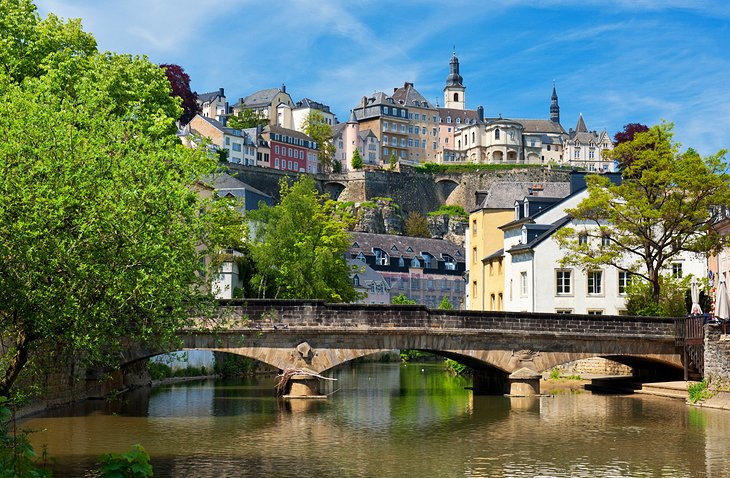
There's no better place to begin exploring beautiful Luxembourg City than in its historic Old Quarter. Often referred to locally as simply "d'Stad," this wonderfully preserved old city center was designated a UNESCO World Heritage Site in 1994.
The city's impressive ancient fortifications also ensured its place as one of the most strategically important of Europe's major cities. The fortress was so impregnable, in fact, it was dubbed the "Gibraltar of the North." Although the original fortress was dismantled between 1867 and 1883, its impact upon the Old Quarter is evident everywhere.
Today, the old fortifications have given way to beautifully laid out parks and gardens, while its cobbled streets are lined with charming old homes and buildings. It's a great place to spend a few hours exploring as you cross its many bridges, including the spectacular Adolphe Bridge , considered a city landmark. You'll also traverse many interesting alleyways. For an added dose of fun, don't make use of a map; instead just follow your nose and see where you end up!
While there's ample public parking, if you're arriving by car, consider using one of the city's excellent park-and-ride facilities. Better still, arrive by train and book a stay in an Old Quarter hotel.
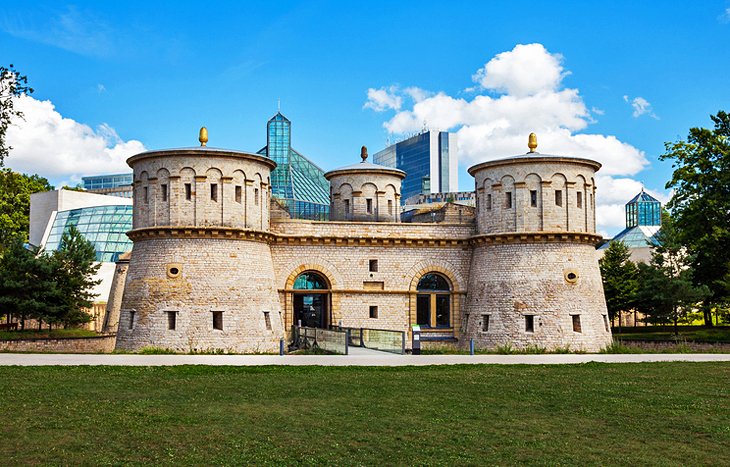
If you were to judge Luxembourg City on the quality of its museums, never mind its status as one of Europe's most historically important cities, it would still rank extremely high on the list of the continent's must-see cities. Topping the list is the National Museum of History and Art (Nationalmusée fir Geschicht a Konscht, or (MNHA).
It's located in the historic Fish Market area, once the original town center. The MNHA's collections include art objects, archeological finds, furniture, tools, coins, arms, and documents dealing with the history of the country, all of them housed in a stunning new building.
There's a particular emphasis on the Gallo-Roman period, with numerous fine displays illustrating the artistic, social, religious, and intellectual life of Luxembourgers from the 16th to the early 20th centuries. The contemporary art section is also a must-see, and is furnished with works by many of the most important artists of the 20th century. Guided tours in English are also available, and a research library and shop are also located on-site..
The unique Am Tunnel , or Galerie d'Art Contemporain Am Tunnel, is also worthy of a visit for art lovers. Located, as the name suggests, in an old tunnel, this contemporary art gallery with its first-rate collection of visual arts offers a pleasant respite from the many larger, busier museums and galleries in the city.
Address: Marché-Aux-Poissons, 2345 Luxembourg City
Official site: www.mnha.lu/en/
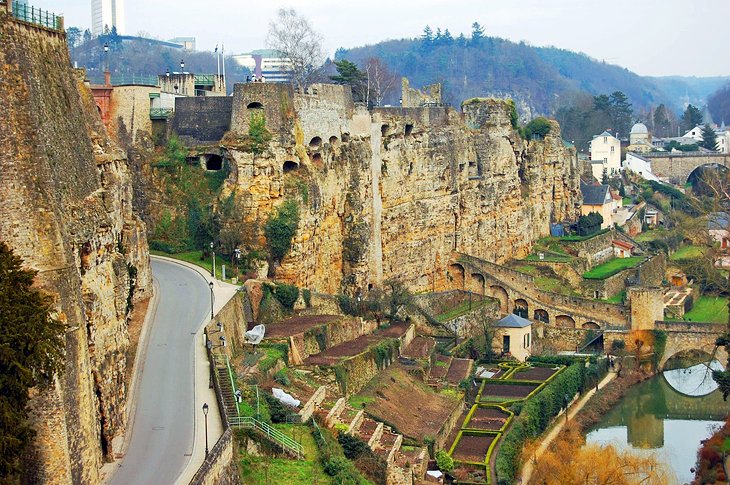
Luxembourg's Bock cliff, or Bockfiels, with its fortifications and cannon-loopholes, is where you'll find the entrance to the famous Casemates (Casements du Bock), a 21-kilometer network of underground passages hewn from solid rock. Capable of sheltering thousands of defenders, as well as equipment and horses, it also housed workshops, kitchens, and slaughterhouses.
All told, the Casements, some of which date back to Spanish rule in 1644, cover an impressive 40,000 square meters. Today, much of these remarkable fortifications can be explored on foot, while organized guided tours are available for those wanting to learn more about the tunnels' fascinating history.
On the Bock plateau itself are the remains of the old castle, discovered in 1963. There are beautiful views of the suburb of Grund and the Rham Plateau, the old 19th-century barracks, and the big towers and remains of the Wenceslas wall dating from 1390.
Address: 10 Montée de Clausen, 1343 Luxembourg City
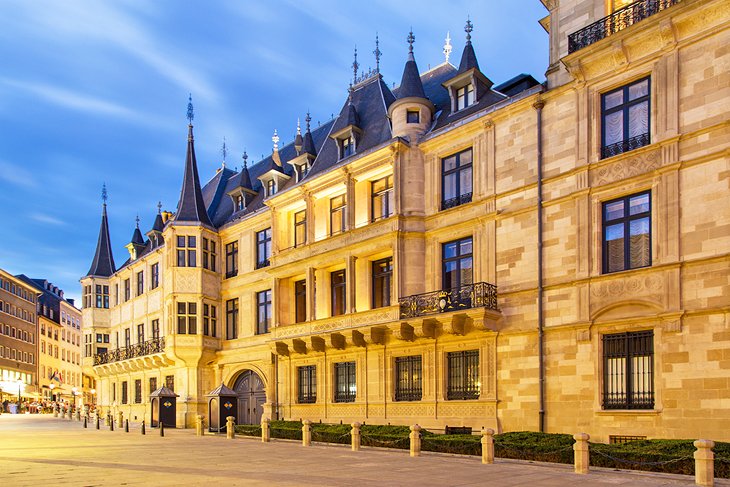
The Grand Ducal Palace (Groussherzogleche Palais) is a must-see landmark in Luxembourg City. This gorgeous Renaissance building dates from 1572 and serves as the official residence of the country's reigning monarch, Grand Duke Henri . It was built as the city's original city hall in 1572, a role it served until 1795 before switching eventually to its present use as the Grand-Ducal Place in 1890.
While it's still the full-time home of the Duke, the public are permitted an opportunity for a peek inside during special organized tours made available from mid-July to the first week of September, when it becomes one of the city's most visited attractions.
Nine tour options are available daily, and are conducted in a variety of different languages, including English. Tickets are made available through the Luxembourg City Tourist Office from their office in Place Guillaume II.
Highlights of the tour include a chance to see the plush, elegantly furnished interior, including the ceremonial rooms used on significant occasions, such as visits by foreign dignitaries.
Address: 17 Rue du marché-aux-Herbes, 1728 Luxembourg City
Official site: https://monarchie.lu/en/visit-grand-ducal-palace
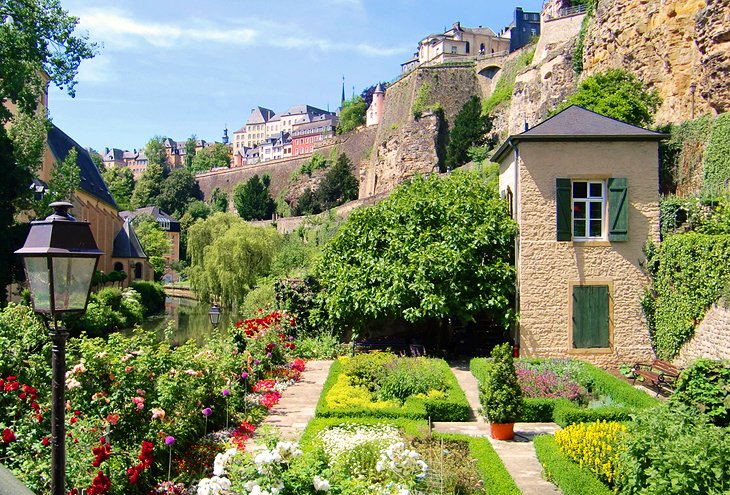
The spectacular Walls of the Corniche (le Chemin de la Corniche) in Luxembourg City have been called "the most beautiful balcony in Europe." Towering over the old city in the river valley below, it's here you'll find the big Gate of the Grund dating from 1632. Its ramparts reveal several aristocratic houses and refuges, as well as the ancient convent of the Dominicans and St. Michael's church (987 CE).
In the suburb of Grund itself is a large cluster of buildings with the church and ancient Abbey of Neumünster . It's notable for its 17th-century cloister of Limoges, an organ dating from 1720, and a 14th-century "black virgin." The adjacent buildings are part of the ancient Hospice St.-Jean, founded by Emperor Henri VII, Count of Luxembourg, in 1309.
Address: Chemin de la Corniche, 1945 Luxembourg City
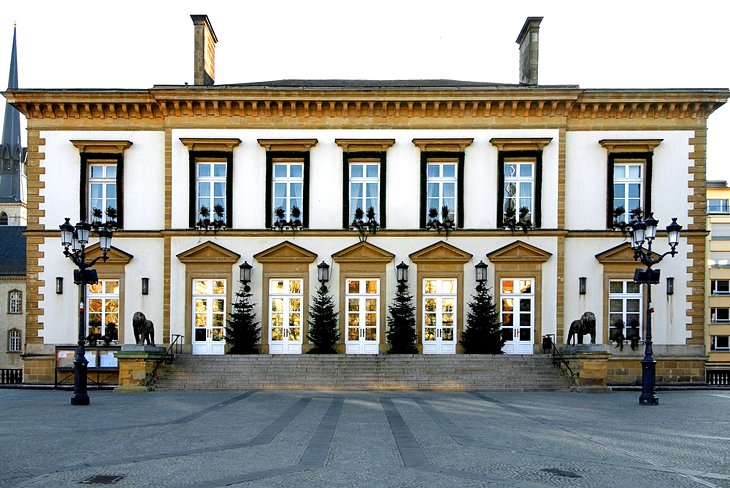
Luxembourg's William Square (Place Guillaume II) is one of the city's largest open spaces. The former site of a Franciscan convent, it has since been converted into a pedestrian zone. In the center is the equestrian statue of William II, King of Holland and Grand Duke of Luxembourg.
William Square is also where you'll find the lovely Town Hall and the famous Trémont's lions. Here, too, the city's popular weekly market is held, and is famous for its flowers and plants, as well as local produce.
Nearby is the 16th-century House of Raville with its beautiful façade, well-restored balcony, and spiral staircase. Other notable landmarks are the Spanish Turret with its superb views of the Pfaffenthal suburb, and the old cavalry-barracks of Vauban. Dominated by Fort Thüngen , it's also known as the "Three Acorns" for the three acorns that adorn each of its three towers.
And be sure to take your time exploring this beautiful area. It's a delightful spot to stop for a meal or beverage at any one of the many fine cafés and restaurants located here.
Address: 23 Rue du Fossé, 1536 Luxembourg City
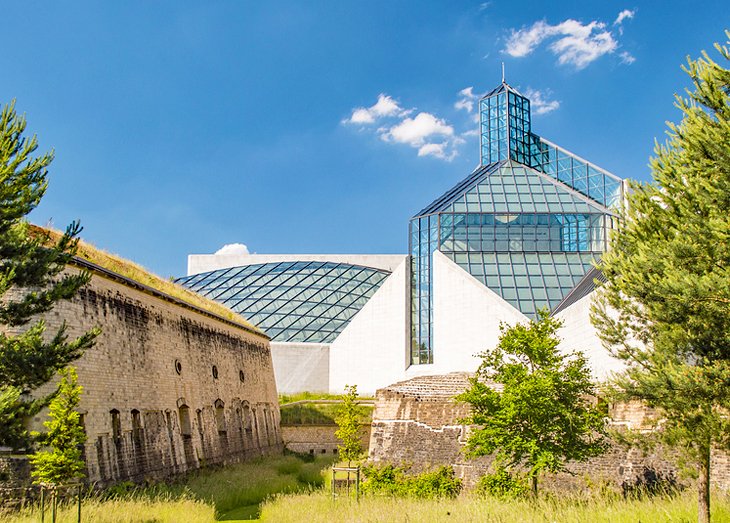
Fans of modern art and ultra-modern architecture must visit the superb Grand Duke Jean Museum of Modern Art (Musée d'art moderne Grand-Duc Jean). It's also referred to simply as MUDAM, and its contemporary art collections from world-renowned artists make it one of Europe's most important art galleries.
Since its opening in 2006, MUDAM has drawn consistent rave reviews for its large contemporary collection. Highlights include works from such well-known artists as Bruce Nauman, Andy Warhol, and Julian Schnabel, to name but a few.
In addition to its fine permanent artworks on exhibit, the museum features many visiting and temporary displays. Also available to the public are a variety of first-rate educational programs and workshops, including some geared specifically to kids.
A large shop selling related gifts and souvenirs is located on-site, as is a great café. Guided tours are also available in English.
Address: 3 Park Drai Eechelen, 1499 Luxembourg City
Official site: www.mudam.lu/en/home/
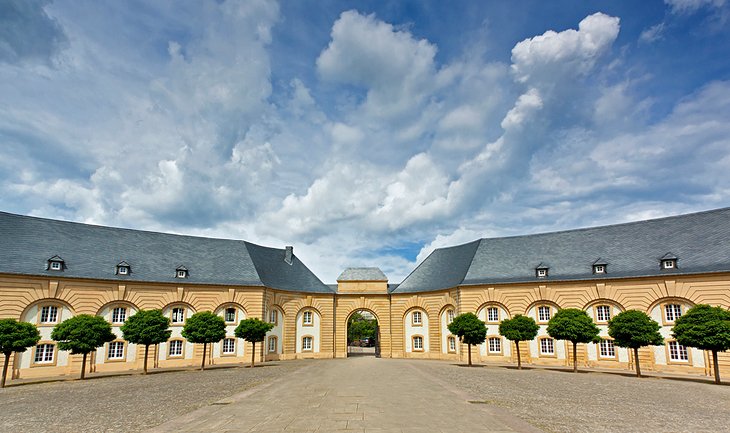
The beautiful town of Echternach lies on the bank of the River Sûre, which forms the border with neighboring Germany. The Mëllerdall and Germano-Luxembourg Nature Parks are located nearby, and the surrounding woods are crisscrossed with hundreds of footpaths leading to spectacular rock formations, waterfalls, a lake, and numerous lovely viewpoints.
The town itself is well known for its centuries-old dancing procession, which takes place on Whit Tuesday and attracts visitors from around the world. The old aristocratic houses, narrow streets, and ancient ramparts have helped Echternach maintain its medieval appearance.
A must-see is the seventh-century Abbey of Echternach. This former Benedictine monastery is popular for its superb museum and is notable for its four long wings built around a large square courtyard. The basilica, considered the most important religious building in the country, is home to a crypt with a magnificent white marble sarcophagus containing the remains of St. Willibrord, the founder of the abbey, and its vaults are painted with frescoes dating back to the 10th century.
Echternach is also famous for its international music festival , which runs from late May to late June. The town also offers great dining at its many restaurants, as well as numerous boutique shops and galleries, a variety of top-rated hotels, and camping.
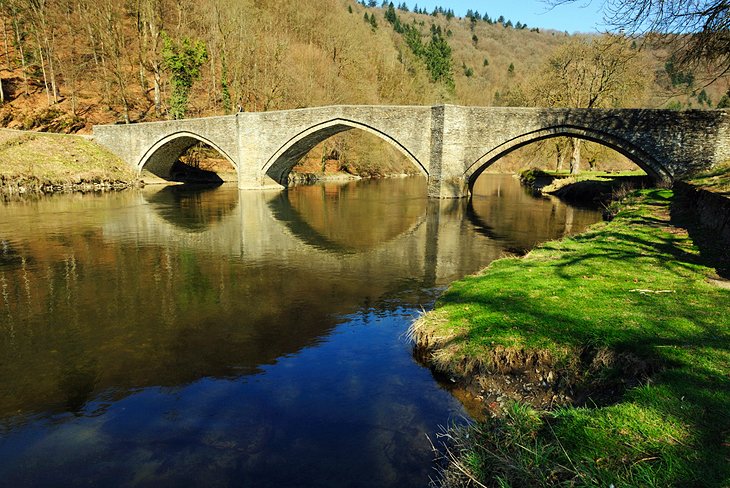
Standing in stark contrast to the rather flat landscape around Luxembourg City, the Ardennes is where you'll find high forested plateaus, sheer cliffs, wooded hills, and hidden valleys, as well as countless impressive views. This picturesque region, famous as the place where Hitler staged his last major campaign of WWII, boasts numerous castles, fortresses, and fortified farms rising out of the hilltops.
One of the prettiest towns, Wiltz , consists of an upper and lower town and is famous for its open-air theater and music festival. There's also a Battle of the Bulge Museum in Wiltz Castle. Another WWII-themed museum of note in the Ardennes is the General Patton Museum and monument in Ettelbruck.
The quaint village of Clervaux is also worth checking out. While the village lies amid a deep and narrow valley beside the river Clerve, its Benedictine Abbey of St. Maurice and St. Maur . Also known as Clervaux Abbey, it was built in 1910 in Romanesque-Burgundian style and dominates the valley. Visitors here can enjoy exhibits relating to the monastic life, as well as Gregorian masses.
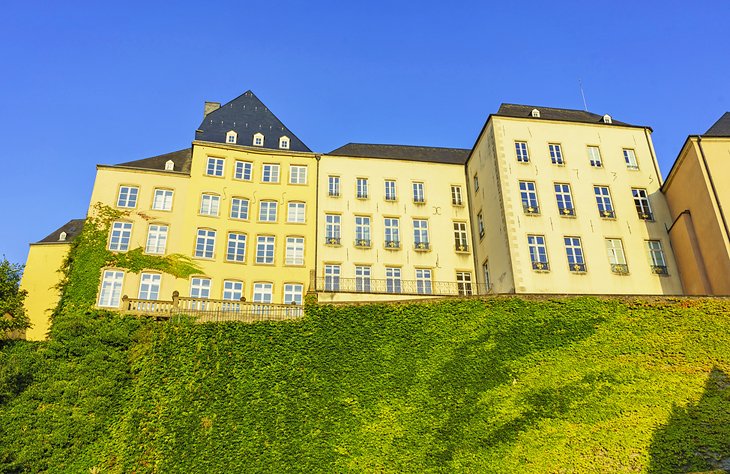
One of the newer attractions in Luxembourg, the Luxembourg City History Museum (Musée d'histoire de la Ville de Luxembourg) was opened in 1996 and provides a fascinating insight into the rich 1,000-plus-year history of the city.
The building itself is a stunning mix of the old and new, combining a number of old homes dating from the 17th and 19th centuries, some with even older medieval sections, such as recently discovered vaulted cellars. These contrast impressively with the museum's striking modern extensions.
Exhibits deal with the early settlement's first inhabitants and its growth and development through the centuries right up to the present day. In addition to its many fine exhibits and displays, the museum is home to a huge elevator and viewing area, which offers wonderful views over the city's historic Grund district. English language guided tours and workshops are also available.
If you're planning on doing some museum-hopping during your stay, be sure to also visit the National Museum of Natural History (Nationalmusée fir Naturgeschicht). This popular Luxembourg City attraction features exhibits dealing with the natural world, both locally and globally.
Address: 14 Rue du St Esprit, 2090 Luxembourg City
Official site: http://citymuseum.lu/en/
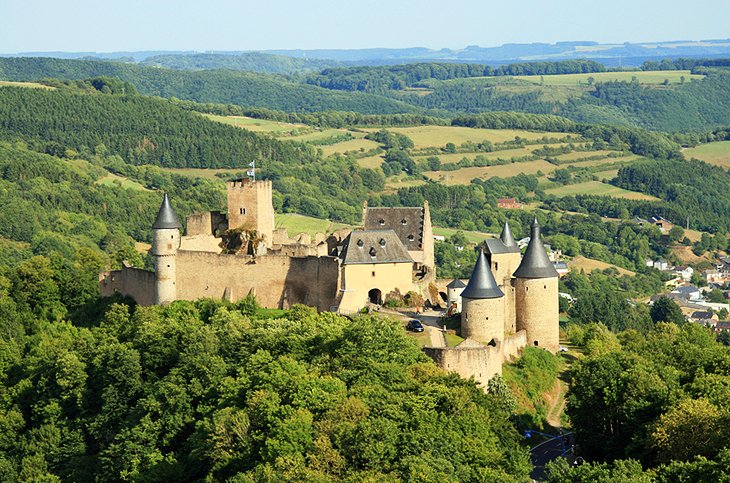
The village of Bourscheid stands high on a plateau and is bordered by the rivers Sûre and Wark. Here, you'll find excellent views and many pleasant hikes to other quaint villages, including Michelau in the Sûre Valley, Welscheid in the Wark Valley, and Kehmen on the plateau. For sun bathers, there are two river beaches at Bourscheid-Plage and Dirbach.
This region of the Ardennes is very much dominated by the ruins of the Bourscheid Castle. This fairy-tale-like fortress dominates the surrounding countryside, and looks down from a rocky peak 137 meters above the Sûre. Dating from the 10th century, the castle has been largely restored and is accessible to visitors. Self-guided audio tours are available, and English language guided tours are also available upon request.
If you are looking for something interesting to do at night, view the castle in the evening when it's lit up. One of the top free things to do in Luxembourg, it's a truly memorable experience, particularly when viewed from the village.
Address: 1 Schlasswee, L-9140 Bourscheid, Luxembourg
Official site: www.castle-bourscheid.lu/wp5/en/
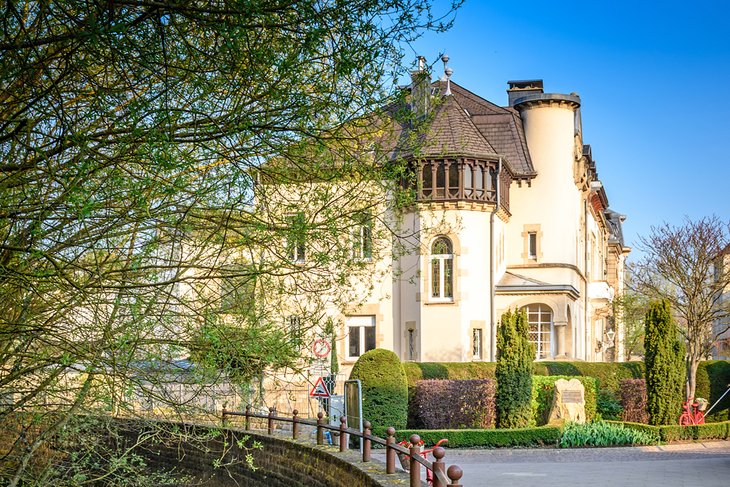
The Moselle region of Luxembourg occupies much of the eastern part of the country and features slopes flanking the majestic Moselle River. The many picturesque villages tucked along the banks of the Moselle recall an ancient charm and are fun to explore and renowned for their varied cuisine produced from locally grown products.
It was also an area much favored by the Romans. As a result, many Roman archaeological remains can be found dispersed throughout the region.
One must-visit in the region is Mondorf-les-Bains, a small town famous for its thermal springs. One of the top tourist attractions here is Mondorf le Domaine Thermal , a large spa complex that houses a health center, sports and leisure club, and hotel. The complex's thermal installations are fed by springs supplying a mineral water of 24 degrees Celsius that is well known for its medicinal qualities.
Afterwards, stroll through Mondorf Park with its large collection of trees, shrubs, and flowerbeds. Other highlights include 18th-century St. Michael's Church , with its furniture and frescoes; the Castel , a little Roman fortress transformed into a hermitage during the Middle Ages; and the Art Nouveau houses.
Address: Avenue des Bains L-5601 Mondorf-les-Bains, Luxembourg
Official site: www.mondorf.lu/?___store=en
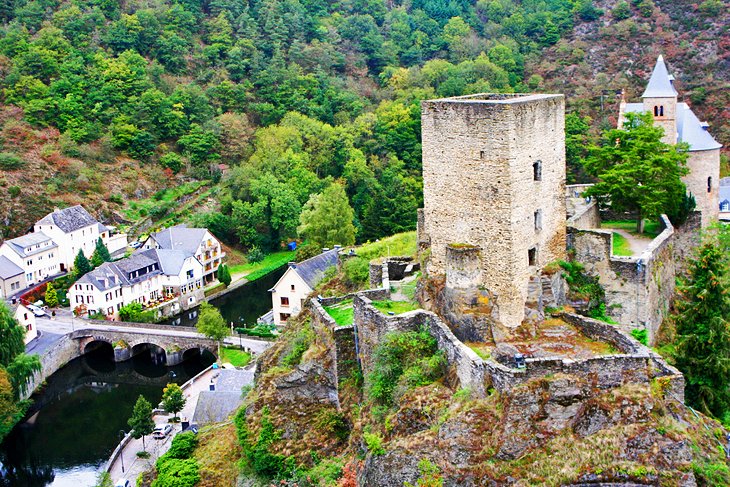
Beautiful Upper Sûre Natural Park (Naturpark Öewersauer) consists of plateaus, narrow valleys with wooded slopes, and the lake of the Upper Sûre dam. It's a popular destination for its leisure activities and water sports, as well as for its wildlife and ecotourism.
Numerous walking tours , including guided and self-guided options, include everything from pleasant circular tours to more arduous treks around the lake. A fun sculpture trail has also been added, as have excellent solar-powered boat tours across the large reservoir. Other fun things to do in Upper Sûre Natural Park include fishing, swimming, sailing, and diving.
The area also possesses a rich cultural heritage. The Nature Park Centre , located in an old cloth mill, includes a museum with interesting artifacts and exhibits relating to both the park and the local area. A number of regular events also take place here, the largest being the biennial Water Art Festival , which attracts more than 200 musicians under a theme of "Rock meets Classic."
A must-visit nearby is Esch-sur-Sûre . This spectacular small village set in the mountains and skirted by the river Sûre and widely regarded as one of the most outstanding sites in the country. The village is dominated by its ruined manor house, built in AD 927 and by the cliffs looking down to the river. The mansion is open year-round with free admission.
Address: Nature Park Centre, 15, Rue de Lultzhausen L-9650 Esch-sur-Sûre, Luxembourg
Official site: www.naturpark-sure.lu/en/
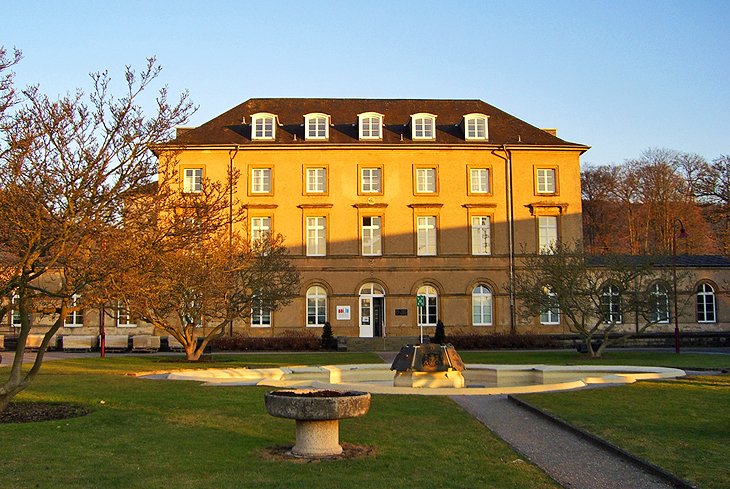
Walferdange Castle (Château de Walferdange), the Grand Ducal residence until the end of the 19th century, lies at the entrance to the Grunewald Wood. Located on one of Luxembourg's principal tourist routes and now a part of the University of Luxembourg, it makes for a great day trip as it's just a short distance from Luxembourg City .
The village of Walferdange itself boasts picturesque scenery due to its location at the junction of the Alzette Valley with its lovely wooded heights. In addition to its great views, the village is well known for its rose gardens. There's also a large archeological site worth visiting that includes a Roman villa and an underground aqueduct.
Walferdange is also become a popular shopping destination, too, since the opening of the Walfer Shopping Center .
Address: 28 Route de Diekirch, 7220 Helmsange, Luxembourg
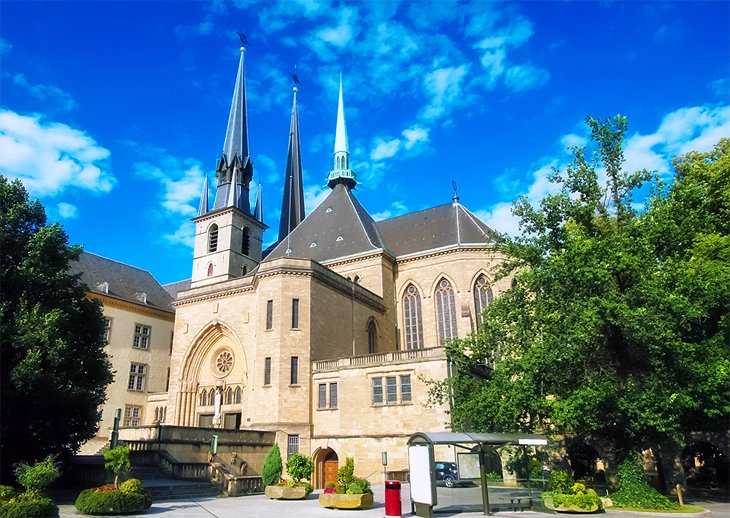
The Roman Catholic Notre-Dame Cathedral (Kathedral Notre-Dame) in Luxembourg City was built in the early 17th century in late Gothic style, with a number of attractive Renaissance features added later. Notable features of what is the country's only cathedral include the two original choir bays, dating from 1621, along with its three distinctive towers, one of which, the west tower, dates from the same period.
Also of interest are the intricate sculpted Baroque angels around the organ tribune, also dating back to the early 1600s. There's also a sobering monument dedicated to the country's WW2 resistance movement and victims of deportation located in the cathedral cemetery.
Visiting Catholics will want to consider attending the cathedral's Sunday evening mass. This regular service usually includes the involvement of the Archbishop of Paris.
Address: Rue Notre Dame, 2240 Luxembourg City
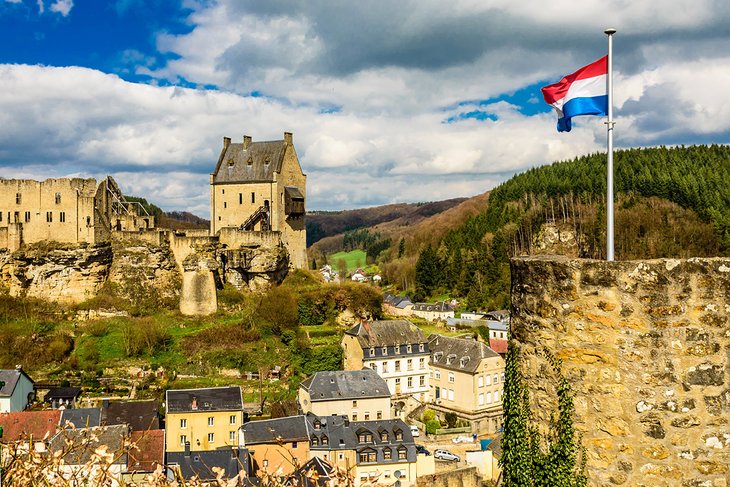
Larochette is a quaint old market town that lies in a narrow, rocky valley surrounded by woods. The town is dominated by two old and partially rebuilt castles that stand on a crag high above the valley of the White Ernz.
The town boasts a superb medieval square as well as a free museum of industry that offers a fascinating look at the area's past as an important textile base and which is open year-round. There are also a number of historical monuments dotted along its many old streets. Be sure to pop into the Neo-Roman church for its Art Nouveau frescoes.
The village is a hiker's haven, with walks for all abilities heading through the woods and countryside. Most lead to notable viewpoints such as the castles of Meysembourg and Nommerlayen, with the remains of a Roman camp at Aalburg. In addition to its fine old hotels and inns, there are also numerous campsites that are welcoming to backpackers.
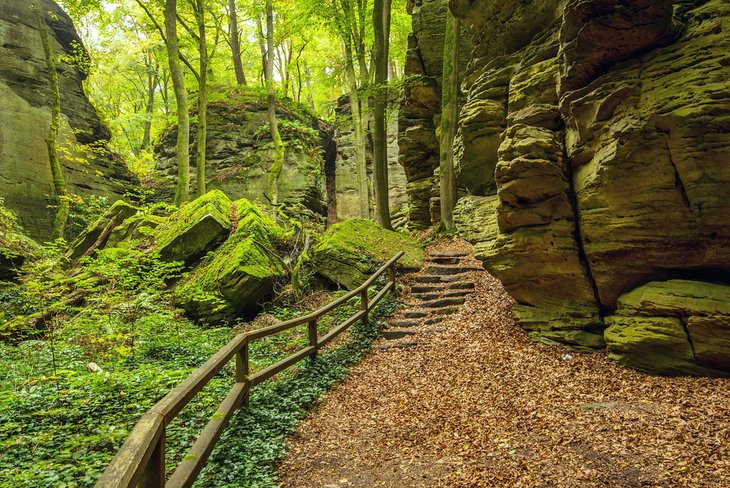
Berdorf is one of the main tourist areas in the Grand Duchy of Luxembourg and lies on a vast tableland overlooking the valleys of the Black Ernz, the Sûre, and the Aesbach rivers.
Numerous well-kept footpaths and hiking trails crisscross the valleys and chasms , where you'll find tall rocky hills with fine views and more than 300 acres of forest. One of the most popular is the 112-kilometer-long Mullerthal Trail, which connects the Berdorf to the picturesque village of Echternach.
Berdorf is also a tremendously popular area for rock climbers, hiking enthusiasts, and campers.
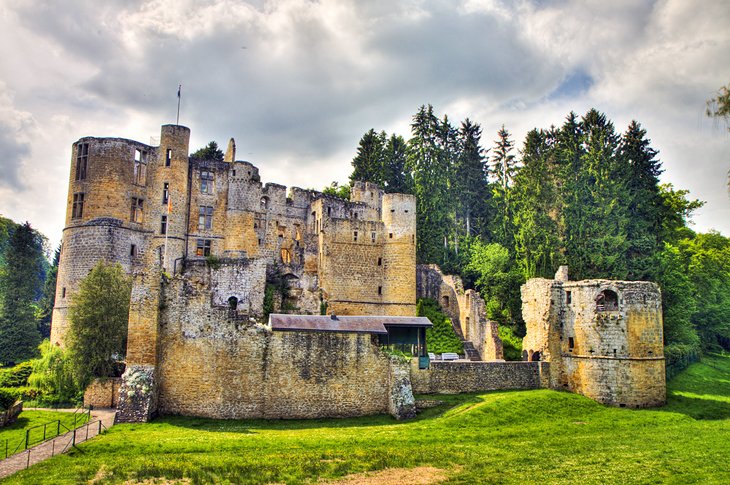
Beaufort lies on a plateau in the Mullerthal region and is well known for its near perfectly dimensioned 12th-century castle, as well as a Neo-Gothic church. Although much of Beaufort Castle (Buerg Beaufort) is now in ruins, it is still wonderful to explore.
Be sure to bring your walking shoes with you. There are a number of footpaths leading through the wooded hills to great views of the surrounding countryside, through spectacular rock formations and the gorges of the Hallerbach and the Saueracht towards Grundhof and Dillingen in the Sûre valley.
Address: 24 Rue du Château, 6310 Beaufort, Luxembourg
Official site: https://beaufortcastles.com
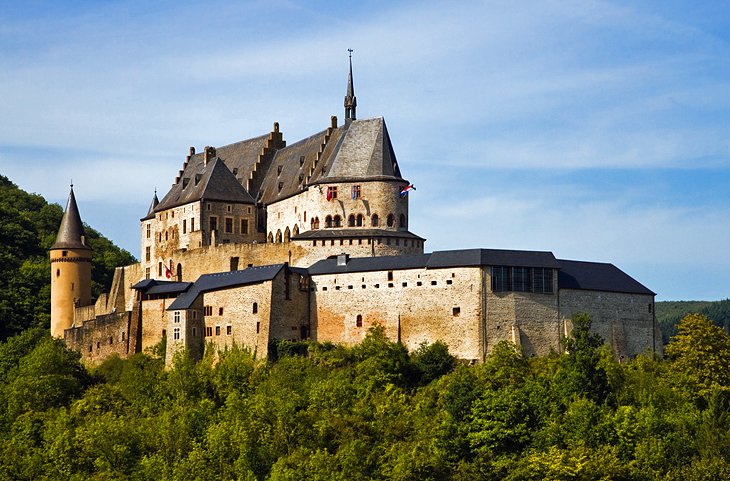
Vianden is an extremely picturesque town straddling both banks of the River Our. Its fine feudal manor , Vianden Castle (Buerg Veianen), dates back to the ninth century and is unrivaled in the Ardennes and Eifel for its architectural significance. Also of note is the medieval outer wall encircling the town with many impressive guard towers.
If you can, try to time your visit to coincide with the annual Vianden Medieval Festival . Held the first weekend of August, this popular family-friendly event is well-known for its jousting and sword fighting tournaments, its market, and knights' camp.
Also worth seeing is the parish church with its two naves. Built in Gothic style in 1248, it has since been completely restored. The former Trinitarian cloister, dating from 1250, houses a lapidary museum that traces the history of the region's once important stone- and gem trades. There's also a small art museum in a former mansion has a number of notable works from 18th- and 19th-century painters.
The house where author Victor Hugo lived during his exile in 1871 now houses a collection of souvenirs of his various visits to Vianden. A large network of walking paths, well maintained and signposted, offers access to the beautiful countryside of the Our Valley, and a chairlift climbs to a height of 440 meters where visitors can enjoy splendid views.
Address: Montée du Château, 9408 Vianden, Luxembourg
Official site: https://castle-vianden.lu/gb/
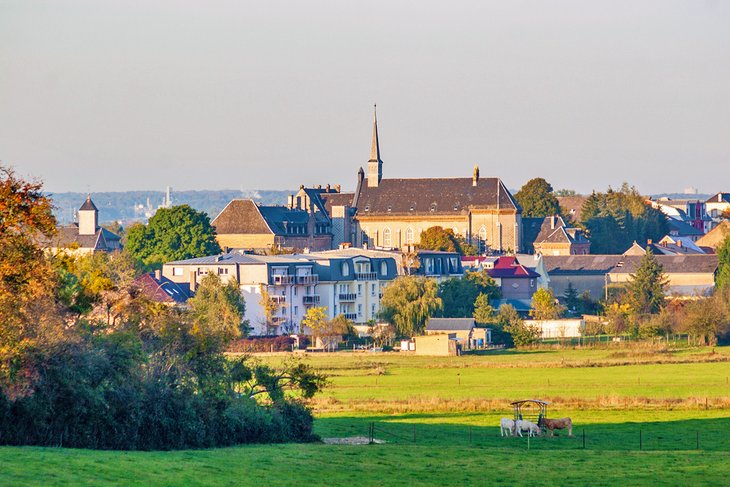
Located in the picturesque town of Bettembourg, just six miles from the capital city and three miles from the French border, Parc Merveilleux attracts thousands of visitors each year.
This amusement center, with its fairy-tale themed attractions and rides, features a game enclosure, playground, mini-train, pony express, mini-golf, restaurants, and concerts, all of them fun for all ages (but especially the kids).
There's also an interesting zoo component that houses a large collection of exotic birds, reptiles, and numerous cute and cuddly mammals.
Address: Rte de Mondorf, 3260 Bettembourg, Luxembourg

More on Luxembourg
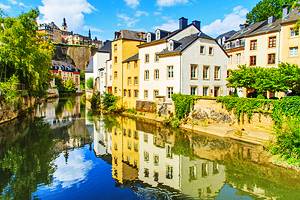
One Day in Luxembourg City – A Free Walking Tour Itinerary
Enjoy a day in Luxembourg on this self-guided walking tour of Luxembourg City. See all the city’s important sites and learn about its historic fortifications.
Table of Contents
Luxembourg City – A UNESCO Site
Luxembourg is one of the smallest and least populated countries in Europe. Its largest city, and its capital, is Luxembourg City. Founded in 963 due to its strategic location, the city was fought over and controlled by different European powers over much of its history.
Luxembourg City’s Old Quarters and its fortifications are a UNESCO World Heritage Site, due to the survival through a millennium of its ancient districts and some of its stone forts and casements.
Walk the city’s streets and see the partially demolished fortifications on a walking tour through Luxembourg City.

Luxembourg Itinerary
This itinerary allows flexibility depending on the amount of time available in the city.
- For a two-hour visit, walk our Luxembourg Walking Tour of the historic city centre.
- For a three-hour visit, add the Pfaffenthal district and North City Centre Walk .
- For a four-hour visit, add the Grund Walking Tour OR visit a Luxembourg Museum .
- With more time, do it all!
Luxembourg Walking Tour
This 2.1 kilometre loop route includes all the city centre’s best sites.
- The Casemates, Bock or Petrusse – ancient military defences carved from the rocks of the valley walls.
- Notre Dame Cathedral – the Gothic-style cathedral with stunning stained glass windows.
- Chemin de la Corniche – top of the fortress walls with incredible views of the Alzette River valley.
- Grand Ducal Palace – official residence of the Grand Duke of Luxembourg.
What to See in Luxembourg City: A Walking Map

The best place to start a walking tour of Luxembourg City is the Place Guillaume II and the Tourist Office .
Luxembourg City Tourist Office
We recommend making this your first stop. The friendly, helpful staff will answer all your questions and provide information about what is happening in the city on the day of your visit. They can help book a guided walk, a visit to the palace or the casemates and more.
For our self-guided walk through the city, step outside into the square.
Place Guillaume II
The central square was named for William II, King of Netherlands and Grand Duke of Luxembourg, who ruled from 1840 to 1849. He granted Luxembourg its first parliamentary constitution in 1848. The square had been the location of a Franciscan church and convent for 500 years. Today it is a central meeting place, used for markets and city events. It is the perfect place to start a city walking tour.
The equestrian statue of William II was erected in the square in 1884 .

Luxembourg City Hall
Construction of the neo-classical Hôtel de Ville began in 1830 and was completed in 1838. This was the site of a Franciscan monastery until the late 18th century. Many of the stones used for city hall construction were salvaged from the monastery’s 13 th -century convent. The lions on the front steps were added in 1938.

Exit the square by the walkway on the left side of the tourist office. Turn left onto Rue Chimay. Walk to Franklin Delano Roosevelt Boulevard at the end of the street and Place de la Constitution.
Constitution Square
This city square sits on the top of the 17th century Beck Bastion, part of the city’s extensive fortifications. The Monument of Remembrance called the Golden Lady or Gella Fra is in the square. This memorial, originally dedicated to the sacrifices of Luxembourg’s WWI soldiers, symbolizes the freedom enjoyed by Luxembourg’s citizens today. In 1940, during the Nazi occupation, the monument was pulled down. Restoration in 1984 returned it to its original splendour.
From the edge of the square, enjoy the view of the lush park in the Petrusse River Valley and the Adolphe Bridge to the west. The beautiful stone double-arch bridge was built around the turn of the 20th century during the reign of Grand Duke Adolphe.

Beside the street is the entrance into the Casemates de la Pétrusse.
Petrusse Casemates
These underground military areas were built under, and into, the original Spanish and French fortifications.
Many of the casemates were bricked up and closed after the Treaty of London in 1867, though 17 kilometres of tunnels still remained. Over the last 150 years they have been used for many things. The casements were first opened to visitors in 1933. Recently major upgrades were made to improve the safety of the casements and visitors are welcome again for guided tours. Buy Petrusse Casemates tickets online or at the Luxembourg City Tourist Office.
The Forum of Contemporary Art is about 200 metres to the west on Franklin Delano Roosevelt Boulevard.
Cross the boulevard and walk north on Rue de l’Ancien Athénée to Rue Notre Dame. Turn right and walk about 70 metres to Cathédrale Notre-Dame’s unassuming entrance.
Notre Dame Cathedral
The church was built by the Jesuits in the 1600s. While it was built in late Gothic style architecture, many of its components and ornaments are in the Renaissance style. It became a cathedral in 1870 and was enlarged in the 1930s. Its altar and stained glass windows are stunning.
Exit the cathedral onto Rue Notre Dame. Turn right and walk to Pl. de Clairefontaine. Turn right again and walk to the Monument à la Grande-Duchesse Charlotte.

Grand Duchess Charlotte Monument
The monument was designed by Paris sculptor Jean Cardot in honour of Charlotte, the Grand Duchess of Luxembourg who reigned from January 1919 to November 1964.
Walk southeast to Rue du St. Esprit. The Luxembourg City History Museum is about 40 metres to the north along Rue du St. Esprit.
Turn left and walk to Plateau du Saint-Esprit.
Saint-Esprit Square
The buildings which ring the courtyard contain the district courts of Luxembourg. Walk to the east side of the courtyard for beautiful views of Luxembourg’s Grund district and the river valley below.
The elevators in the middle of the square descend to the parking garage and a walkway leading to the street above the Alzette River.
Straight ahead, Rue Munster crosses the Grund Bridge into the Grund district. If time permits, continue straight ahead on our Grund Walking Tour .
Otherwise, turn left onto Mnt du Grund, climbing to the Spanish Grund Gate. Walk about 20 metres beyond the gate to a set of stairs on the right. Take the stairs to the Chemin de la Corniche. Turn left.

Chemin de la Corniche
This is the top of the 17 th -century city walls built by the Spanish and the French. Its viewpoints offer splendid panoramas across the river valley to Grund’s ancient buildings and the Bock Promontory.
The pedestrian street ends at Victor Thorn Boulevard. Turn right and walk to the Bock Promontory.
Monument of the Millennium on Bock Promontory
Count Sigfried of Ardenne, the first of the Luxembourg Counts, built his fortress on top of this ridge in 963. Castle Bridge was added in 1735 linking the defences of the promontory with the rest of the city.
In 1963, Luxembourg City wanted to commemorate its millennium and chose the promontory as a fitting spot for a monument. While working on the site, the walls of the first castle were discovered. Plans changed. The walls were partially reconstructed and restored as a very fitting way to celebrate the 1000 year anniversary.

The promontory still offers the same expansive, panoramic views that it has for centuries. Look to the south over Grund. It’s the perfect spot for photos of the Wenceslas Wall , the stone Stierchen Bridge over the Alzette and Neumünster Abbey .
From Casemates Memorial Point on the north side of the promontory, see the Pfaffenthal district along the Alzette River below.
The Kirchberg plateau, to the northeast, is Luxembourg’s banking and financial centre. The Grand Duke Jean Museum of Modern Art’s building was designed by IM Pei, designer of the Louve’s glass pyramid. The MUDAM showcases modern art, installation and experiential art, ranging from photography to fashion design. At Fort Thüngen , one of the city’s fortresses, the Dräi Eechelen Museum explores the history of the fort and Luxembourg. It focuses on the figures who’ve shaped the city and country over 500 years.

Bock Casemates
The first casemates were dug into the rock of the Bock Promontory by the Spanish in 1644. The set of rooms and passages were carved for military purposes to defend the city. In the 1680’s French engineer Vauban expanded the 23 kilometre long casements. When the Austrians ruled the city in the mid-1700s, they added even more rooms. The casemates have held everything a city needed to survive: garrisons, bakeries, slaughterhouses and acted as bomb shelters in World Wars I and II.

If time permits, enjoy our walk exploring Pfaffenthal and the northern City Centre .
Otherwise, leave the promontory and walk back to Chemin de la Corniche. Turn left onto Rue Sigefroi and see Église Saint-Michel ahead.
Saint Michael’s Church
This Catholic Church was built in the 17th century. The site is the city’s oldest religious site, where the first church was built in 987.
At the next intersection Rue Large is on the left, the ancient fish market is straight ahead and the Luxembourg Museum of National History and Art is to the right.
Turn left onto Rue Large and then a quick right to Rue de l’Eau. Walk to Rue du Marche-aux-Herbes. Turn right and walk to the Palais Grand-Ducal.
Grand Ducal Palace
The oldest part of the palace was built in the Renaissance style and completed in the 1570s. It was added to in the 1740s. The palace was thoroughly restored in the early 1990s. During the summer, guided tours of the palace are available.

Across from the palace is a great place to end the tour, the Chocolate House Nathalie Bonn . Its “Hotchocspoons” are available in almost any flavour imaginable. Add some unique sweetness to coffee or hot milk. The patio is the perfect spot to take a break and people watch while enjoying a sweet treat.
To return to Place Guillaume II, walk north to Rue de la Reine, turn right and walk straight ahead, back to the square and the start of the walk.

Grund Walking Tour
Grund is one of the city’s oldest neighbourhoods, dating back to the 14 th century, in the heart of the ancient fortifications.
Begin at the Grund Bridge over the Alzette River. Walk across the bridge on Rue Munster. Turn left and continue to follow Rue Munster for about 70 metres.
The National Museum of Natural History is straight ahead at the end of the street.
Turn right onto Rue de Treves and walk for about 200 metres. The buildings on the left are a former Benedictine Abbey.

Neumünster Abbey
Built in 1606, the church and its four wings enclosed an inner courtyard. The abbey ceased operation at the end of the 18 th century. The Church of St. John continued as a Catholic Church. The rest of the abbey buildings were converted for use as a military hospital and later became a prison. They reopened 2004 as a cultural and conference centre after extensive renovations.
Turn left at the eastern corner of the abbey buildings. Walk to the stone Stierchen Bridge and across the Alzette River to a stone tower and wall.
Wenceslas Wall
The wall is part of the ancient city fortifications. Originally, the wall was almost a kilometre long with 37 towers and 15 gates. Today this small remaining piece is integrated into the beautiful gardens at the base of the Bock Promontory.

Follow the wall to the base of the promontory. Turn left and walk the pathway to Rue Sosthene Weis. Turn right walking under the Castle Bridge . Take the first left and climb the walkway and stairs to Victor Thorn Boulevard and Mnt de Clausen. Walk east on Mnt de Clausen to the Monument of the Millennium and return to the main Luxembourg Walking Tour .
Pfaffenthal and Northern City Centre Walk
The Pfaffenthal district was an important area to the early city’s tanners. They produced leather for the glove trade which was a huge source of income for the city. Many workshops were set up downstream of the city and close to the river, where power could be generated easily.
Begin at the Bock Promontory and walk along Mnt de Clausen and Victor Thorn Boulevard to the Spanish Turret . Walk straight ahead onto Mnt de Pfaffenthal and down into Pfaffenthal. Enjoy this quiet area.

Continue onto Rue Laurent Ménager. Turn left on Rue du Pont, a total distance of about 700 metres.
The Ascenseur panoramique du Pfaffenthal is at the west end of Rue du Pont.
Panoramic Elevator
This glass-sided elevator carries passengers seventy-one metres between Pfaffenthal in the valley and the Pescatore Park above.
At the top, the viewing deck offers incredible 180 degree views over the valley. To the west, the 350-metre-long, red Grand Duchess Charlotte Bridge stands out on the horizon. It connects the city centre to the Kirchberg Plateau straight ahead. To the east is the Bock Promontory.
Walk to the end of the hallway and exit into Pescatore Foundation Park . Follow the path to Avenue Jean-Pierre Pescatore. Turn left and walk to Rue Willy Goergen. Turn left again, walking about 20 metres to Rue des Capucins. Turn right and walk to Église Saint-Alphonse which is on the left.
Saint Alphonse Church
The church was built in the 1850s on the site of a former convent. The stained glass windows were donated by the city’s wealthy families.
Capucins Street becomes a pedestrian-only street south of the church. It is part of a car-free area about 3 by 4 city blocks in the city centre. Enjoy a wander through its shops and restaurants.

Capucins Street ends at Place d’Armes . On the south side of the square turn left and follow Rue du Cure. Walk about 200 metres to Rue du Marche-aux-Herbes.
The Luxembourg Museum of National History and Art and St. Michael’s Church are two blocks further east.
Turn left and walk to the Grand Ducal Palace and the end of the main Luxembourg Walking Tour.
Luxembourg City Museums
The city centre has a number of excellent museums to learn about the history and art of both the country and the city.
Luxembourg City History Museum
The museum, on Rue du St Esprit just south of Rue du Marché-aux-Herbes, occupies several former houses built from the 17th to 19th centuries. The buildings are ingeniously linked together over five floors with some quirky spaces to present the history of Luxembourg City. Lower levels cover its industrial, handicraft and commercial growth. Upper floors hold temporary exhibits. It is a unique presentation and well worth a visit. Allow at least an hour.

Luxembourg Museum of National History and Art
The museum’s large collection of art, archaeological artifacts and coins presents the history of the city and the Grand Duchy. It is in the historic centre of the old town, the site of the historic fish market at the corner of Rue Sigefroi and Rue Wiltheim. It is free to see the permanent collections.
Forum of Contemporary Art – Casino Luxembourg
This building was built in the late 19th century and houses the Forum of Contemporary Art. The museum was founded in 1996. Walk through the exhibits on your own or take the guided tour.
While not in the city centre, the Museum of Natural History is located in nearby Grund.
National Museum of Natural History
The museum houses the country’s most important zoological, botanical, paleontological and mineralogical collections. Only the best examples are chosen for display in its excellent exhibits. This is a great place to take the kids (and, as a bonus, they get in free).

Day Trip to Luxembourg
A visit to Luxembourg City can easily be completed in one day making it a great day trip from neighbouring countries. If you need more time to visit, you can always stay overnight in the city.
Day Trip to Luxembourg from Paris
From Paris, France, a one-way trip to Luxembourg City, by car, is about 375 kilometres and 4 hours . Both bus and train service is available. Train travel is the faster option.
Day Trip to Luxembourg from Brussels
The one-way journey from Brussels, Belgium to Luxembourg City is about 230 kilometres and 2.5 hours by car. Train and bus service is available.
Day Trip to Luxembourg from Frankfurt
The one-way journey is about 250 kilometres and 3 hours from Frankfurt, Germany to Luxembourg City. Train and bus service is available.
Day Trip to Luxembourg from Maastricht
By car, the one-way journey between Maastricht, Netherlands and Luxembourg City is about 200 kilometres and 2.25 hours. Train and bus service is available.

Interested in more Itineraries? Sign up here.
(No spam. Just great travel tips.)

Valerie Vanr
Valerie is the Co-founder of AvrexTravel.com. Val enjoys travel photography and writing informative City Walking tours.

How to Spend Three Days in Luxembourg: A Long Weekend Travel Itinerary
By: Author Sophie Nadeau
Posted on Last updated: 4th March 2023
Categories Itineraries , Luxembourg
Last Updated on 4th March 2023 by Sophie Nadeau
Though Luxembourg may be small, the country should not be underestimated by any means… After all, both the city, and country of Luxembourg are absolutely packed with things to do! Here’s a suggested itinerary for how to spend three days in Luxembourg …
Thanks to its international scene, there are plenty of connecting flights into the country’s main airport, making it the perfect European escape.
A long weekend is just the right amount of time for exploring this lovely little country in plenty of depth. After all, some of the best reasons to visit Luxembourg include its countless castles, wonderful foodie scene, and wealth of history!

10:00-13:00 Explore the Grund and wander down the river
13:00-14:00 enjoy lunch at njord, 14:00-15:30 visit the casemates bock, 15:30-18:00 see the grand ducal palace and the newer parts of town , 18:00-22:00 free time and dinner, 10:00-13:00 visit a museum (or two) , 13:00-14:00 enjoy lunch at the ca(fé)sino, 14:00-15:00 galerie am tunnel, 15:00-18:00 do a self-guided café tour.
- 18:00-19:00 See a park (and maybe some live music)
19:00-22:00 Free time and dinner
Option 1: must see castles tour, option 2: castle trail & the oldest town in luxembourg, day 1: history of luxembourg.
Day one in Luxembourg is all about understanding the history of the country. From its humble beginnings as a rocky uninhabited outcrop to the thriving capital city it is today, Luxembourg is rich in history and, as a result, has plenty to see and do!
The Grund is one of the oldest parts of the city, and arguably one of the prettiest. Lying in the valley below the cliff face where the city of Luxembourg began, the Grund has even been listed as a UNESCO world heritage site.
The façades of the houses aren’t allowed to be changed in the Grund, and the homes can only be painted in approved government colours. Wander around this picture perfect area and spend hours getting lost in the maze of streets that form the Grund.
Just make sure you remember your camera though, you’ll want to take plenty of photos! If you want to get to know the city better together with a local guide, then consider booking a walking tour like this one.
Luxembourg is incredibly international, and so you’ll find delicious food from across Europe and beyond. One café I particularly enjoyed visiting was Njord ( address: Marché-Aux-Poissons, 1247 Luxembourg ). Here you’ll find plenty of salads, sandwiches, refreshing beverages and vegetarian options!
Luxembourg City began as a fortified castle atop of the Casemates Bock. Though none of the first castle remains, many of the original 23km of tunnels that were hewn from the rock beneath the castle do.
Today, 17 km of tunnels stretch out through the rock face and many of them can be explored in the Spring, Summer, and Autumn months.
As you may well know, Luxembourg doesn’t have a King or Queen. Instead, it is a Grand Duchy, meaning that the leader of the country is a Grand Duke or Duchess.
The current Grand Duke is named Henri and he has held the title since his father abdicated in 2000. Luxembourg not only has its own language but it also is the only Grand Duchy of its kind in the world!

There are plenty of food options in Luxembourg (as you may have noticed while walking around the Grund this morning) . If you love wine, then make sure to try a local wine from the Moselle Valley at dinner tonight!
Otherwise, local Luxembourgish foods include delights such as potato pancakes served with apple sauce and plenty of pastries. Please note that much of Luxembourgish cuisine is quite meat heavy, though most restaurants and eateries in town serve up at least one vegetarian dish!
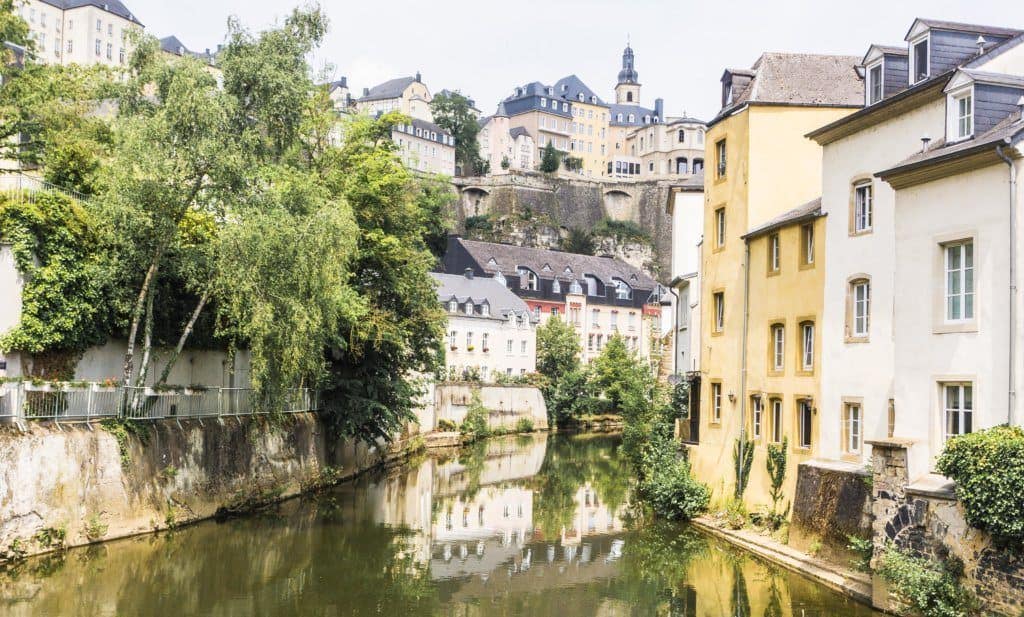
Day 2: Culture of Luxembourg
Day Two in Luxembourg is focused around getting to know the food, music and culture scenes that the city is so famous for…
There are seven main museums in Luxembourg; all conveniently located along a stretch known as ‘museum mile’. From the Museum of Modern Art-Mudam to the Natural History Museum, you’re such to find something you’ll enjoy seeing!
The Ca(fé)sino is a newly refurbished with a bar and restaurant. It is also home to a forum of Art, and well worth a look around!
Though you may have visited a few museums this morning, the Galerie am Tunnel is a great example of Luxembourg’s rich heritage and international scene. After all, throughout the country, it’s common for people to be multilingual (speaking three or four languages fluently is fairly common.)
There are plenty of lovely pastries, quirky cafés and cobbled lanes in the newer parts of the city. Enjoy chocolates, good coffee and heavenly pastries during a self-guided tour of many of the cafés on offer.
Suggested Cafés: Kaale Kaffi (Vintage store and coffee shop) Pâtisserie Cathy Goedert (pastry store) Léa Linster Delicatessen (adorable pastry store with indoor & outdoor seating)
18:00-19:00 See a park (and maybe some live music)
Unlike other European capitals, Luxembourg is full of green spaces, just waiting to be discovered. Throughout the summer, there are plenty of concerts in many of the parks throughout the city. If you visit on the 23rd June (the Grand Duke’s ‘Official’ Birthday), then be prepared to see outdoor bars, even more live music and fireworks.
When it comes to good food in Luxembourg city, you’re pretty much spoilt for choice! Head to the main square (Place d’Armes) to enjoy a meal surrounded by beautiful architecture and live music.

Day 3: Get a Feel for the rest of the Country
If you’re planning to spend three days in Luxembourg, then make sure you escape to the countryside at least once! Day Three is all about getting a feel for the rest of the country.
Take a day trip away from the city center itself and experience castles, local food and plenty of lush green forests. Whether you’re more interested in castles or prefer to see more natural locations, then there are numerous options for today’s itinerary.
Public transport is fast and reliable throughout the country. Best of all, public transport in Luxembourg is free- it’s one of the best facts about Luxembourg that I tell everyone about!
If you’ve purchased a Luxembourg Card Pass ( you can purchase one here ), then many attractions are free (even outside of the city centre). Alternatively, it’s possible to rent a car with a valid driving license. Check car rental comparison prices here.
Like most of Europe, Luxembourgers drive on the right-hand side of the road. If you choose to rent a car, then it’s possible to visit even more little towns and villages.
I personally chose to take public transport as I’m from the UK and don’t feel 100% confident on driving (on what feels like) the wrong side of the road to me!
If you are visiting Luxembourg for the first time and want to get a glimpse of several castles but are running short on time, then you might consider booking this Hop On Hop Off Castles & Nature Day Tour from Luxembourg City.

With just one day to explore the Luxembourgish countryside, you’re going to want to pack in as many activities as possible. If I were to choose one place to visit in Luxembourg, it would be Vianden !
A fairytale castle towers above a fairytale town. The magical settlement has long attracted visitors from far and wide… even the famous French author Victor Hugo. A visit to Vianden can easily be combined with a trip to nearby (30 minute drive away) Clervaux .
Here, you’ll find a beautiful church, monastery, and a restored castle. The castle is home to the Family of Man (a photography exhibition curated in the 1950s), a model museum demonstrating the castles of Luxembourg, and a museum dedicated to the battle of Ardennes.
Your other option for a suggested day trip is… more castles! After rising (fairly) early, I easily managed to fit three destinations into one day trip; all by taking public transport! The buses operate between towns and villages in the country every couple of hours, giving you ample time to explore each destination.
Firstly, you’re going to want to take the bus to Larochette. Just half an hour from Luxembourg city by bus, you’ll find a sweet little village with the ruins of a fortified castle. Perched high on the hillside, the ruins of Larochette castle offer magnificent views over the surrounding countryside.
Next, there is a bus headed from Larochette to Beaufort. Here, in Beaufort, you’ll find two castles. One lies in ruins, the other is a well preserved Renaissance-style Château. Though the fortified ruins of Beaufort Castle can be visited by a self-guided tour, a walk around Beaufort Renaissance Castle is by guided tour only.
From the castles of Beaufort, you can easily catch a bus headed to Echternach, the oldest settlement in Luxembourg. Once, at Echternach , you’ll find little cafés, cute eateries and plenty of history. Half an hour walk from the main town, you’ll find the ruins of a Roman Villa.
Inside the town of Echternach itself, you can see the monastery which founded the town in the 7th-Century, as well as a prehistoric museum. Buses run fairly regularly from here back to Luxembourg city. The journey is roughly an hour long.

Pin How to Spend Three Days in Luxembourg for later!

Sophie Nadeau loves dogs, books, travel, pizza, and history. A Francophile at heart, she runs solosophie.com when she’s not chasing after the next sunset shot or consuming something sweet. She splits her time between Paris and London and travels as much as she can! Subscribe to Sophie’s YouTube Channel.
This site uses Akismet to reduce spam. Learn how your comment data is processed .
Eric Wilson
Tuesday 12th of February 2019
There was really a great fun everyone missed.
Laura Pendleton
Thursday 12th of July 2018
Great, informative article! Thank you for all the work you put into these. I'll definitely be checking out your blog more when I need some advice! And are you ever interested in featuring guest writers? ;) I'm an American based in Prague and I love travelling as much as possible too.
Luxembourg: Your Perfect Weekend Escape - Gallop Around The Globe -
Monday 28th of August 2017
[…] How to Spend Three Days in Luxembourg – Solo Sophie […]
Esther | Your Dutch Guide
Friday 21st of July 2017
I spent a long weekend in Luxembourg as well a few years ago and totally loved it. I also spent 2 days in the city and 1 day exploring the rest of the country, I went wine tasting. It was great fun!!

IMAGES
VIDEO
COMMENTS
Visit Luxembourg City! Luxembourg City Experiences What strikes many visitors to Luxembourg City is the gorge splitting the centre in two. The deep valleys and high cliffs were the area's strength when "Lucilinburhuc" (small castle) was established here in 963. For almost a thousand years, the area housed a fortress that became so strong it was ...
In the city center, Luxembourg's rather tumultuous history can be explored at the fascinating cliffside Musée d'Histoire de la Ville de Luxembourg. After soaking up the city's stirring past, you can then see up close how Luxembourg defended itself at the Bock Casemates - a complex network of subterranean tunnels and rocky fortifications ...
Luxembourg City Top Attractions in 2 Hours. see the best of Luxembourg City. Day 1. 10:00 Notre Dame Cathedral. . 12 mins. 10:55 Pfaffenthal Lift. . 38 mins.
Visit. With five tourist regions, four natural parks and a multilingual cultural offer, Luxembourg offers visitors a fascinating set of contrasts: history and modernity, ancient castles and contemporary architecture, lakes and forests and a cosmopolitan capital in the heart of Europe.
The Grand Ducal Palace in Luxembourg City is a spectacular piece of architecture, built in the 16th century during the Flemish Renaissance. It's the official residence of the Grand Duke and the royal family, and the palace's interior design is an intriguing combination of styles - an interplay between Romantic and Medieval Gothic styles, with modern light designs by the German industrial ...
Majestically set across the deep gorges of the Alzette and Pétrusse rivers, Luxembourg City is one of Europe's most scenic capitals. Its Unesco-listed Old Town is a warren of tunnels, nooks and crannies sheltering some outstanding museums, as well as lively drinking and dining scenes. The city is famed for its financial and EU centres, making ...
Luxembourg City Top Attractions in 2 Hours. A Quick Visit To Luxembourg City. If You Only Have A Couple Of Hours To Spend, Use This Itinerary To See The Top 3 Attractions Luxembourg City Has To Offer. If you enjoy Walking or Biking, Luxembourg city walking and wine tasting tour and Romantic Luxembourg: Outdoor Escape Game are great ways to ...
Luxembourg Activities - 78 Suggested Activities | Visit A City. Top Activities. Walking & Biking Tours. Cultural & Theme Tours. Tours & Sightseeing. Private & Custom Tours. Luxury & Special Occasions. Tours by Duration. Tours, Sightseeing & Cruises.
per adult (price varies by group size) The Best of 3 Hours Walking Tour in Luxembourg. 1. Historical Tours. from. $241. per adult (price varies by group size) Private bike tours experience the city of Luxembourg Donation-based. 9.
If you'd like to see a Luxembourg City map, you can find one here. Now let's get on with that perfect Luxembourg itinerary. 1. Explore the Old Quarters and Fortifications. One of the most popular things to do with 1 day in Luxembourg City is to explore the Old Quarters and Fortifications. Between the 16th and 18th centuries, Luxembourg was ...
Visit the Christmas markets. Winterlights at Place d'Armes. In December, the center of Luxembourg City feels like one giant Christmas market. In just five minutes from Place de la Constitution to Place d'Armes, you can visit three different festive areas. The Christmas markets are a fun place to hang out.
See All Luxembourg City Sightseeing, Tours & Activities. See Luxembourg City in one day using these itineraries which focus on top attractions. All the itineraries include the must-see sites like Notre Dame Cathedral, Pfaffenthal Lift and Luxembourg American Cemetery Memorial.
4. Grand Ducal Palace, Luxembourg City Grand-Ducal Palace, Luxembourg City. The Grand Ducal Palace (Groussherzogleche Palais) is a must-see landmark in Luxembourg City. This gorgeous Renaissance building dates from 1572 and serves as the official residence of the country's reigning monarch, Grand Duke Henri.It was built as the city's original city hall in 1572, a role it served until 1795 ...
Free Cancellation. Independent. Tour. Walking Tour. $6.49. from. Details & Booking. Plan your visit to Luxembourg City with complete information on all Luxembourg City activities - Luxembourg city walking and wine tasting tour, Romantic Luxembourg: Outdoor Escape Game, Luxembourg cit.
Day Trip to Luxembourg. A visit to Luxembourg City can easily be completed in one day making it a great day trip from neighbouring countries. If you need more time to visit, you can always stay overnight in the city. Day Trip to Luxembourg from Paris. From Paris, France, a one-way trip to Luxembourg City, by car, is about 375 kilometres and 4 ...
Day 2: Culture of Luxembourg. Day Two in Luxembourg is focused around getting to know the food, music and culture scenes that the city is so famous for… 10:00-13:00 Visit a Museum (or two) There are seven main museums in Luxembourg; all conveniently located along a stretch known as 'museum mile'.
Plan your visit to Luxembourg City with complete information on all Luxembourg City Tours & Sightseeing - Luxembourg city walking and wine tasting tour, Luxembourg: Nature & Castle Day Trip, Luxembour
Interactive map of Luxembourg City with all popular attractions - Pfaffenthal Lift, Notre Dame Cathedral, Le Chemin de la Corniche and more. Take a look at our detailed itineraries, guides and maps to help you plan your trip to Luxembourg City. . Interactive map of Luxembourg City with all popular attractions - Pfaffenthal Lift, Notre Dame ...